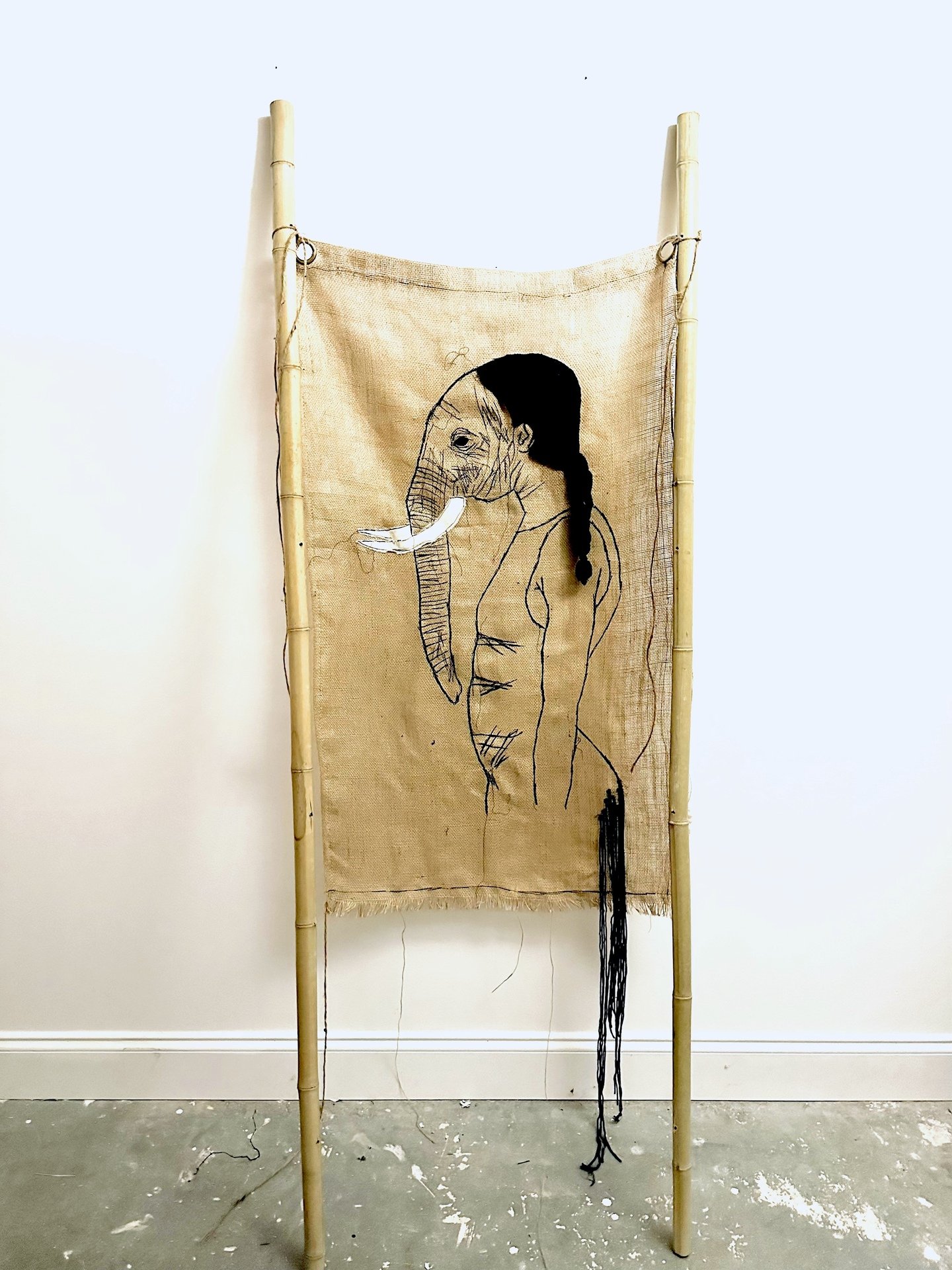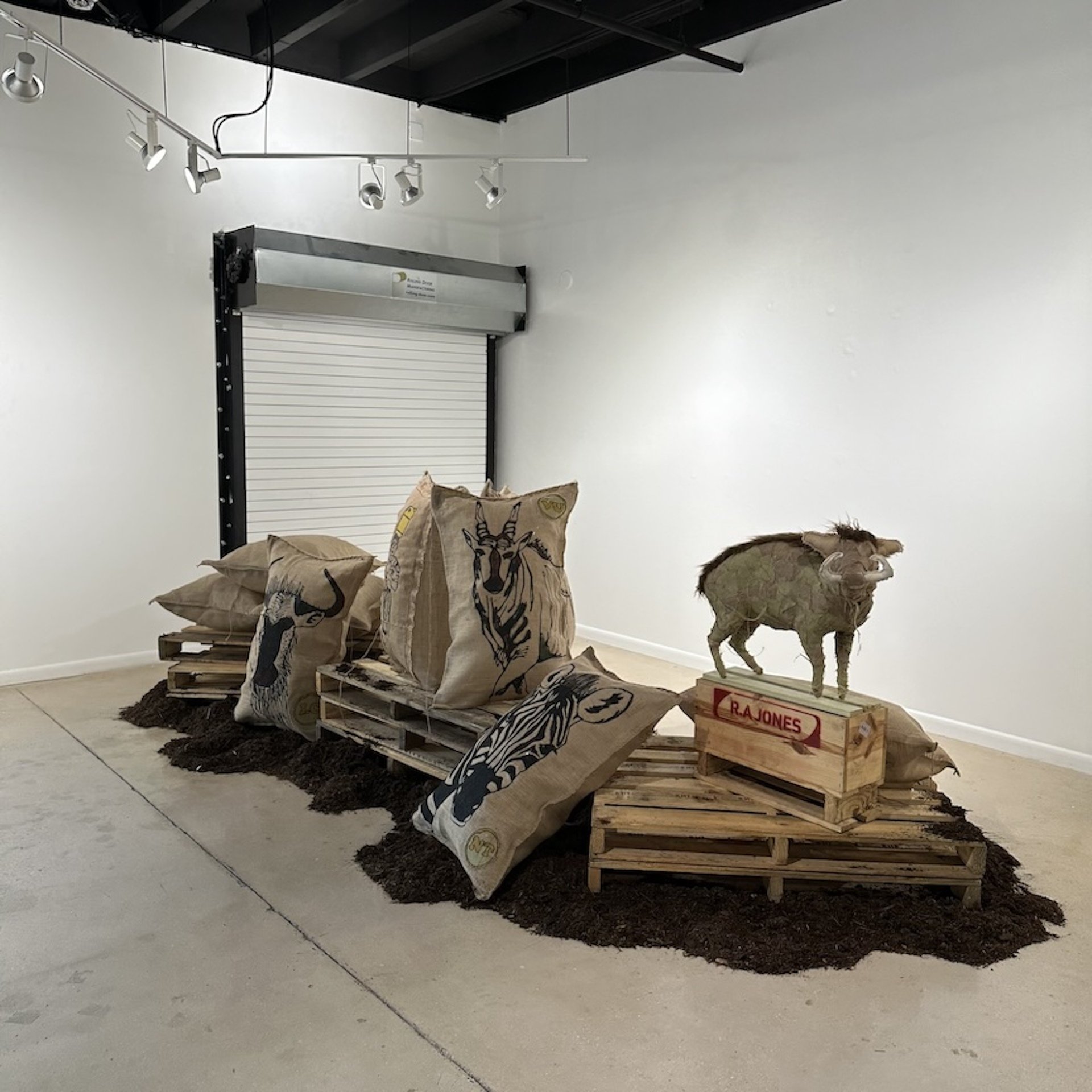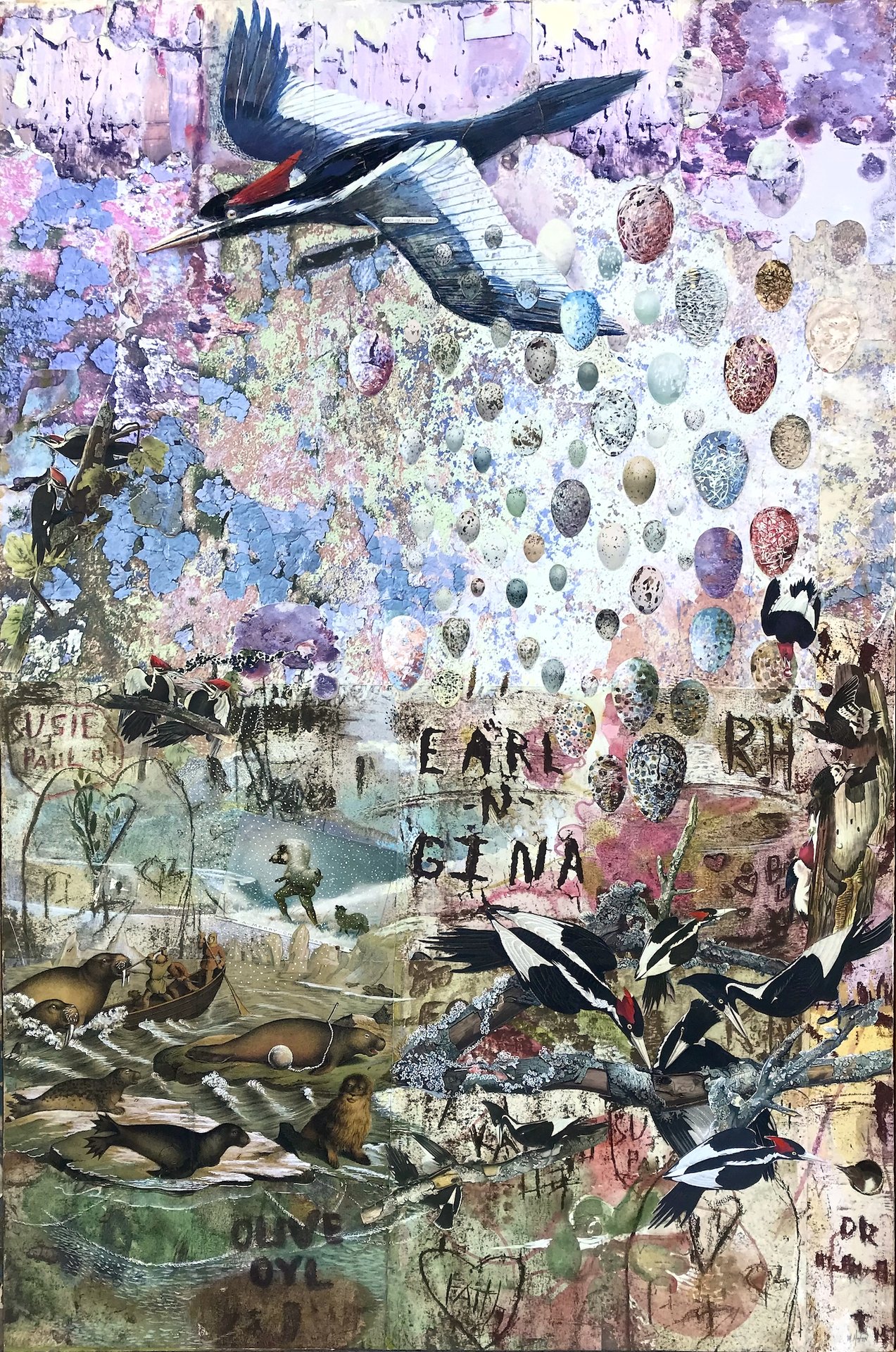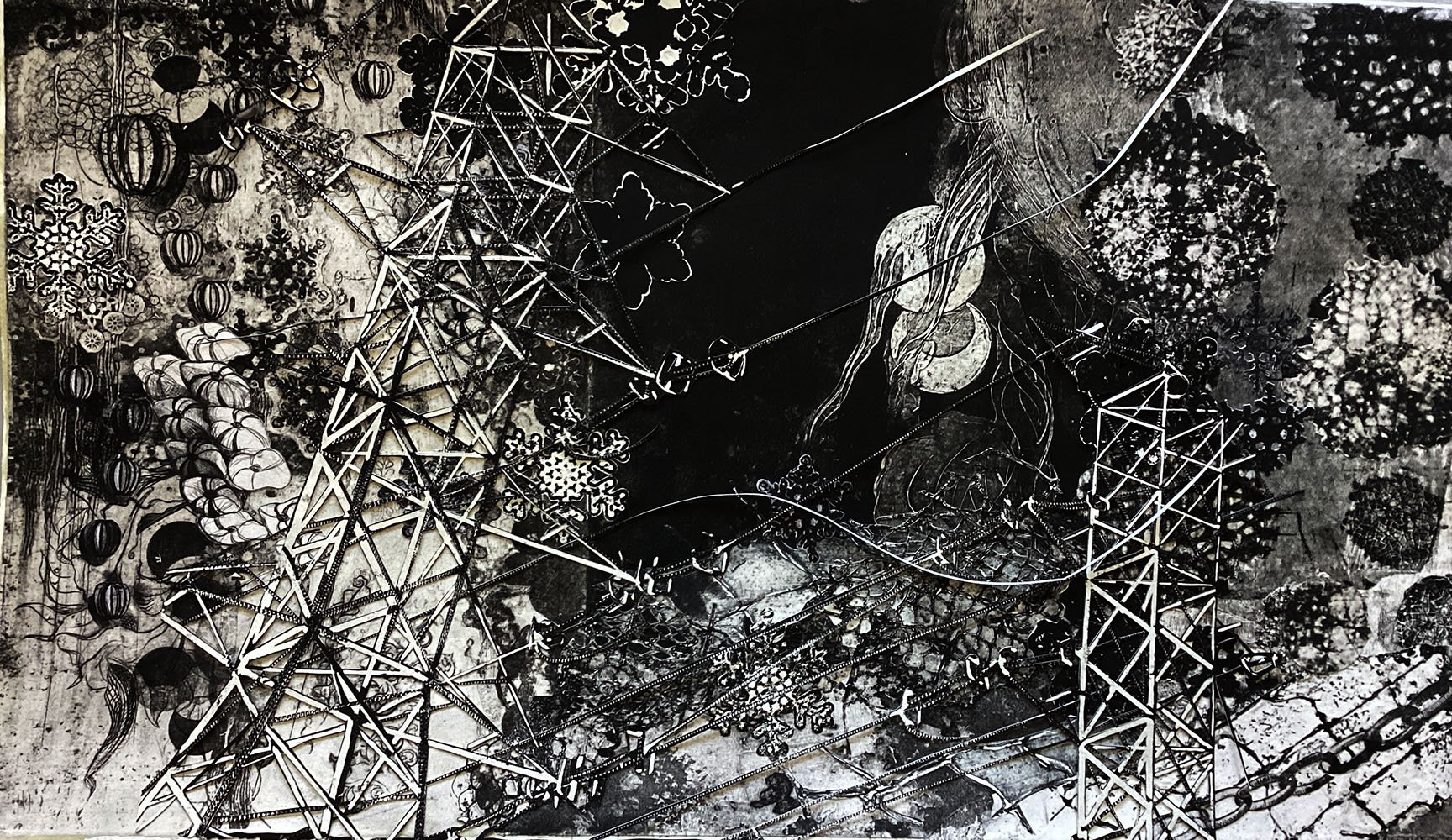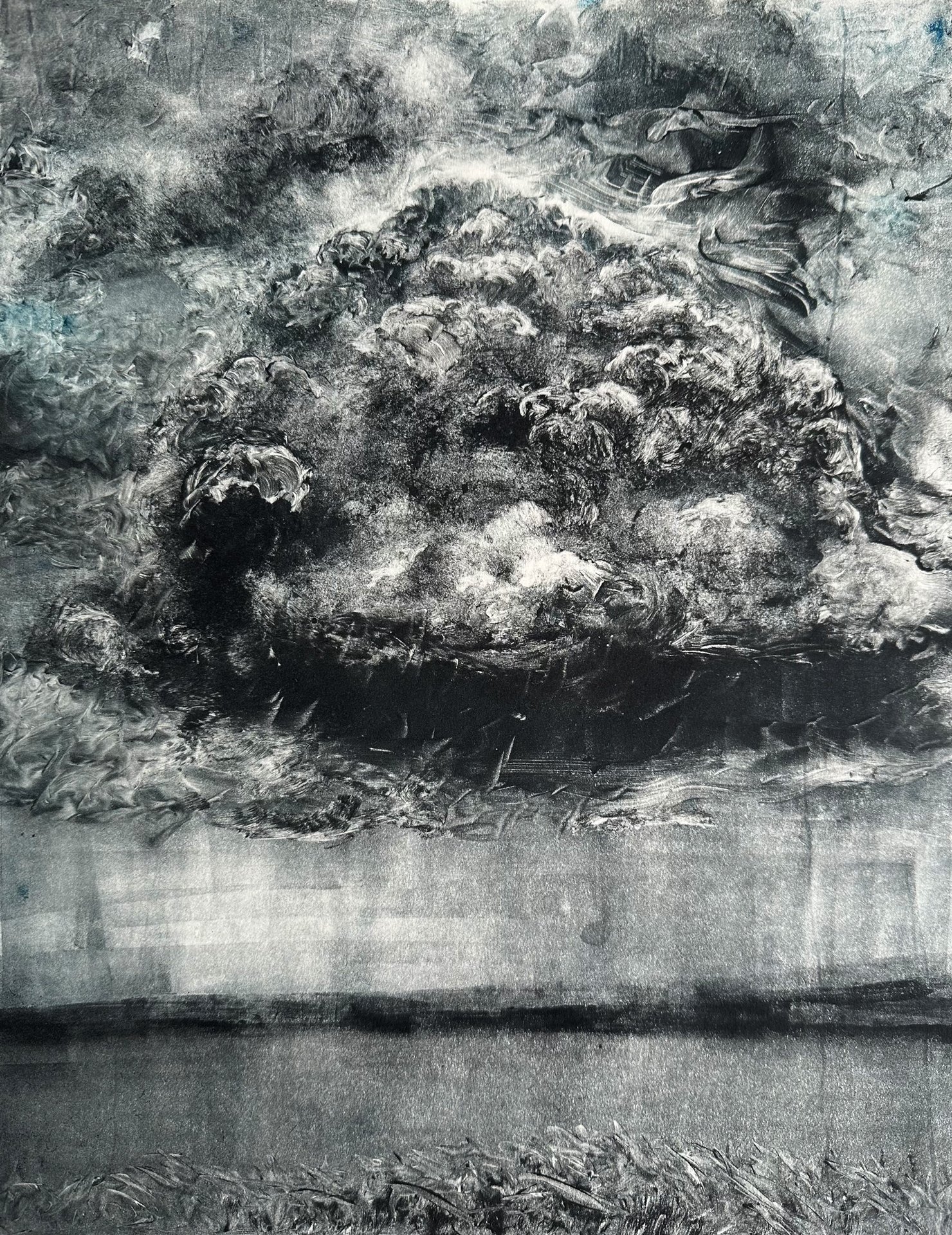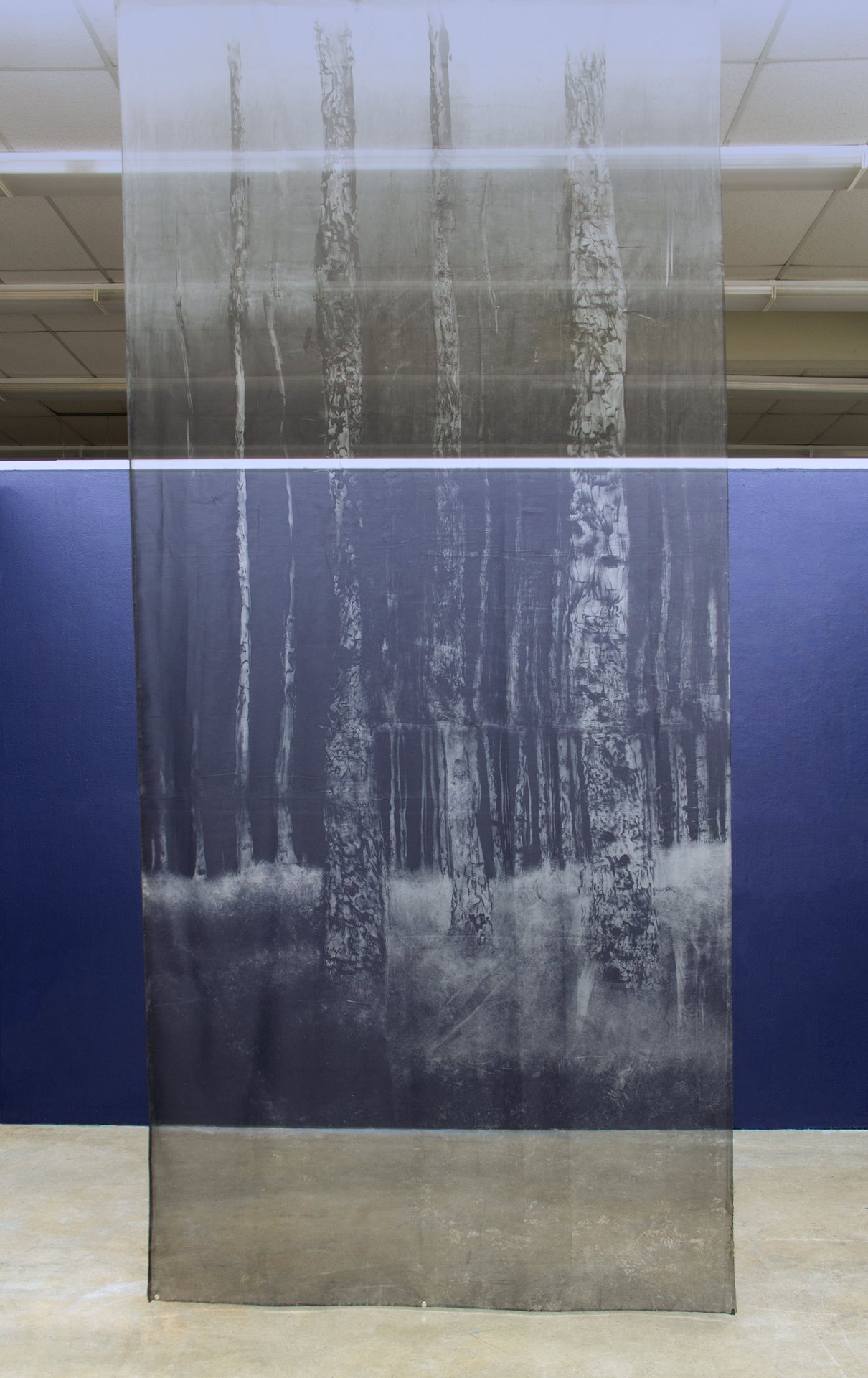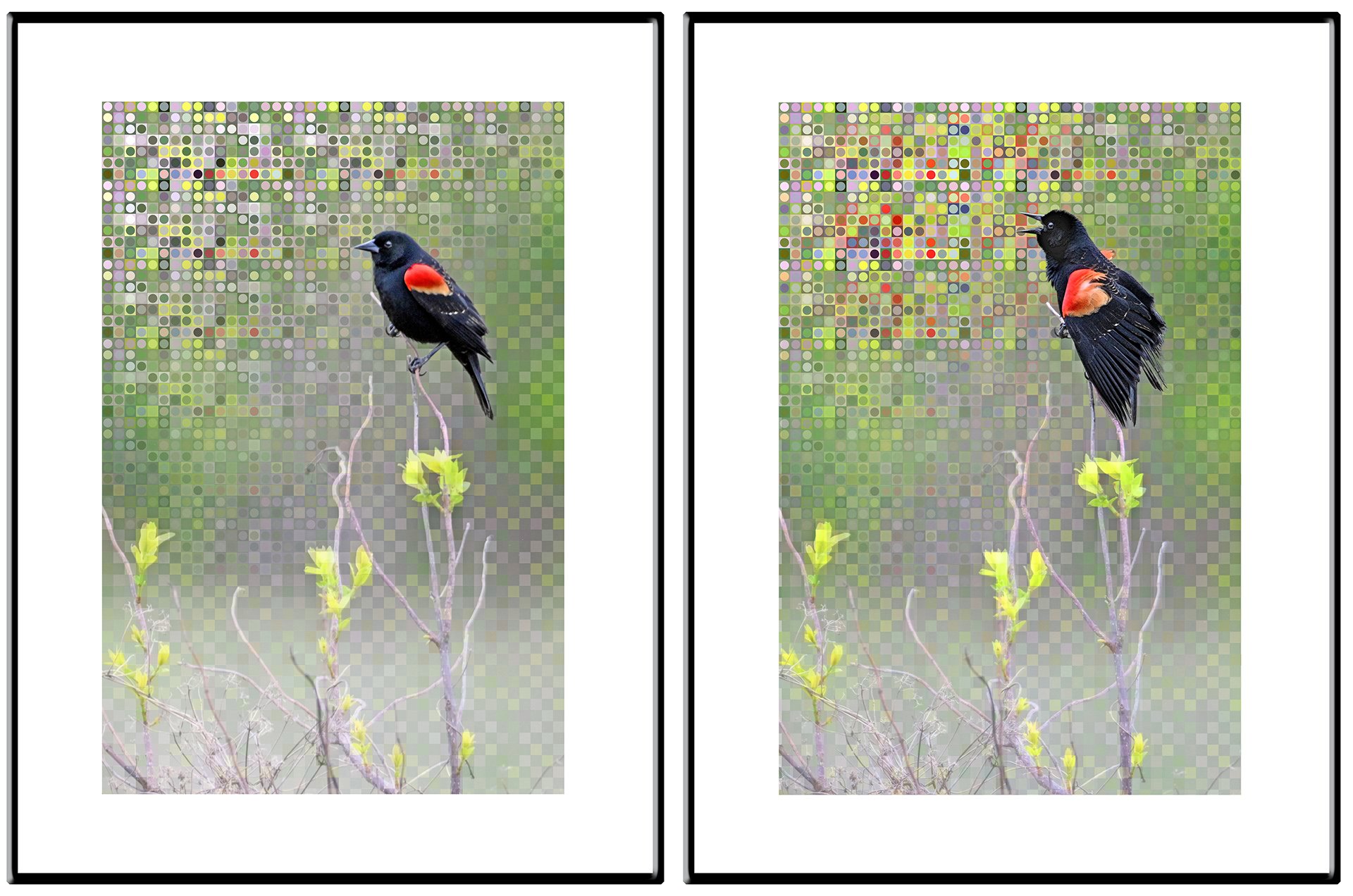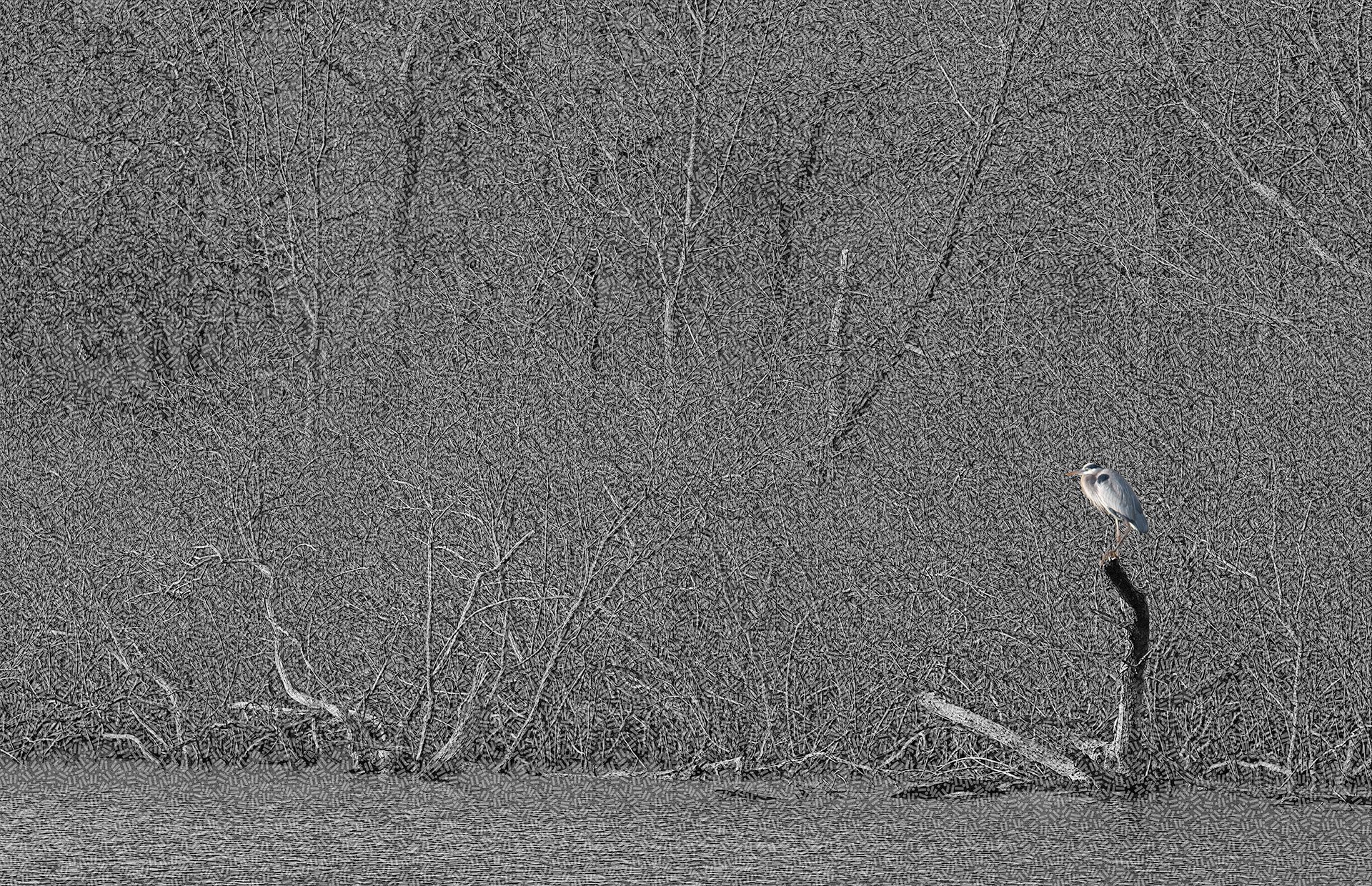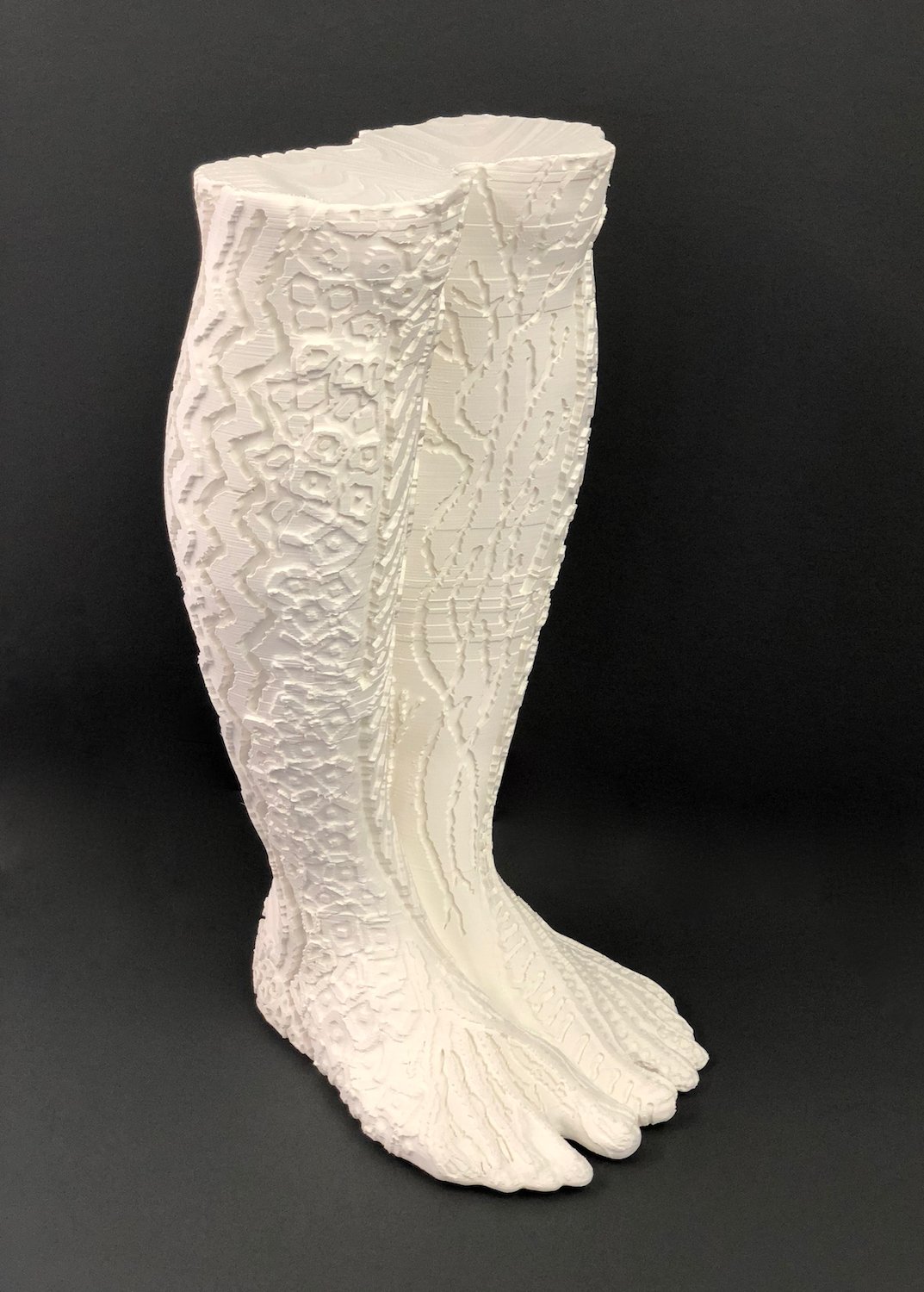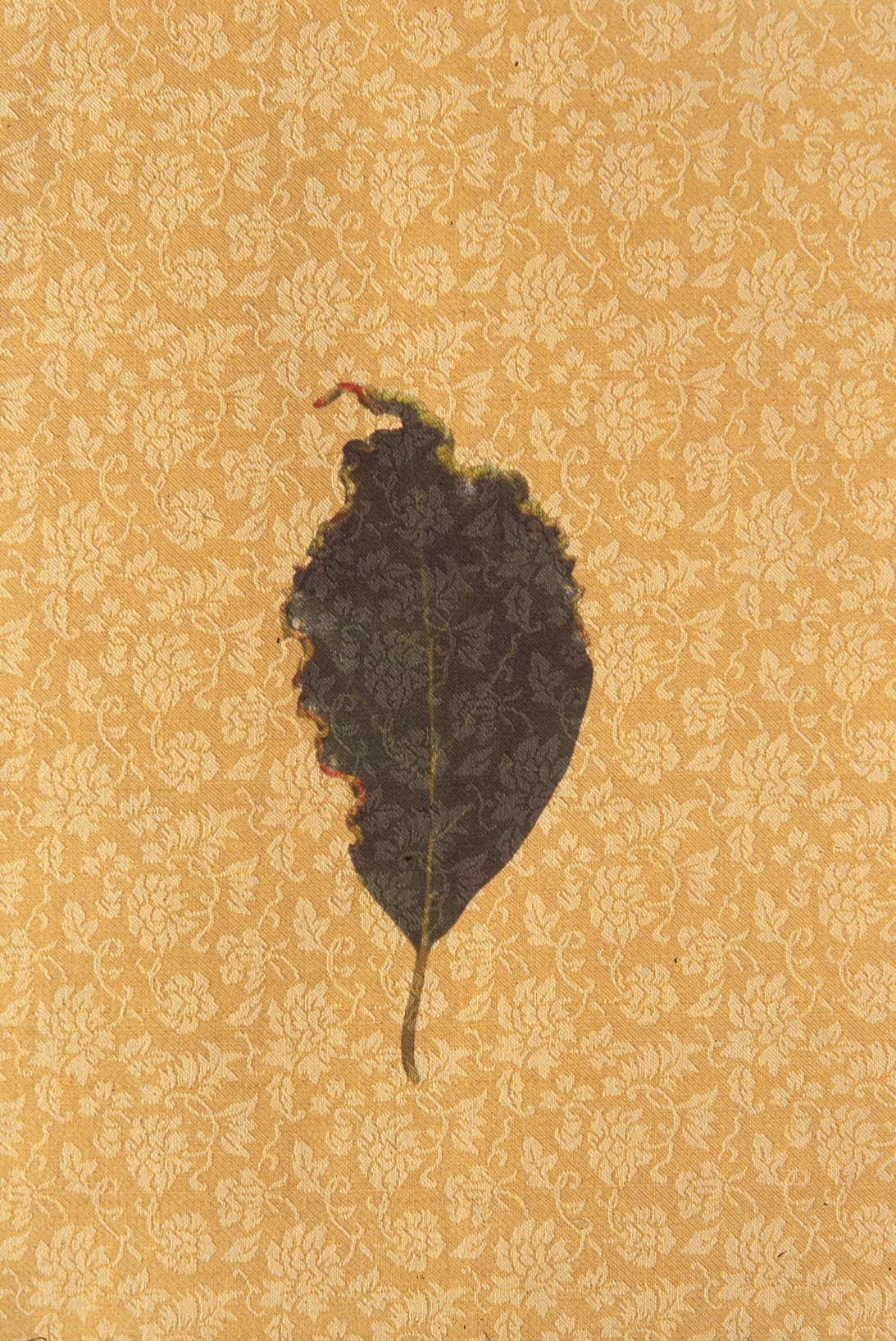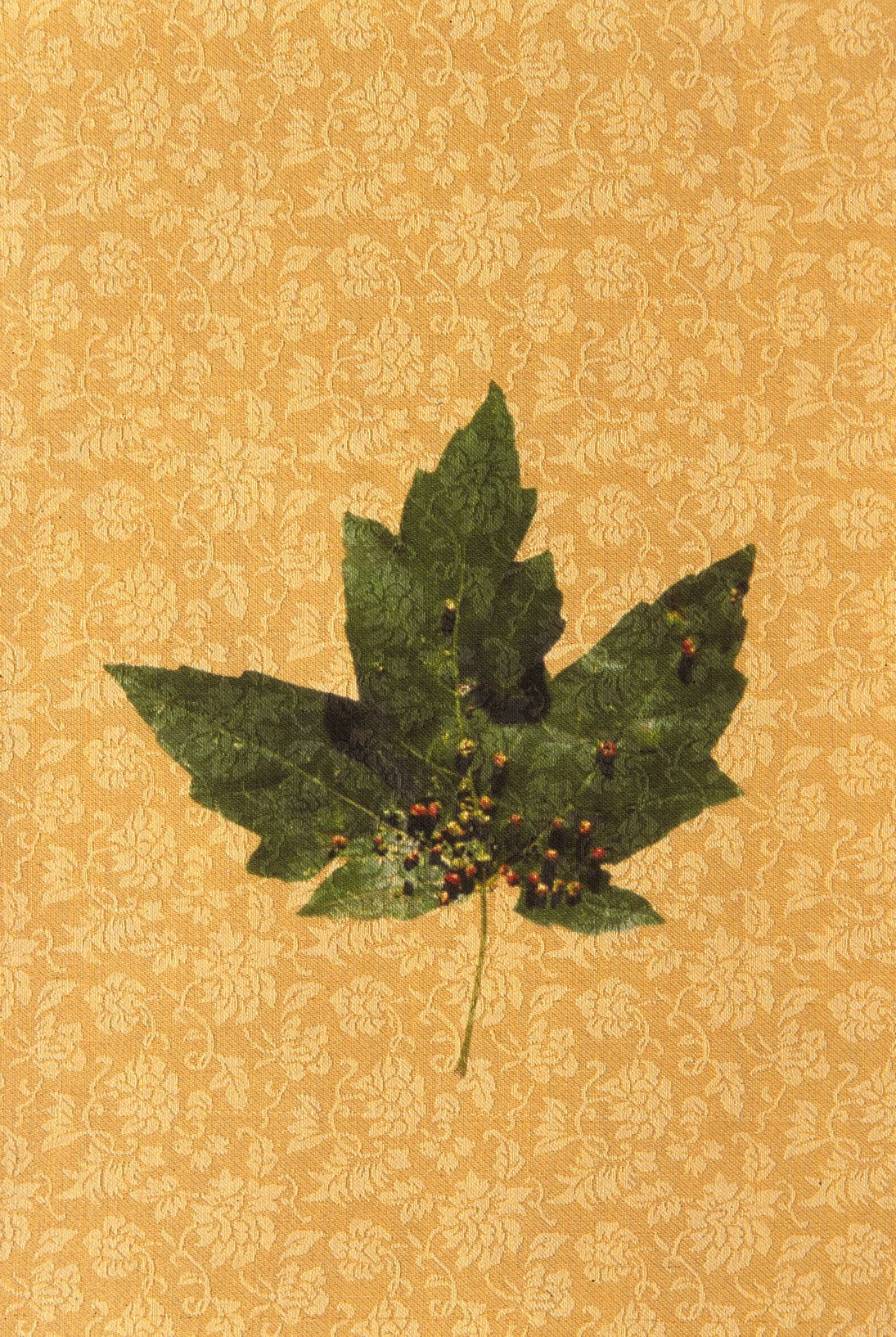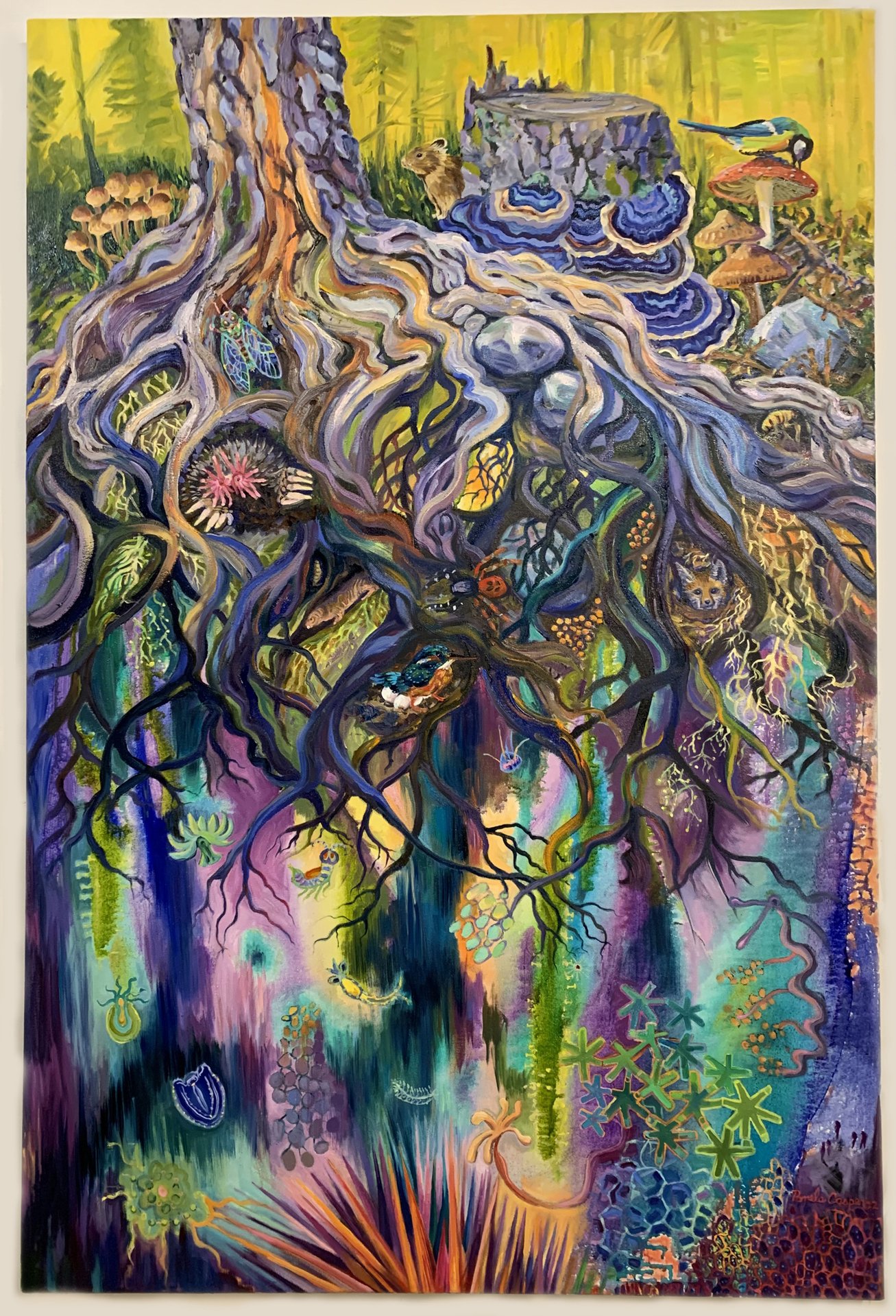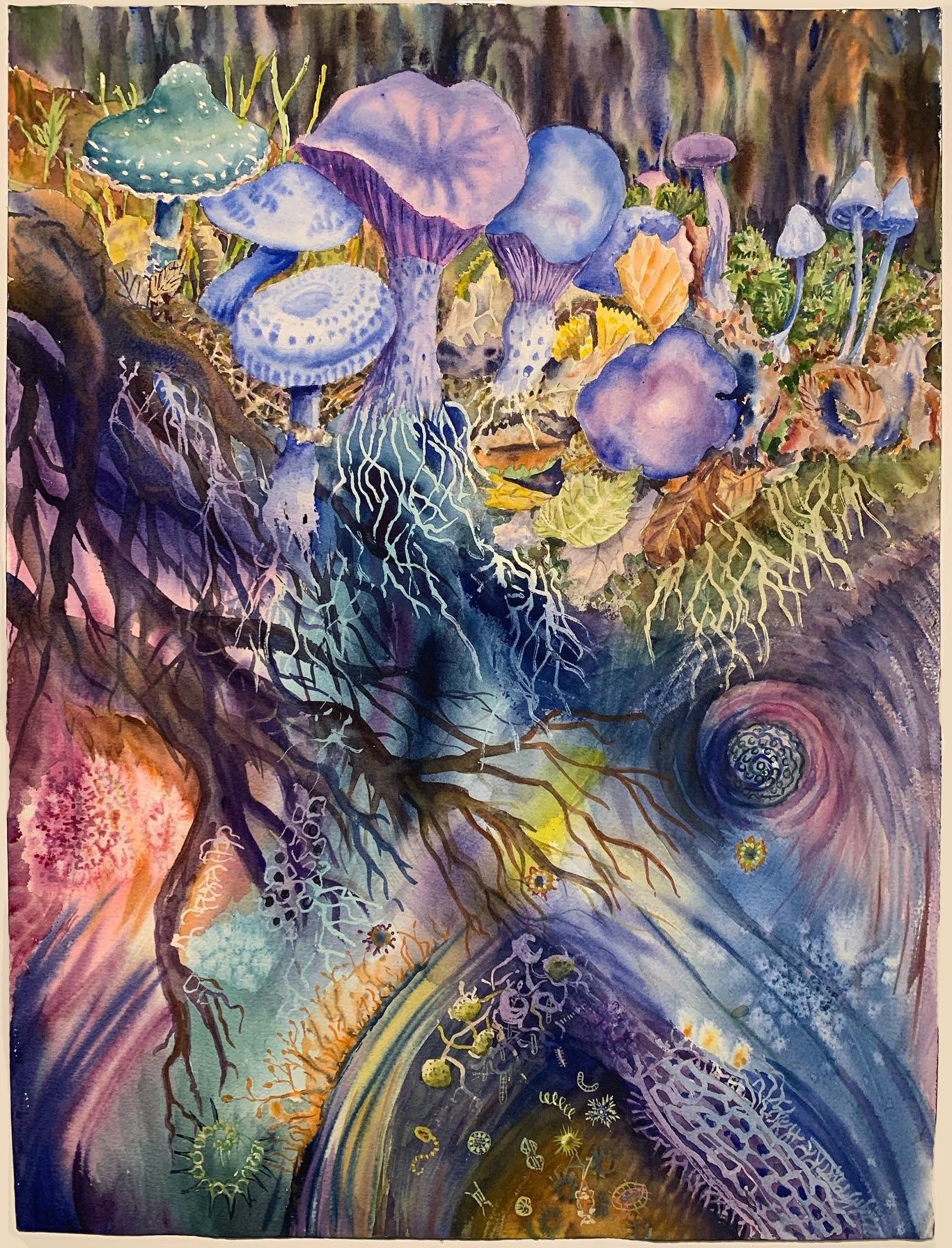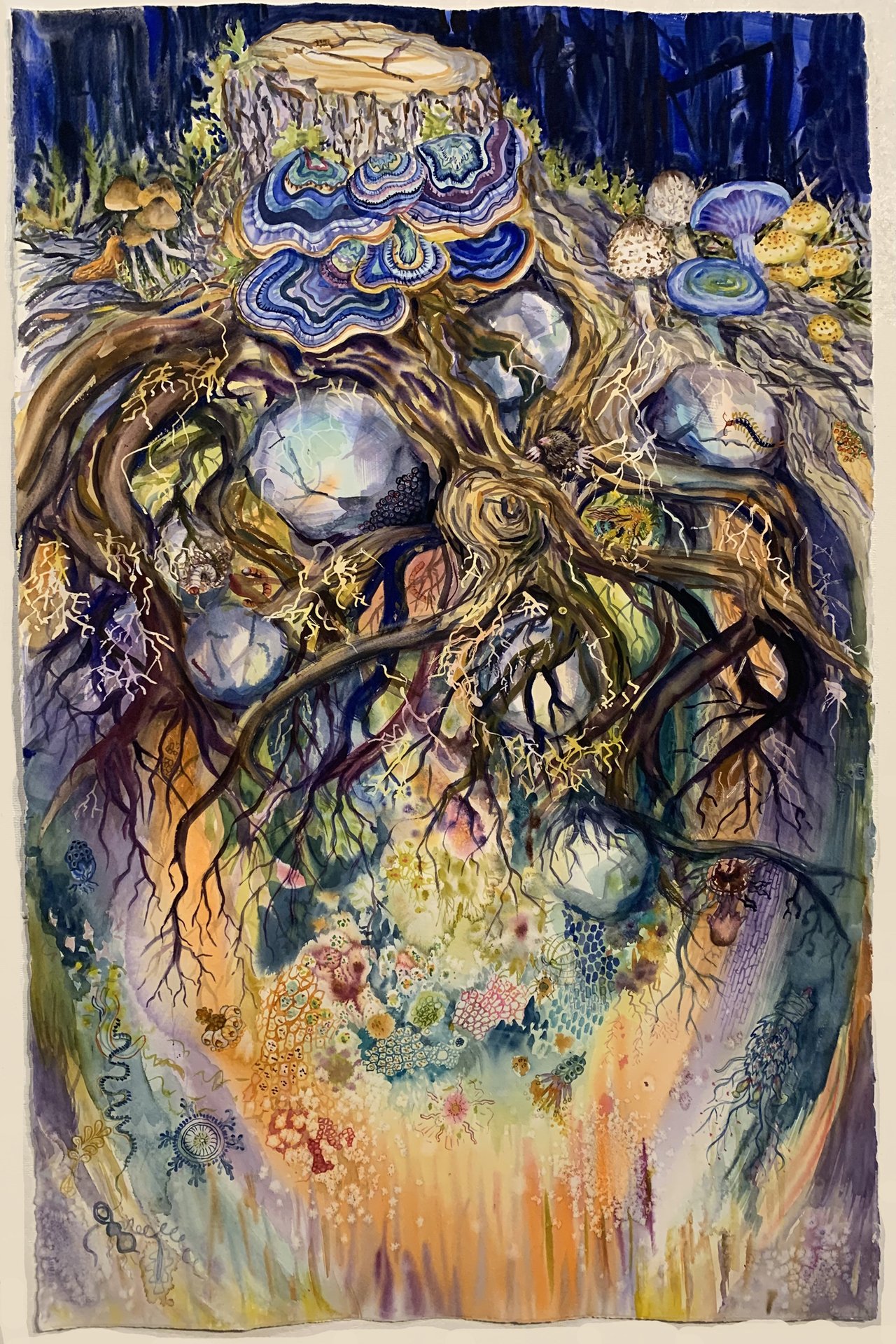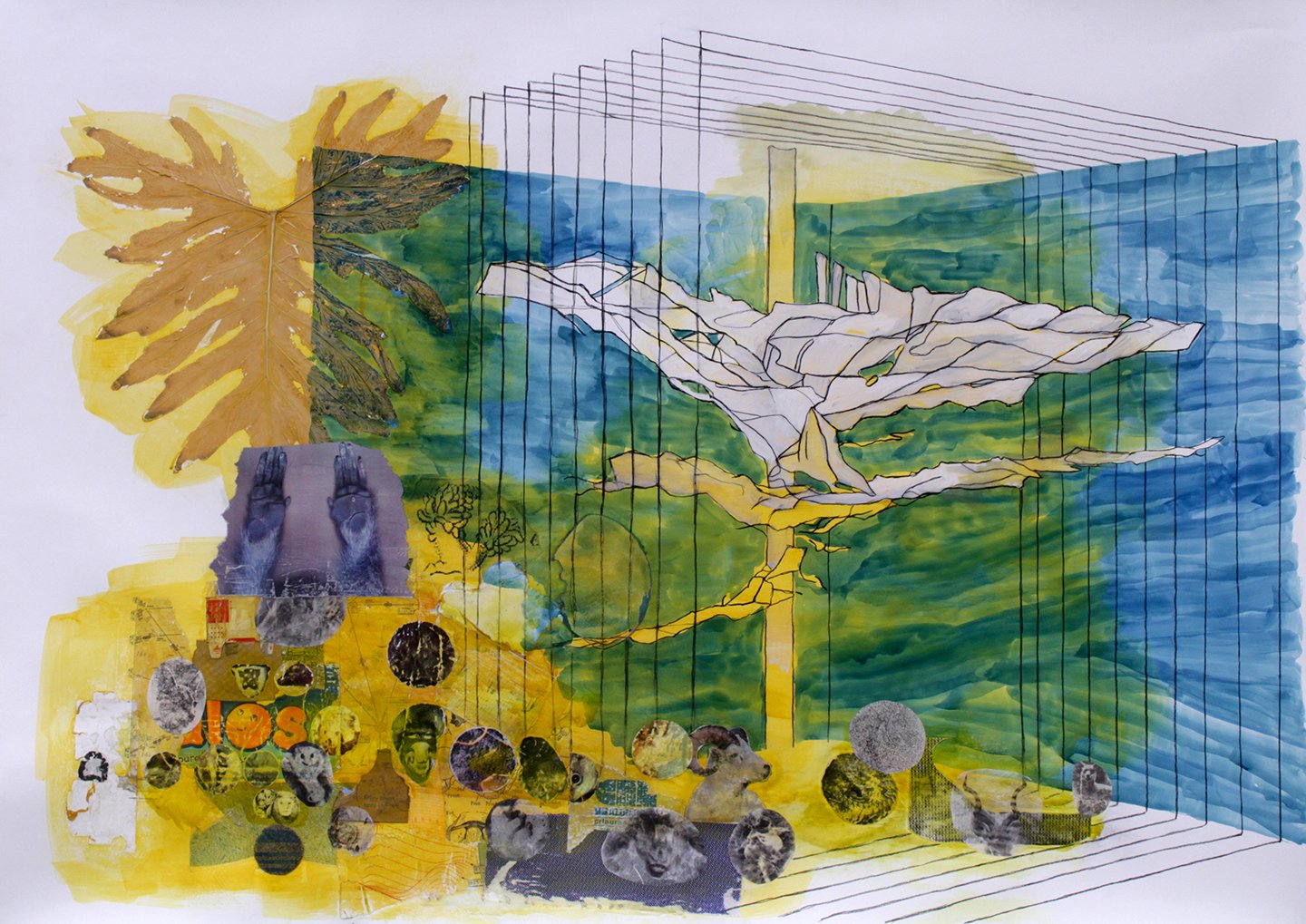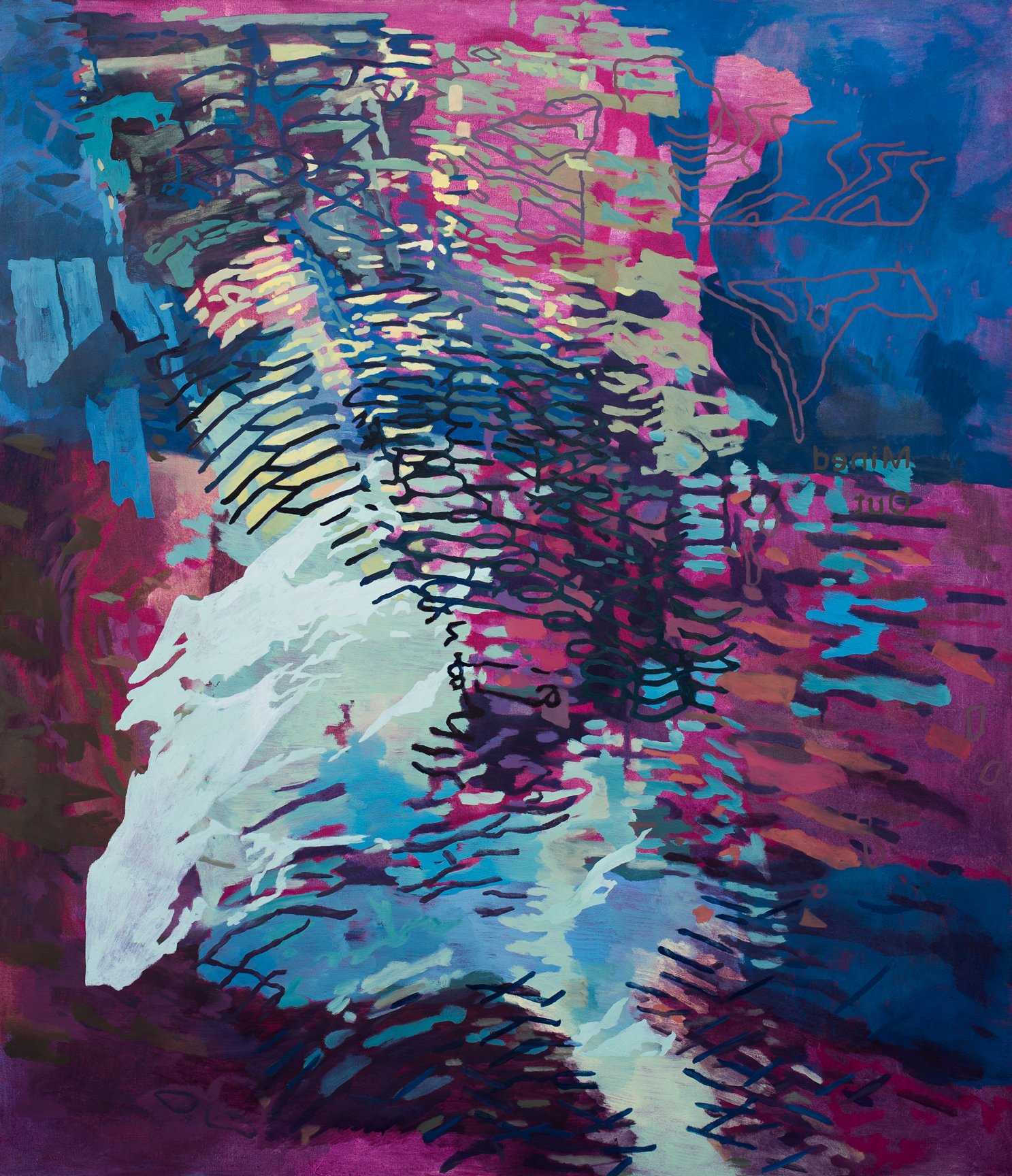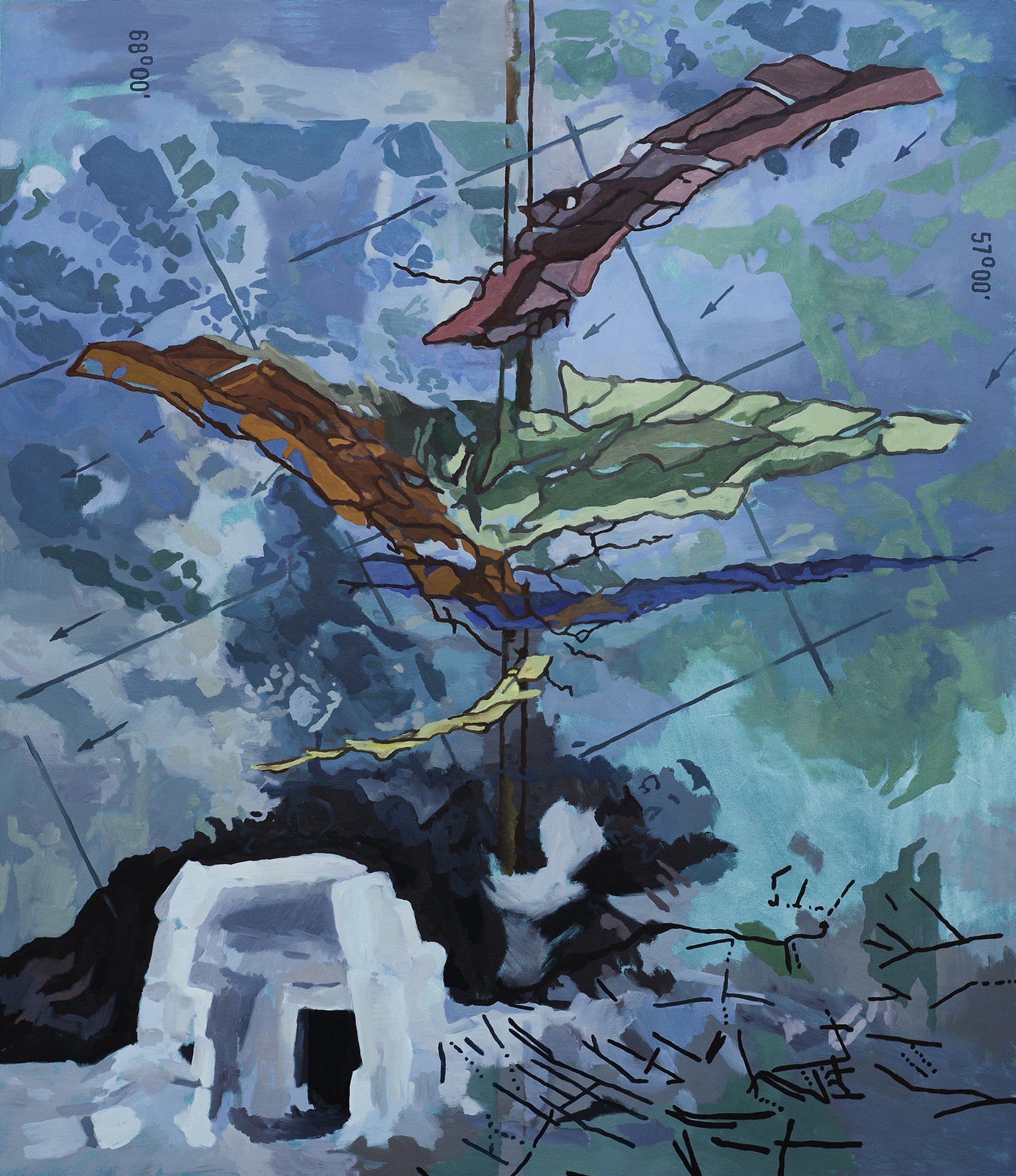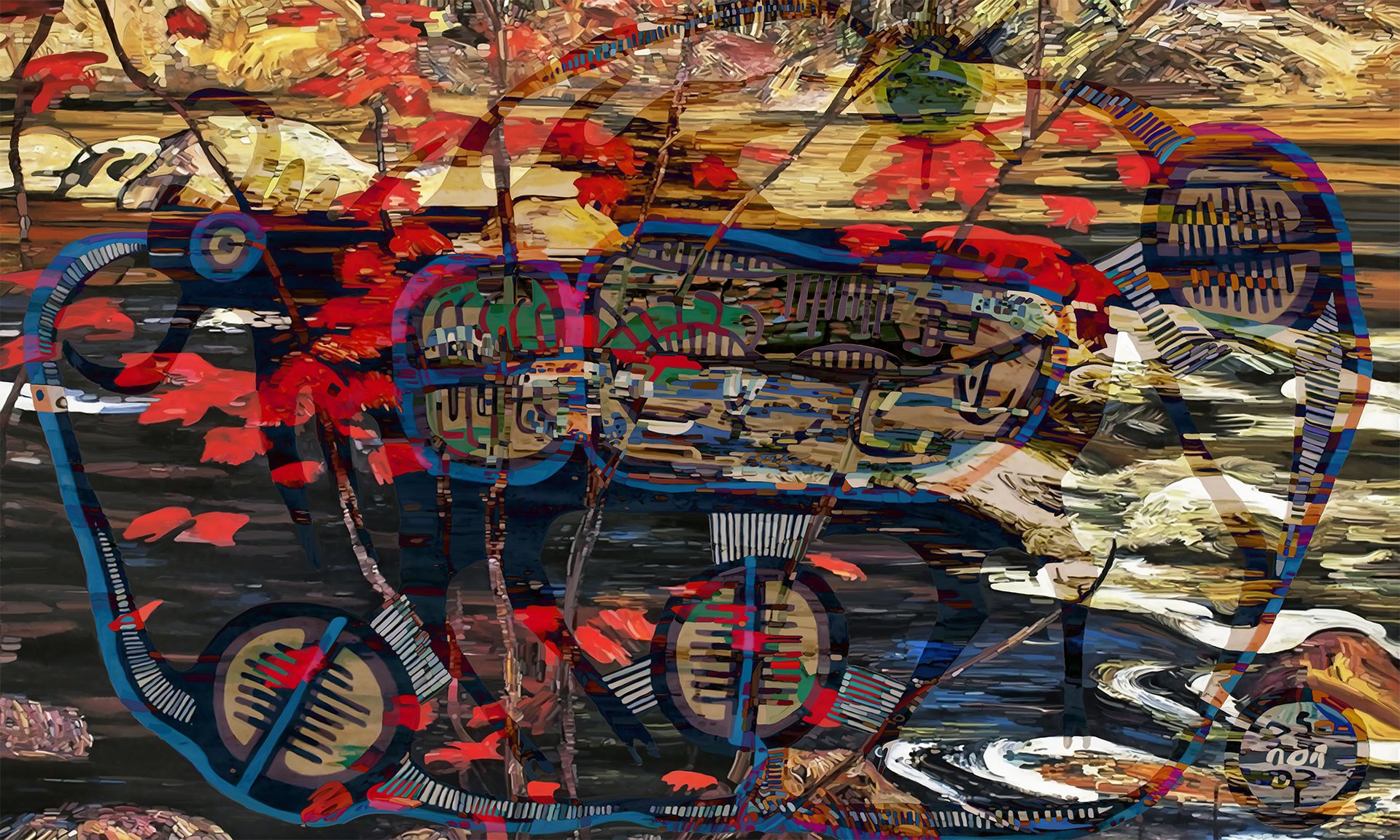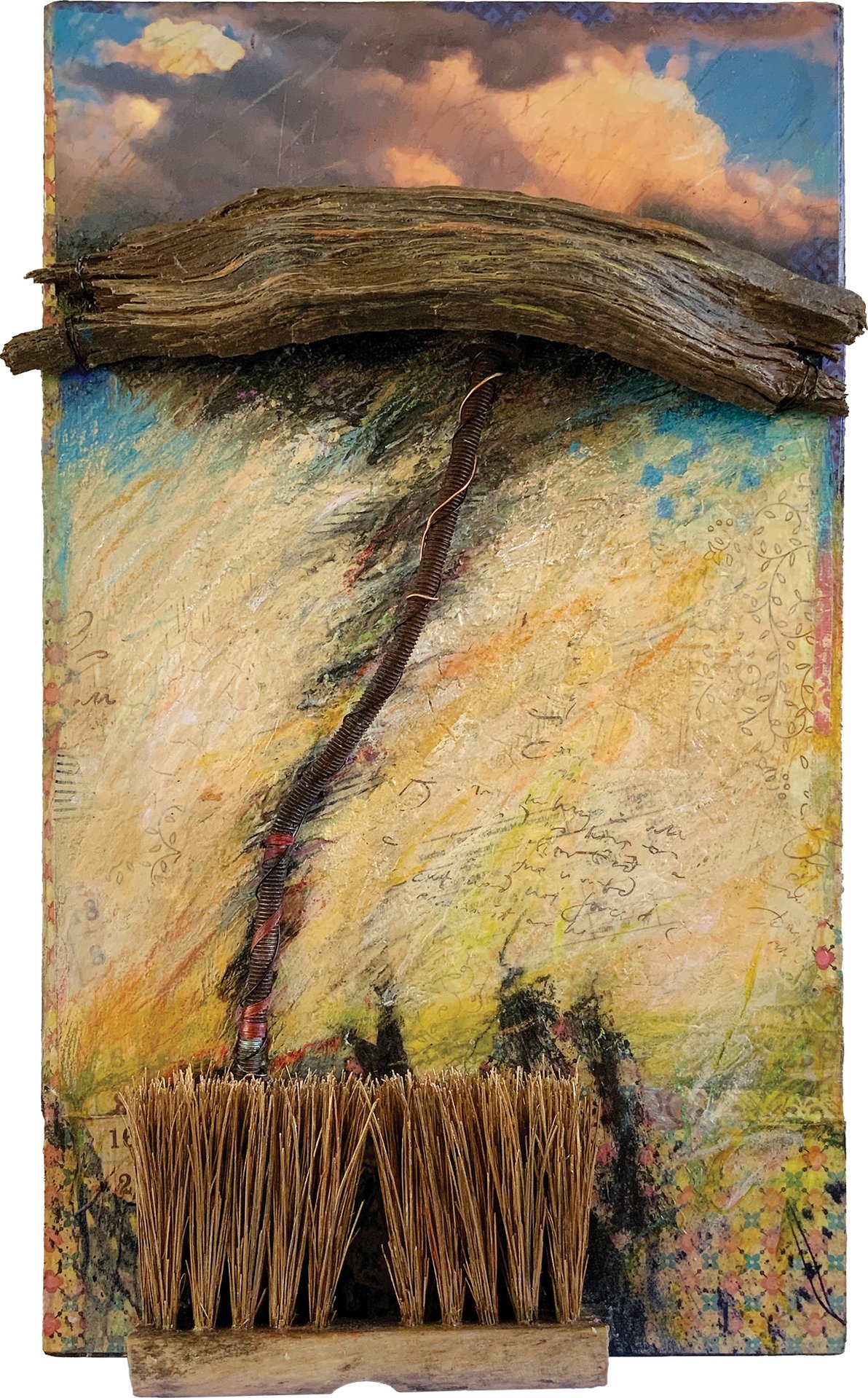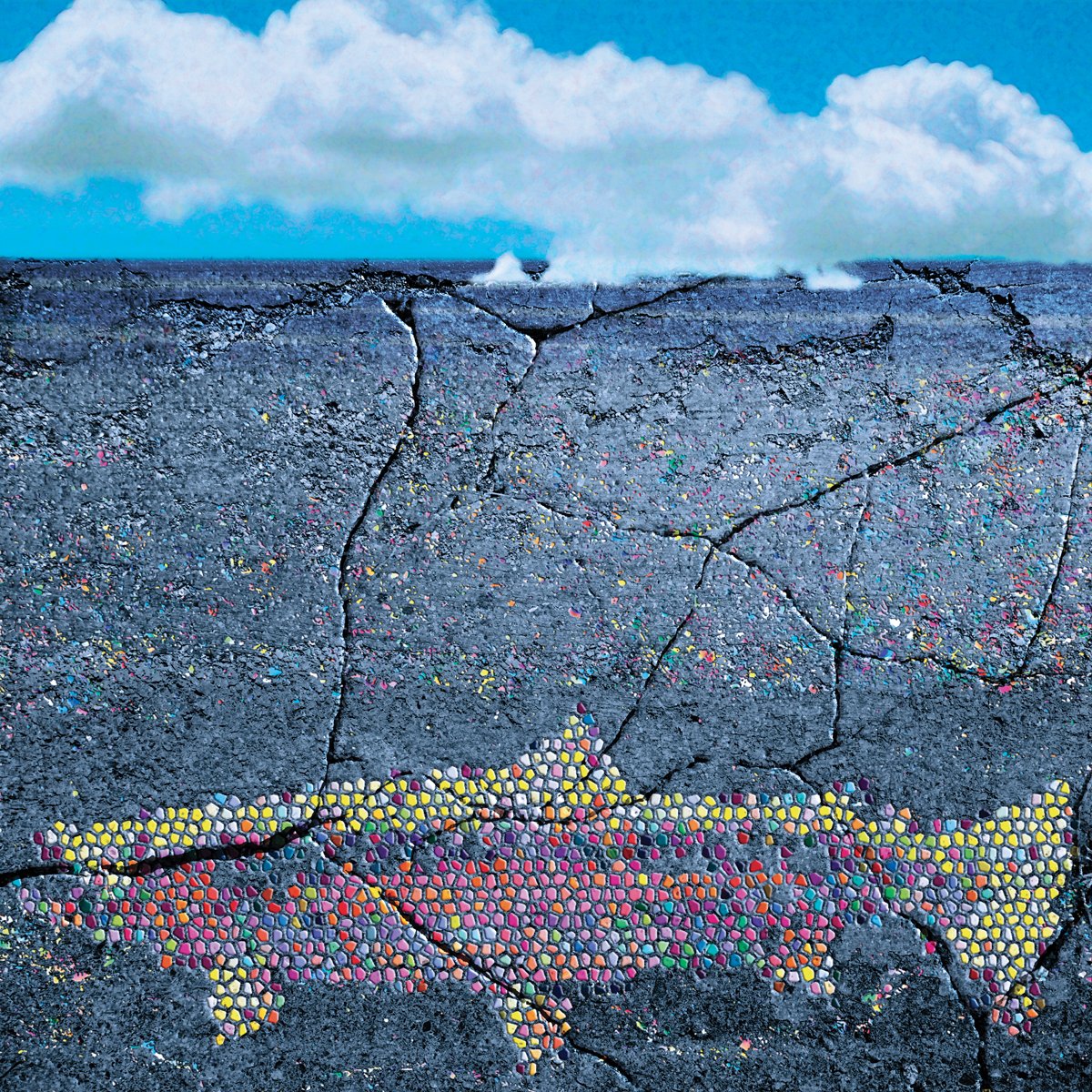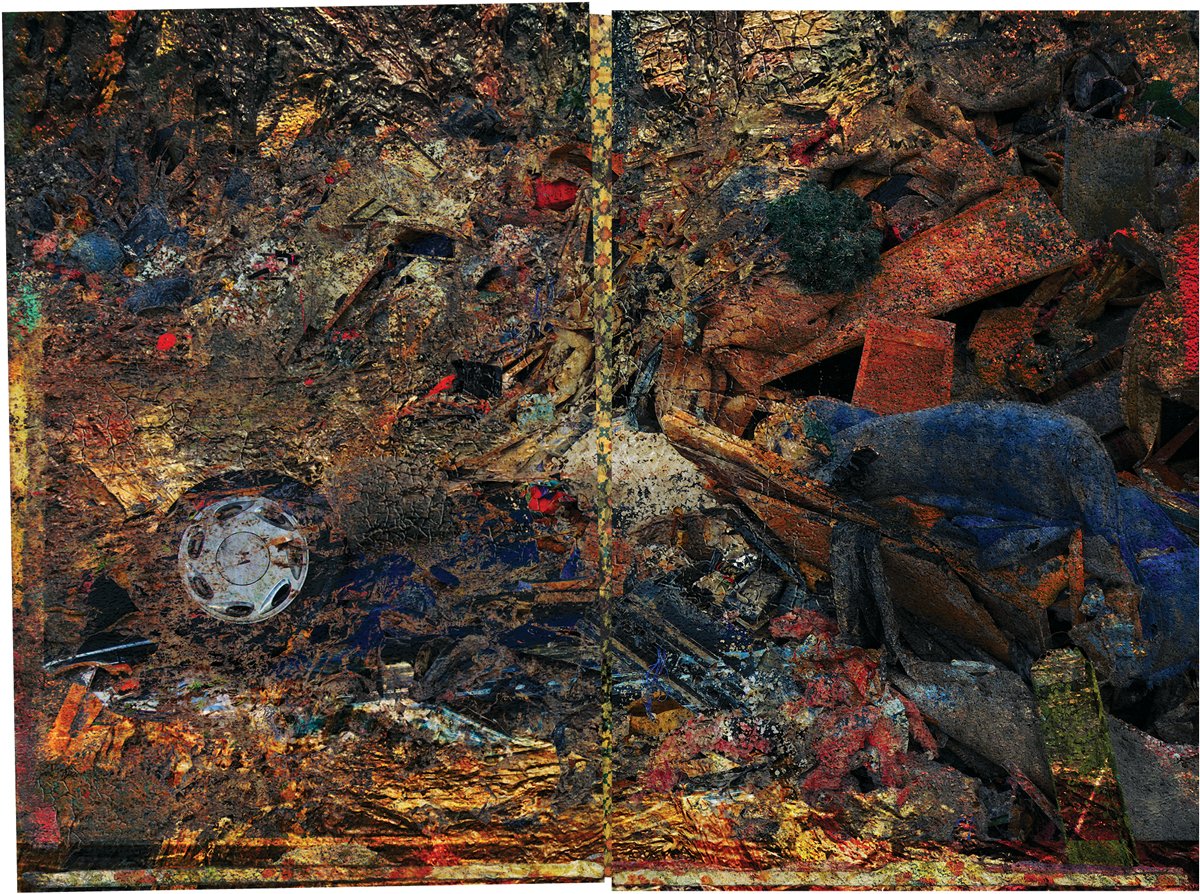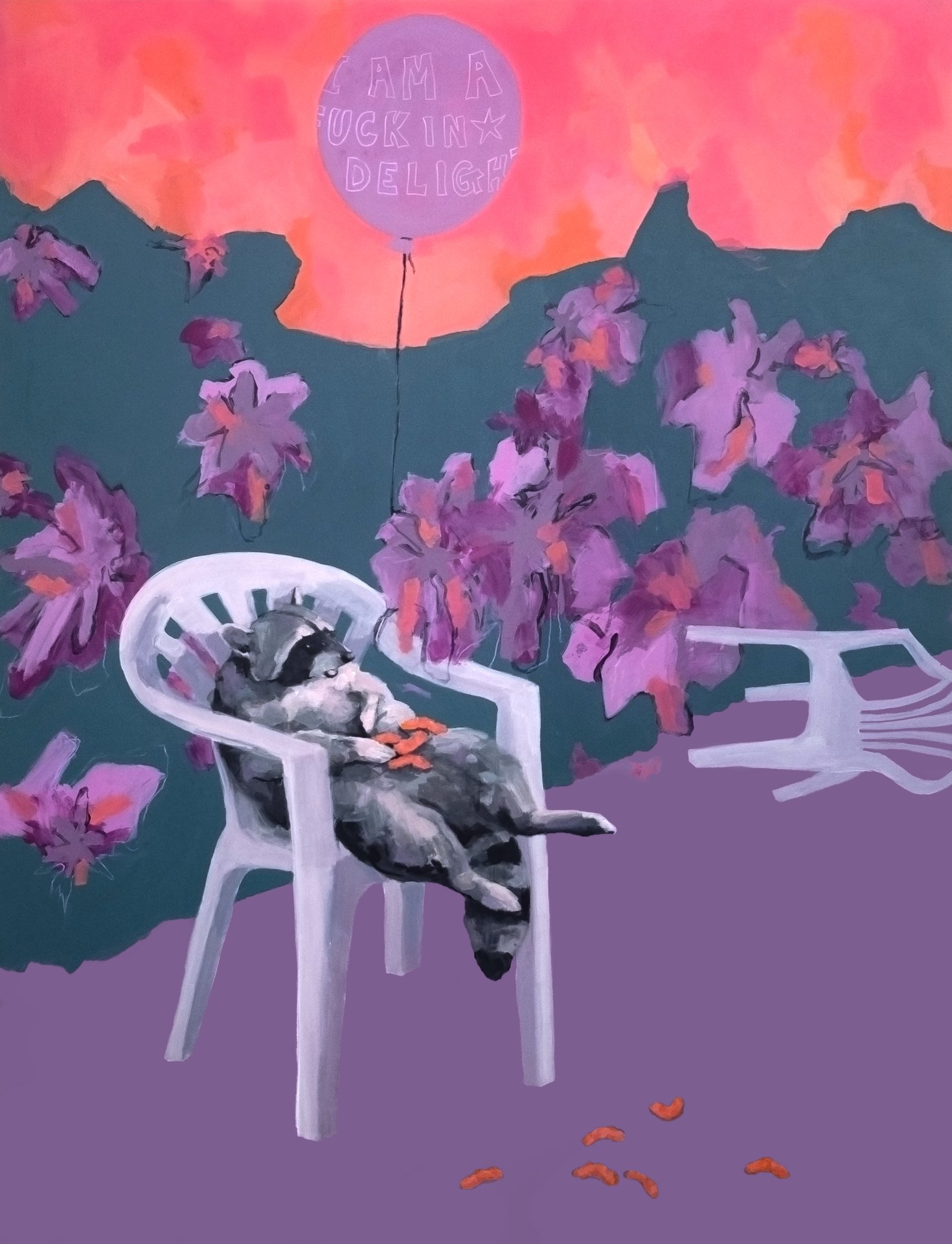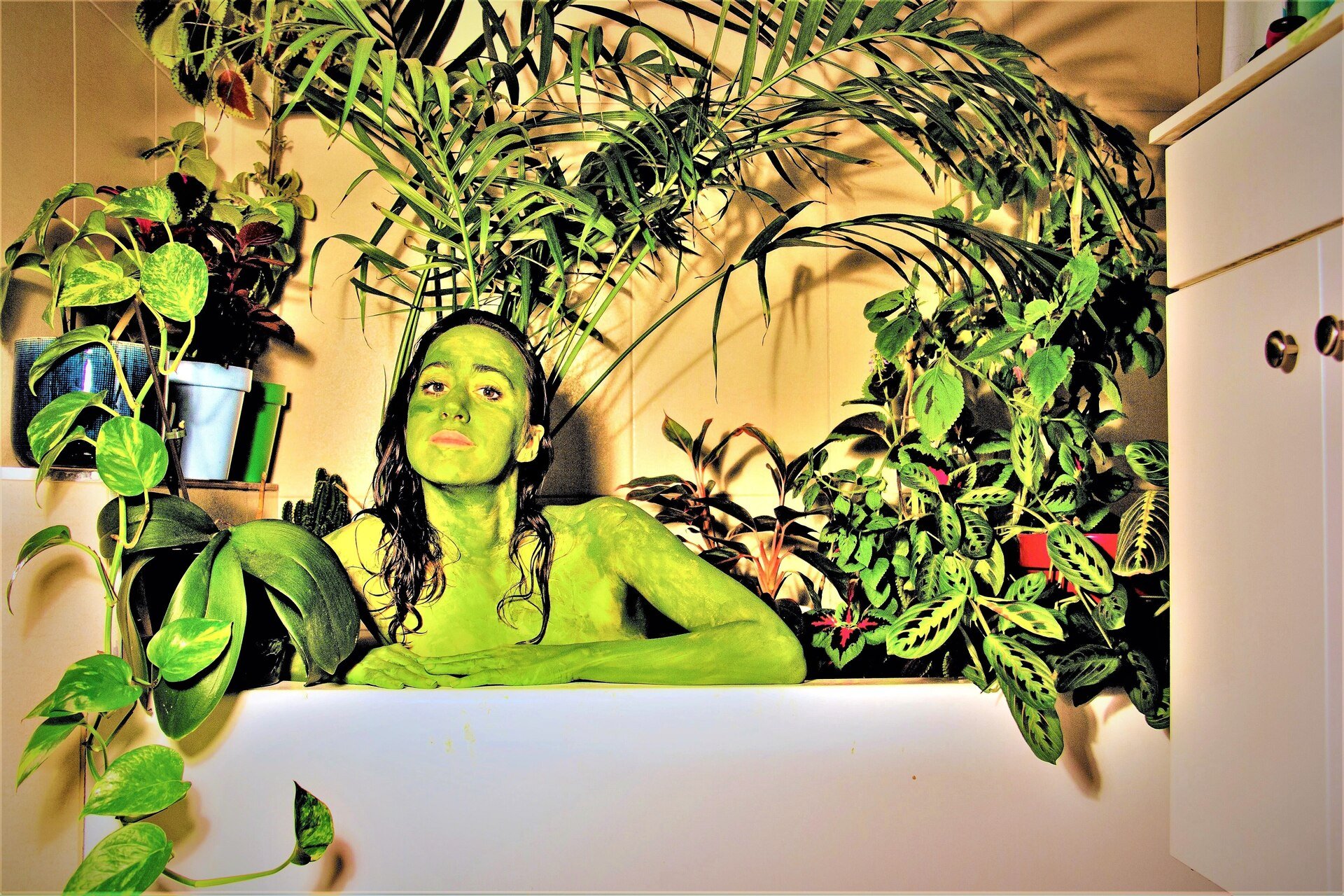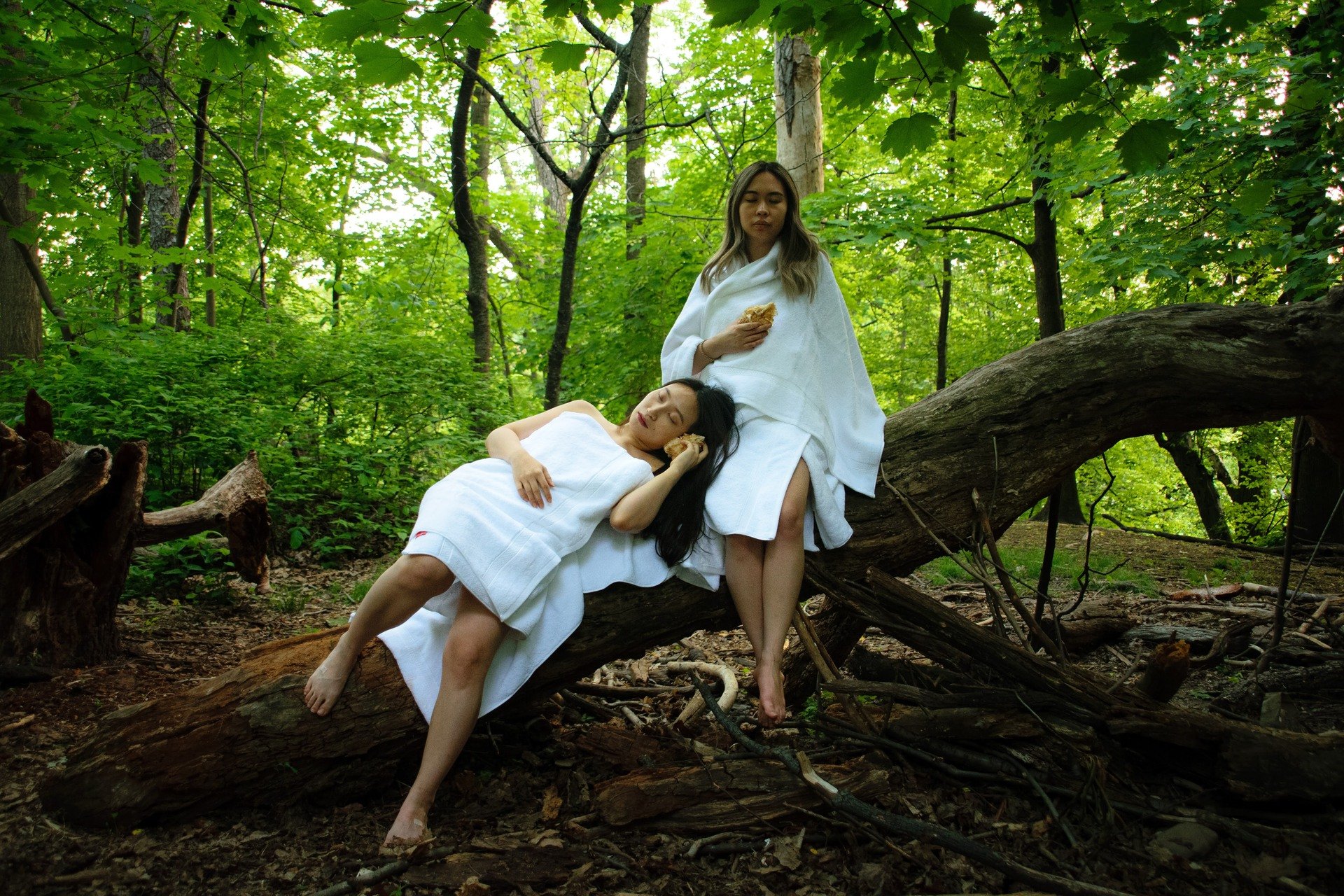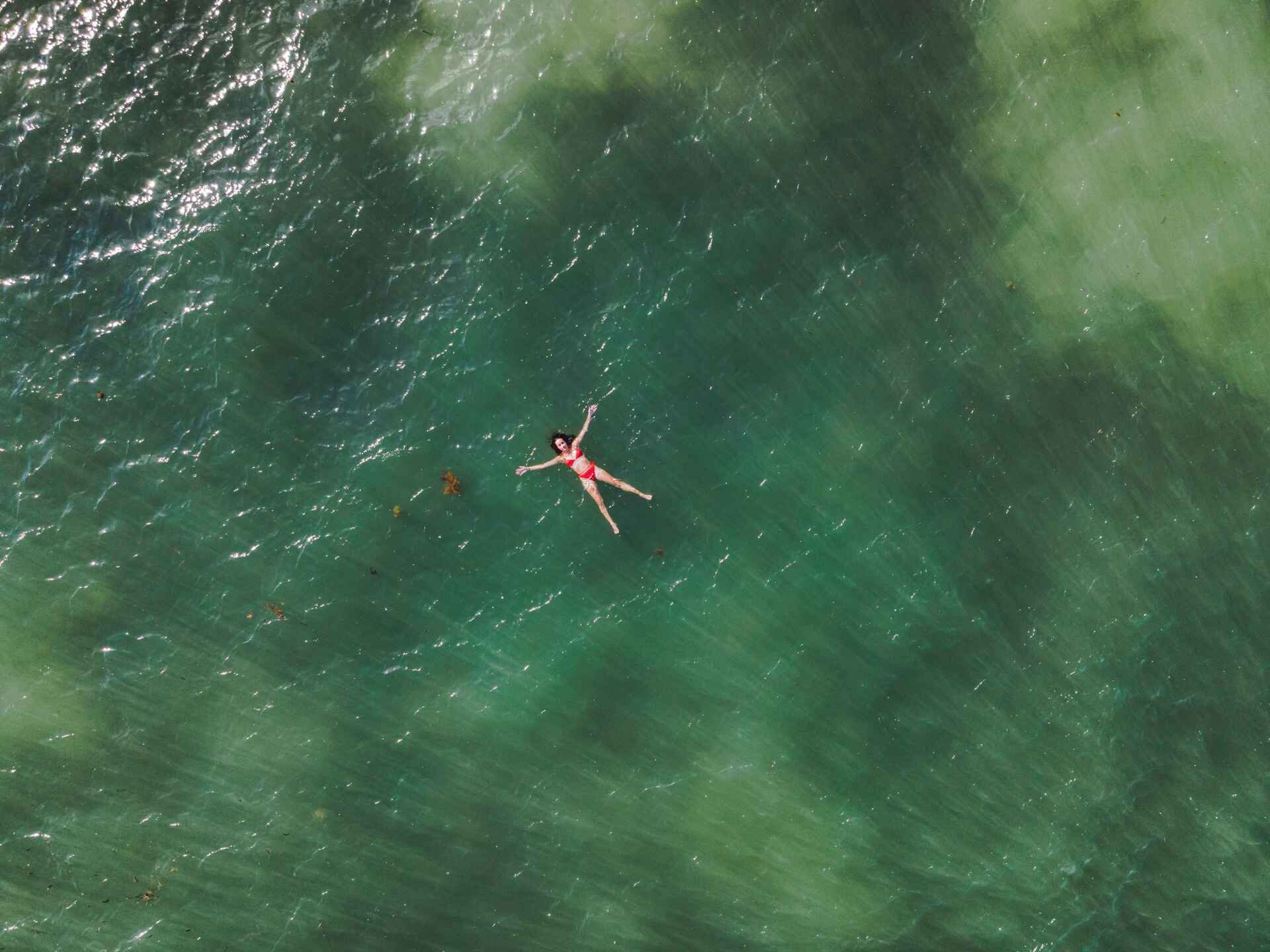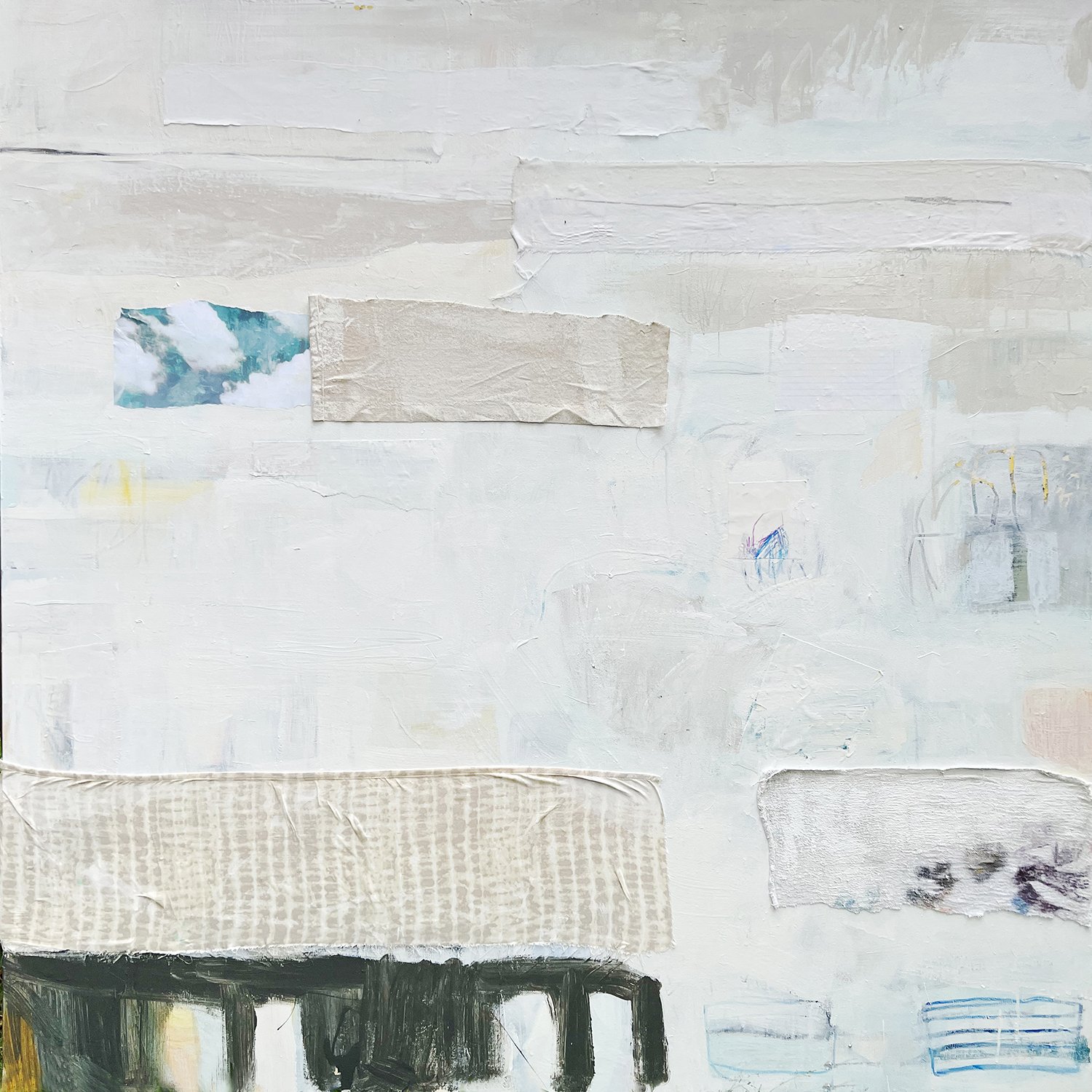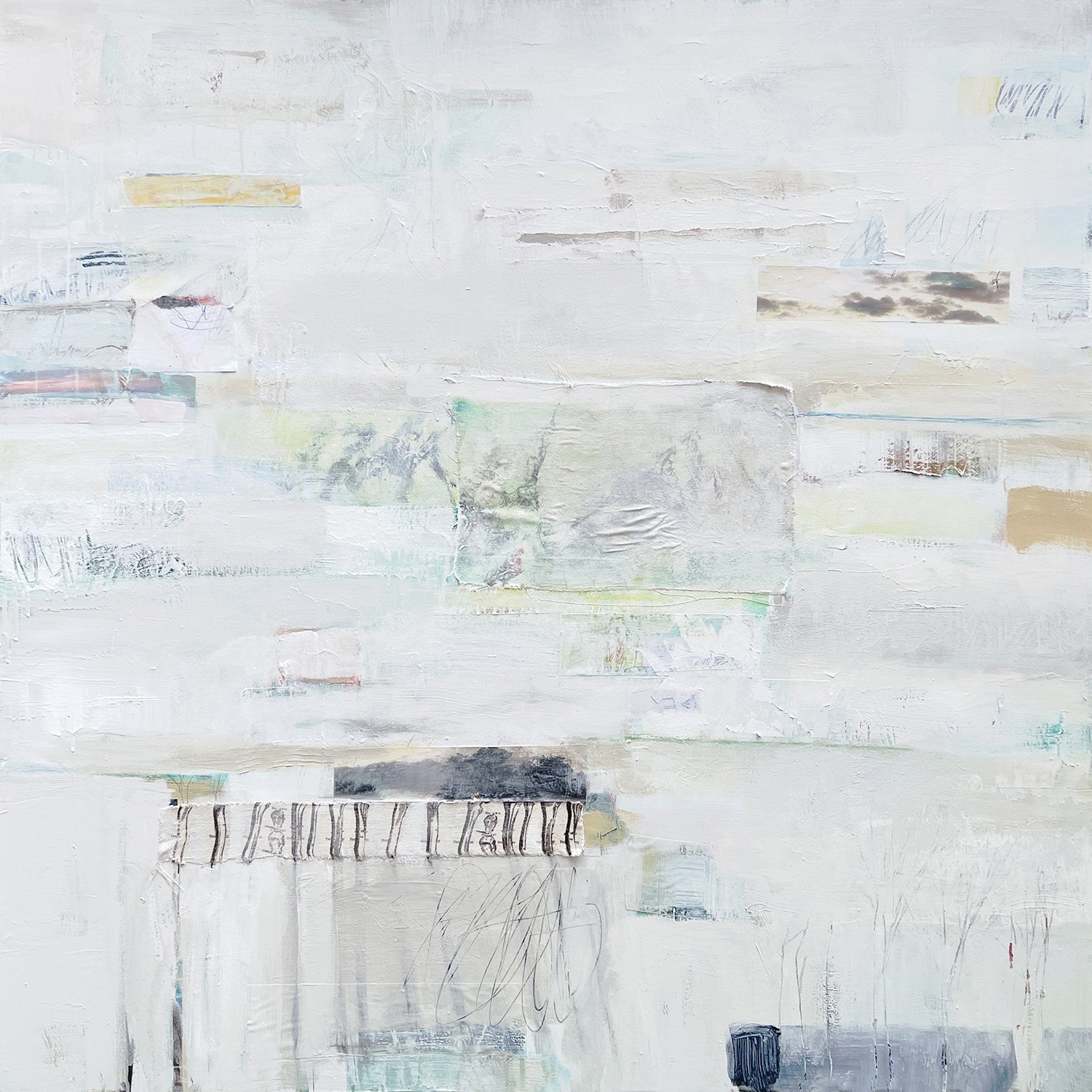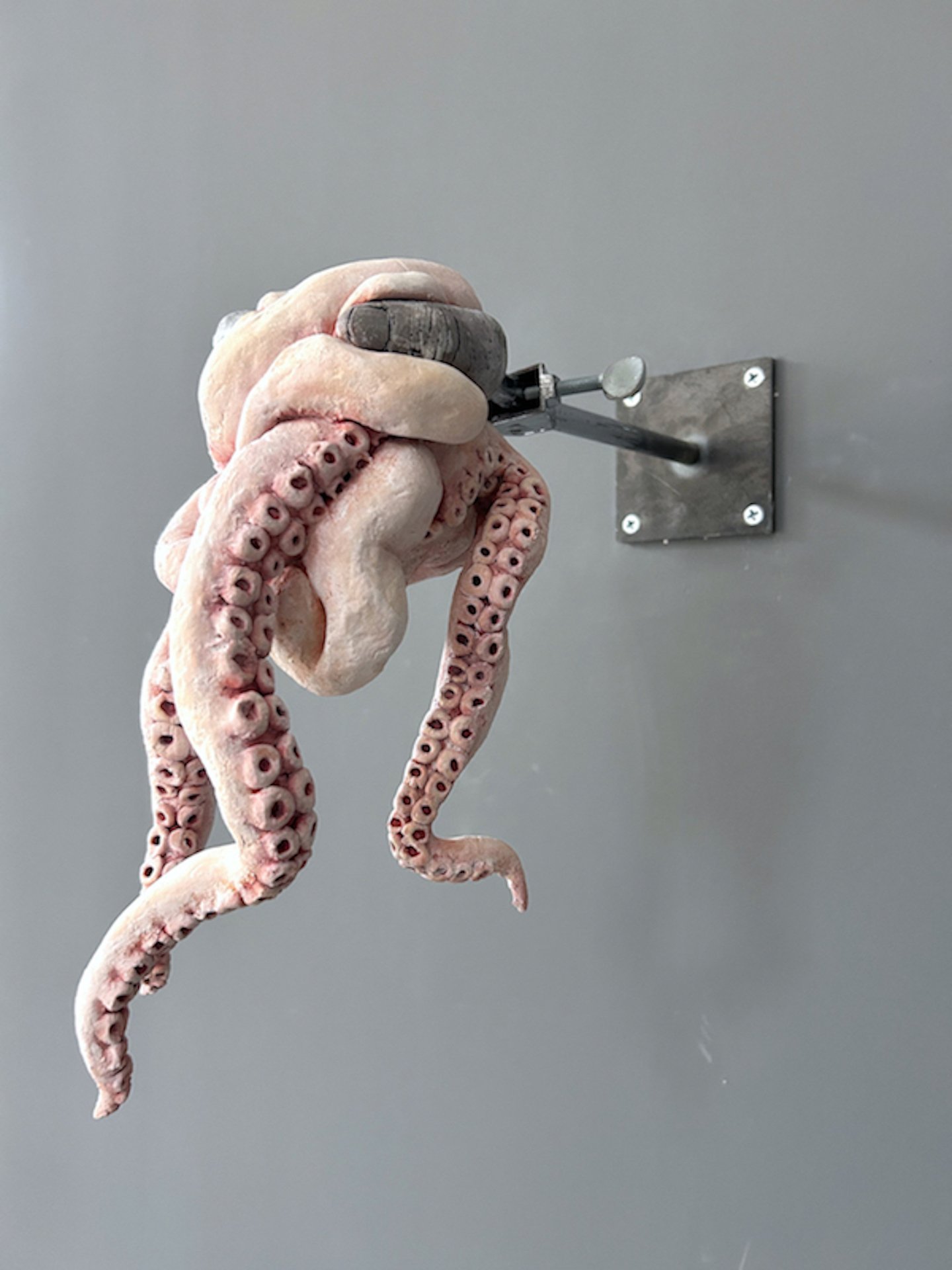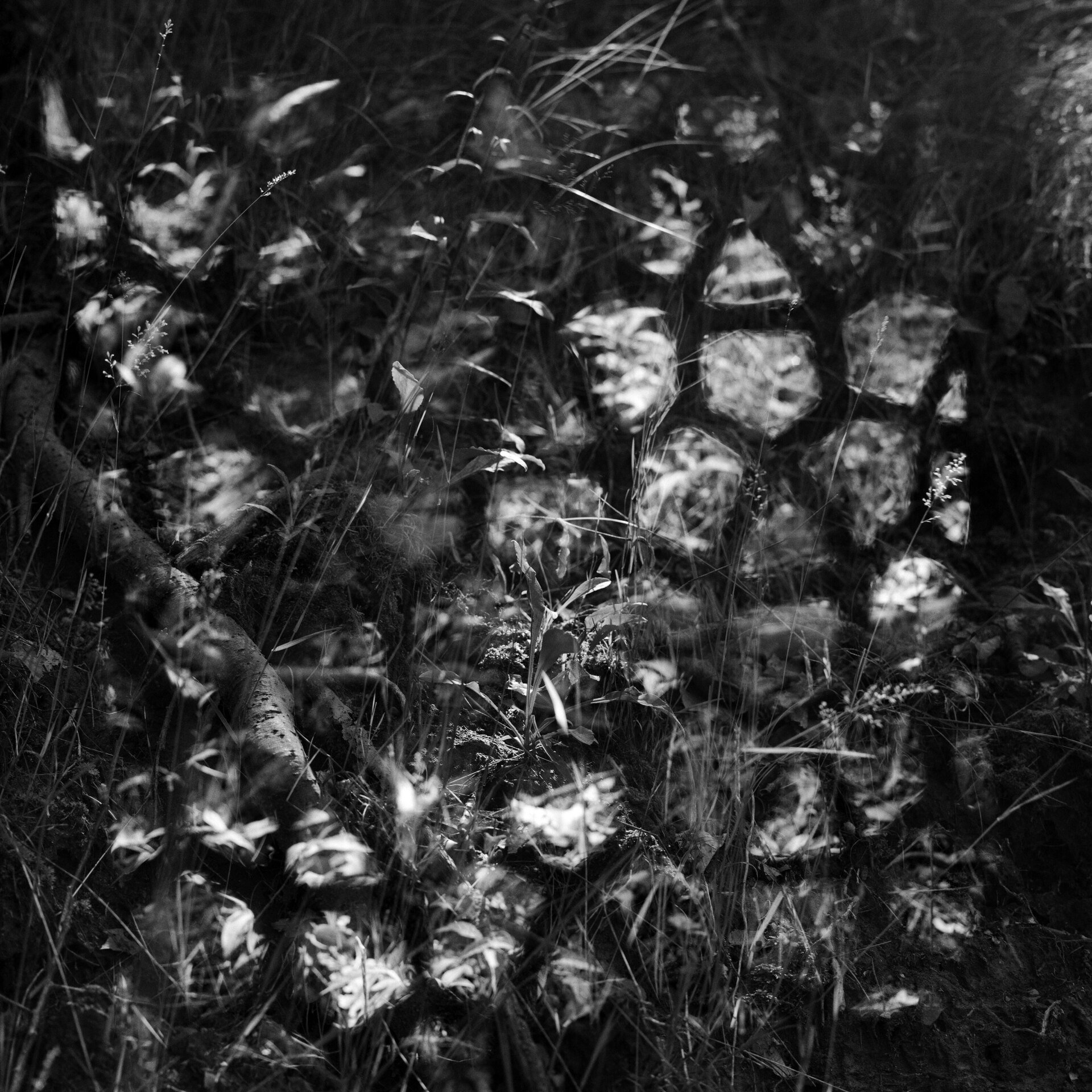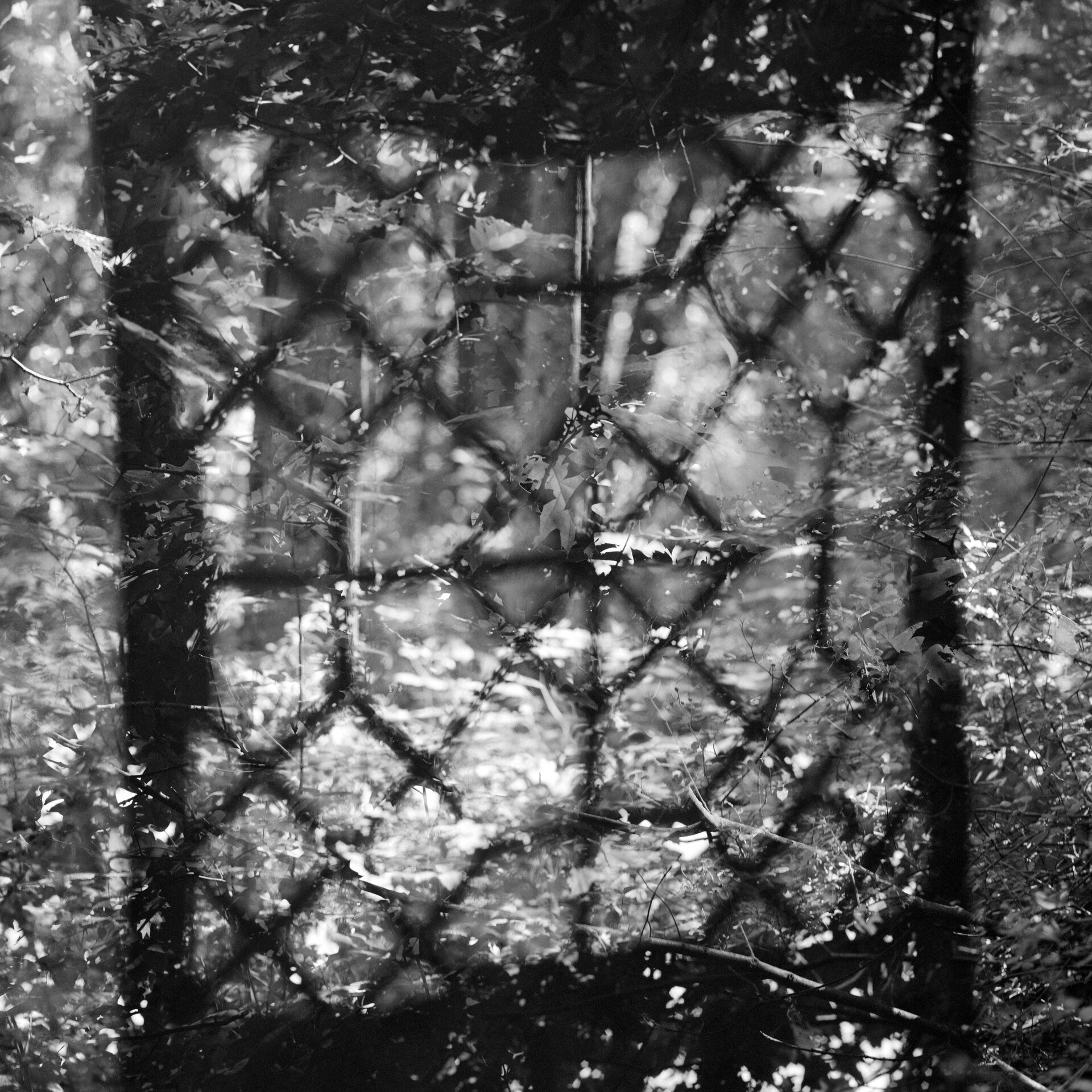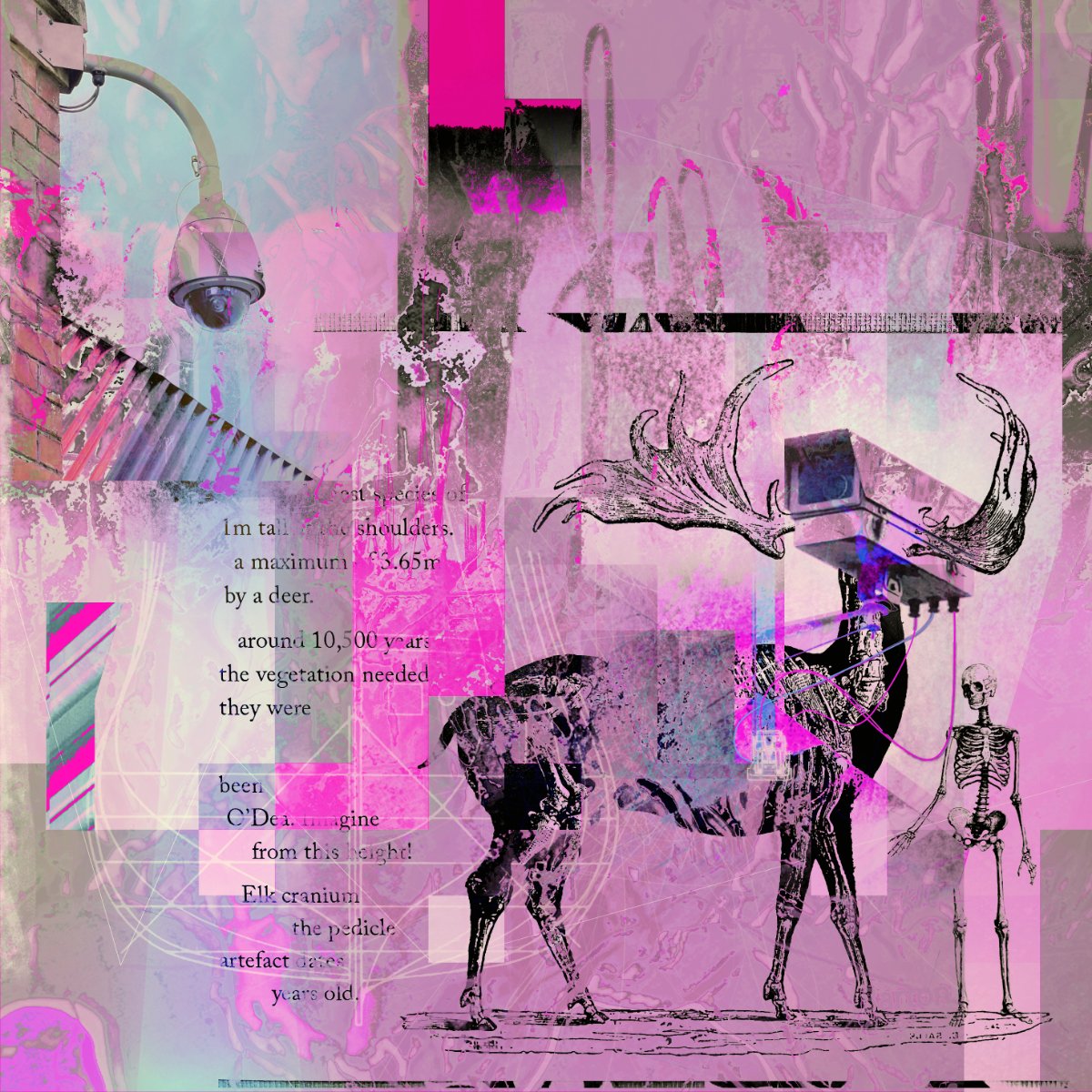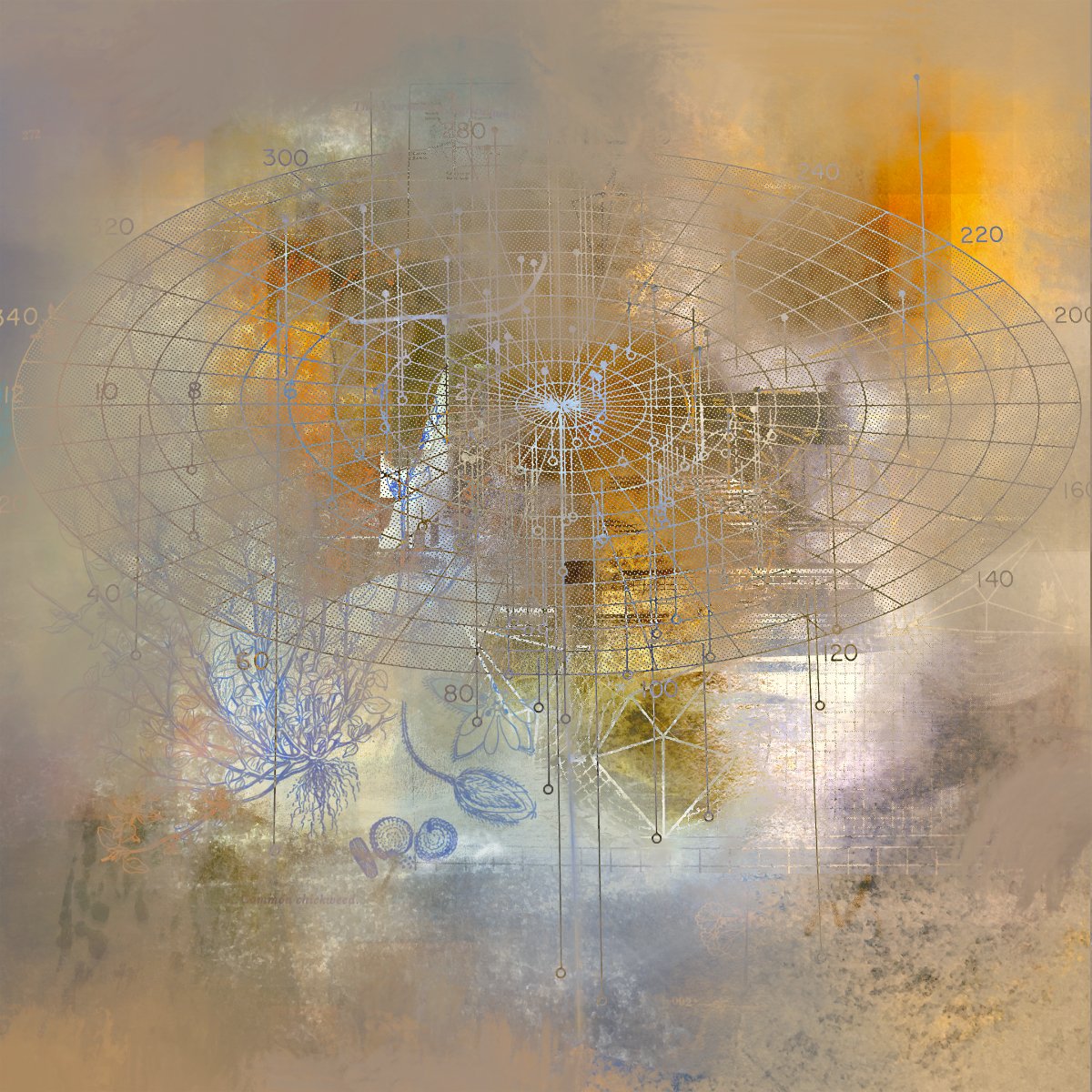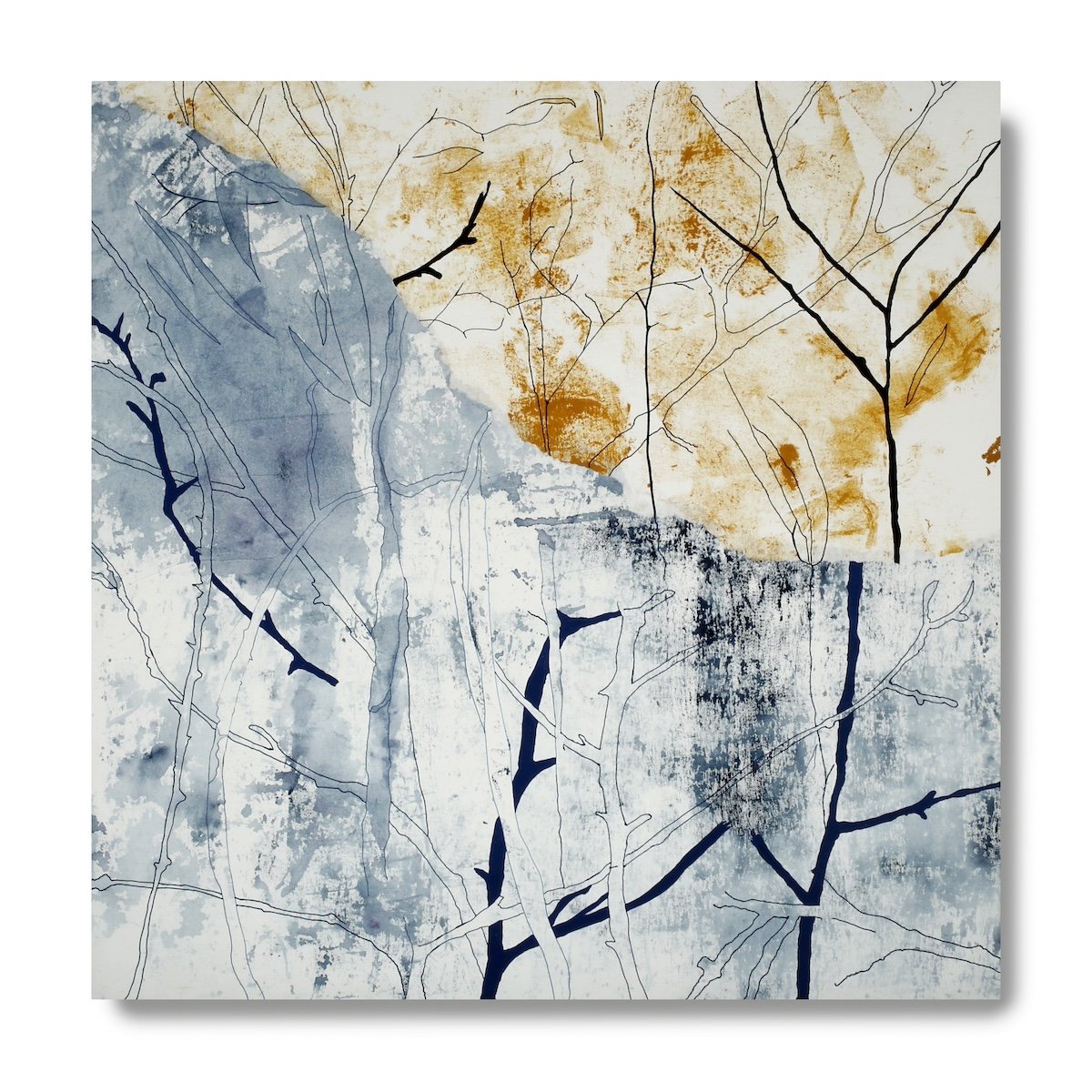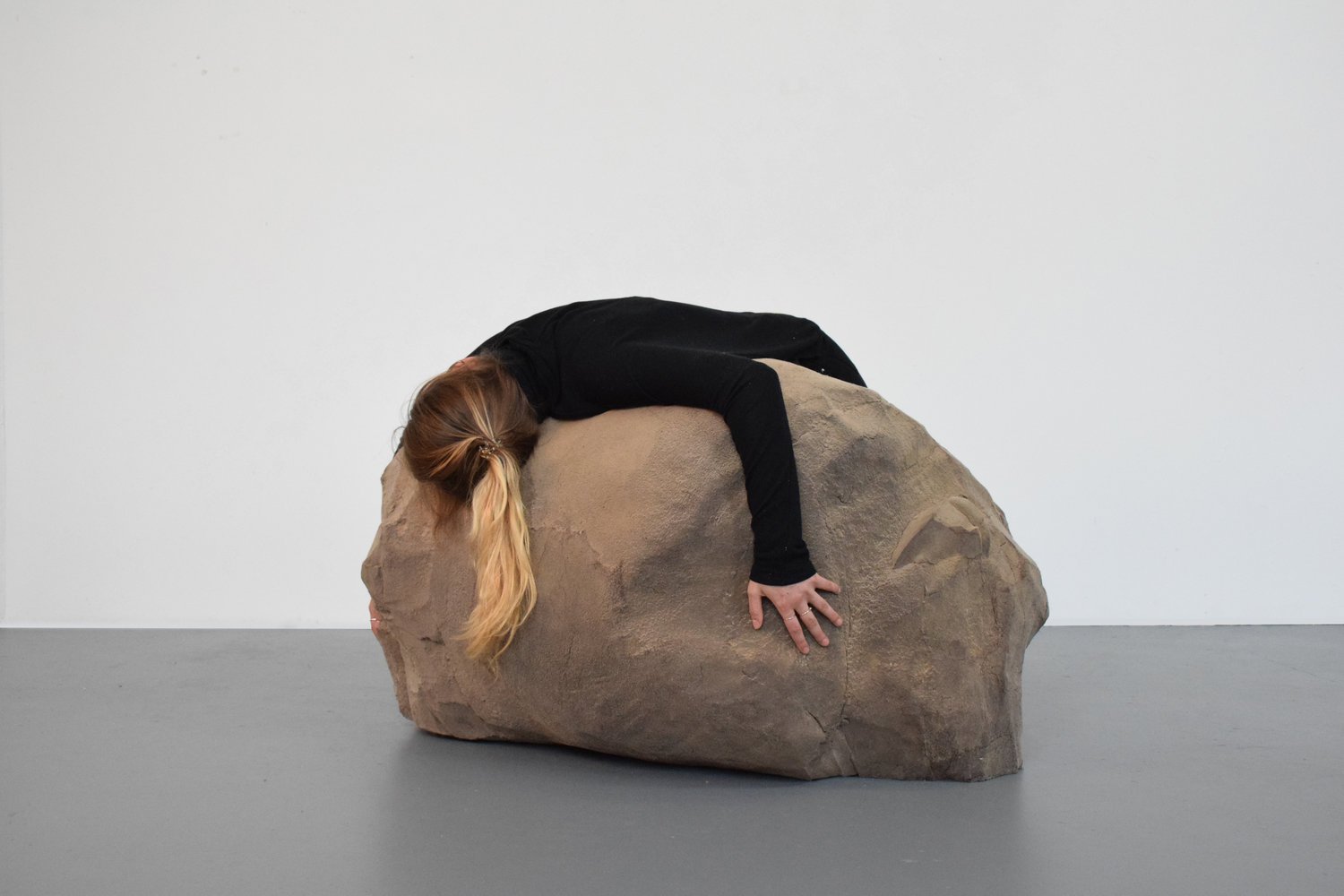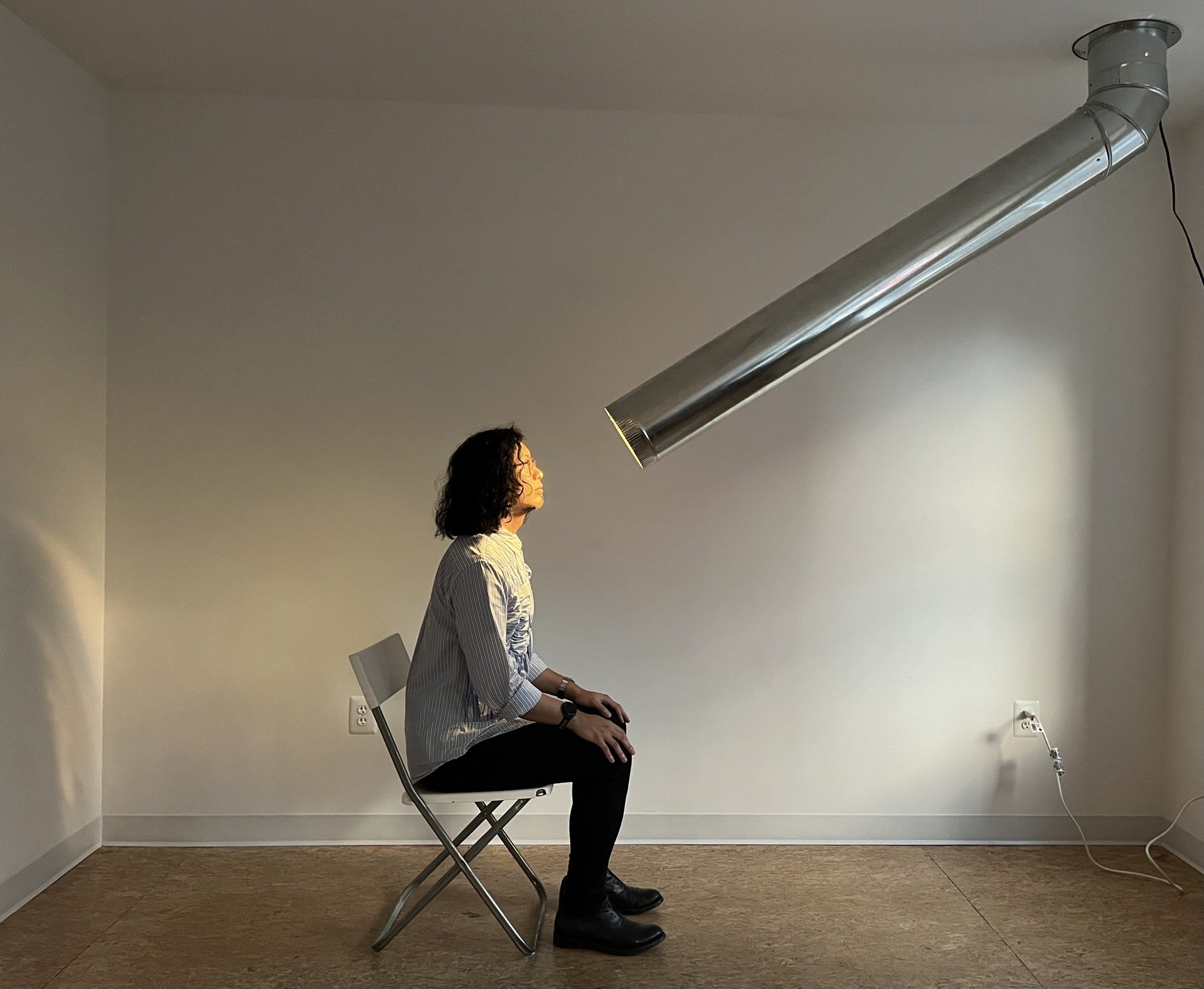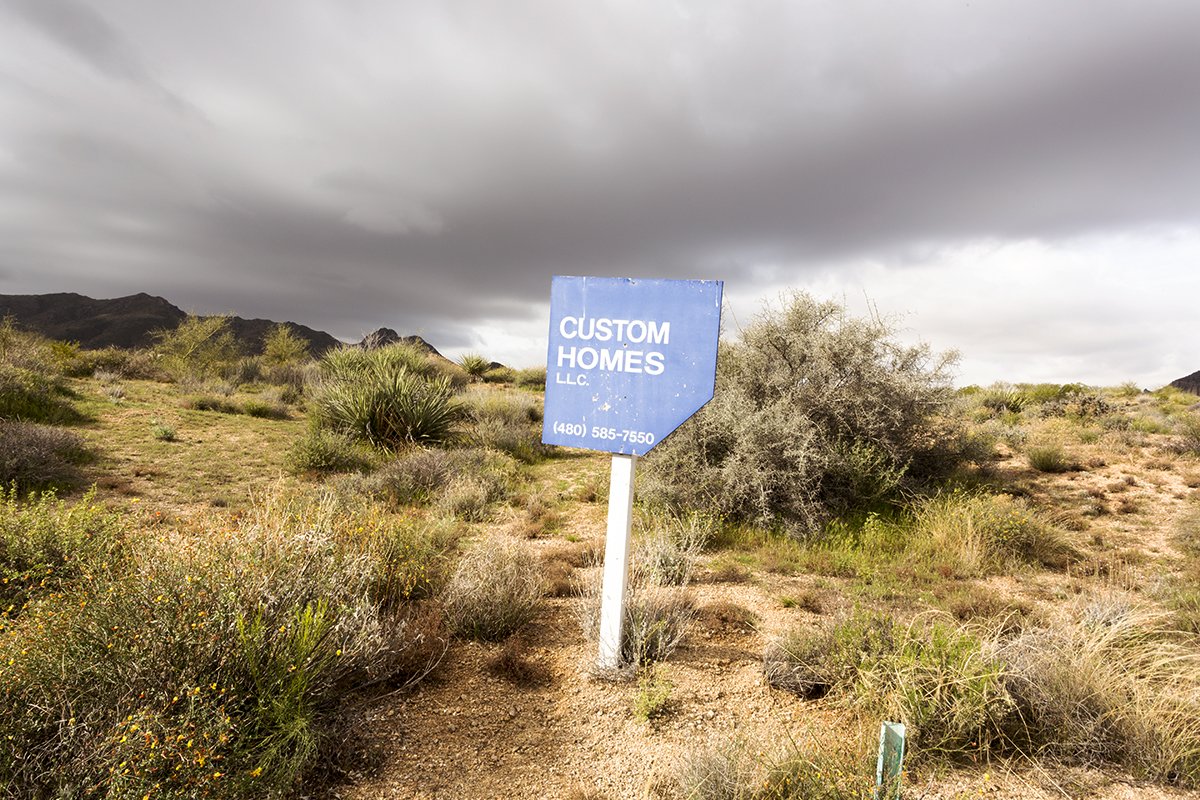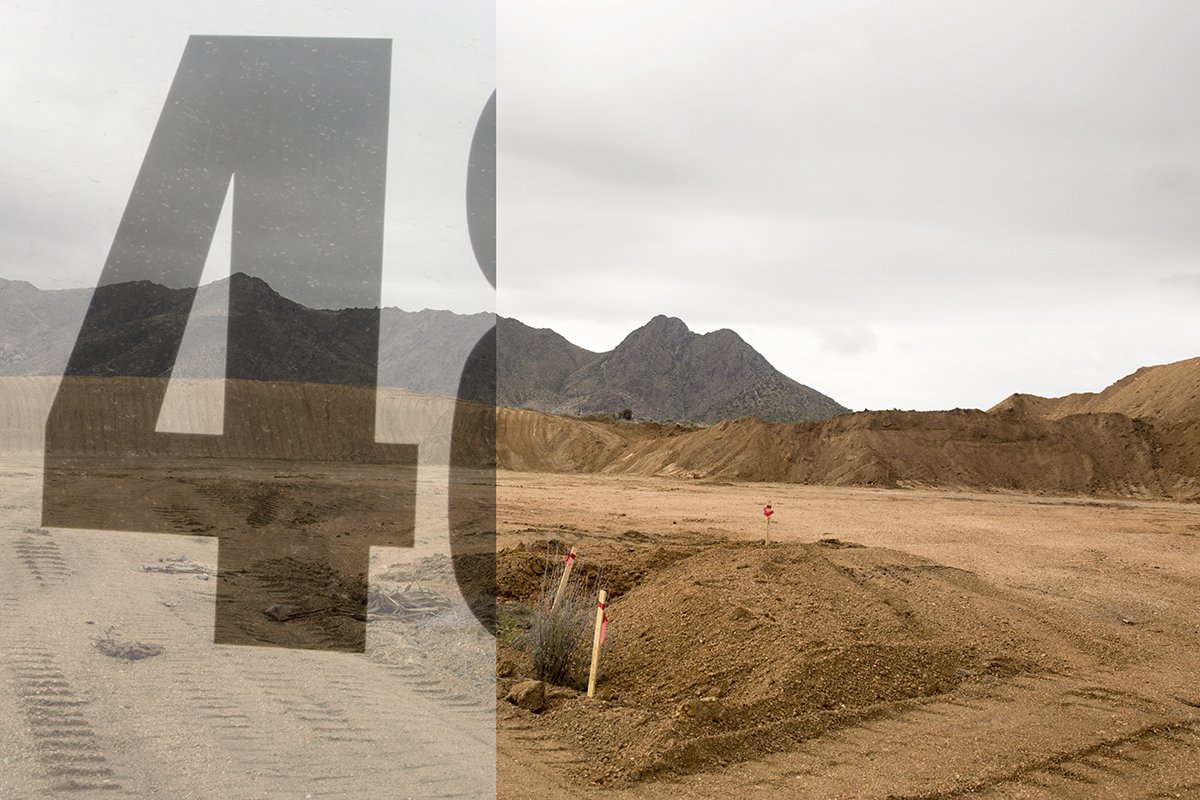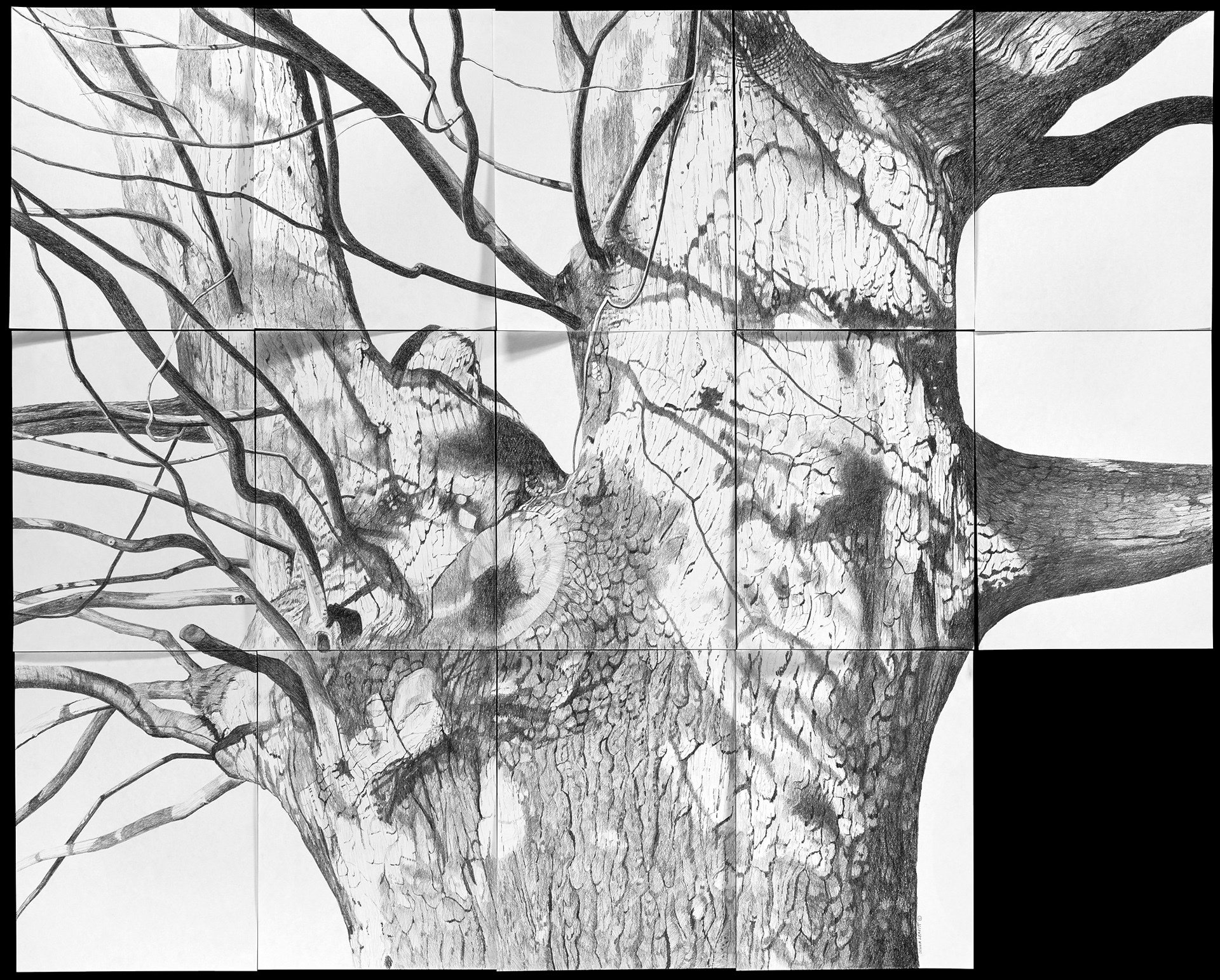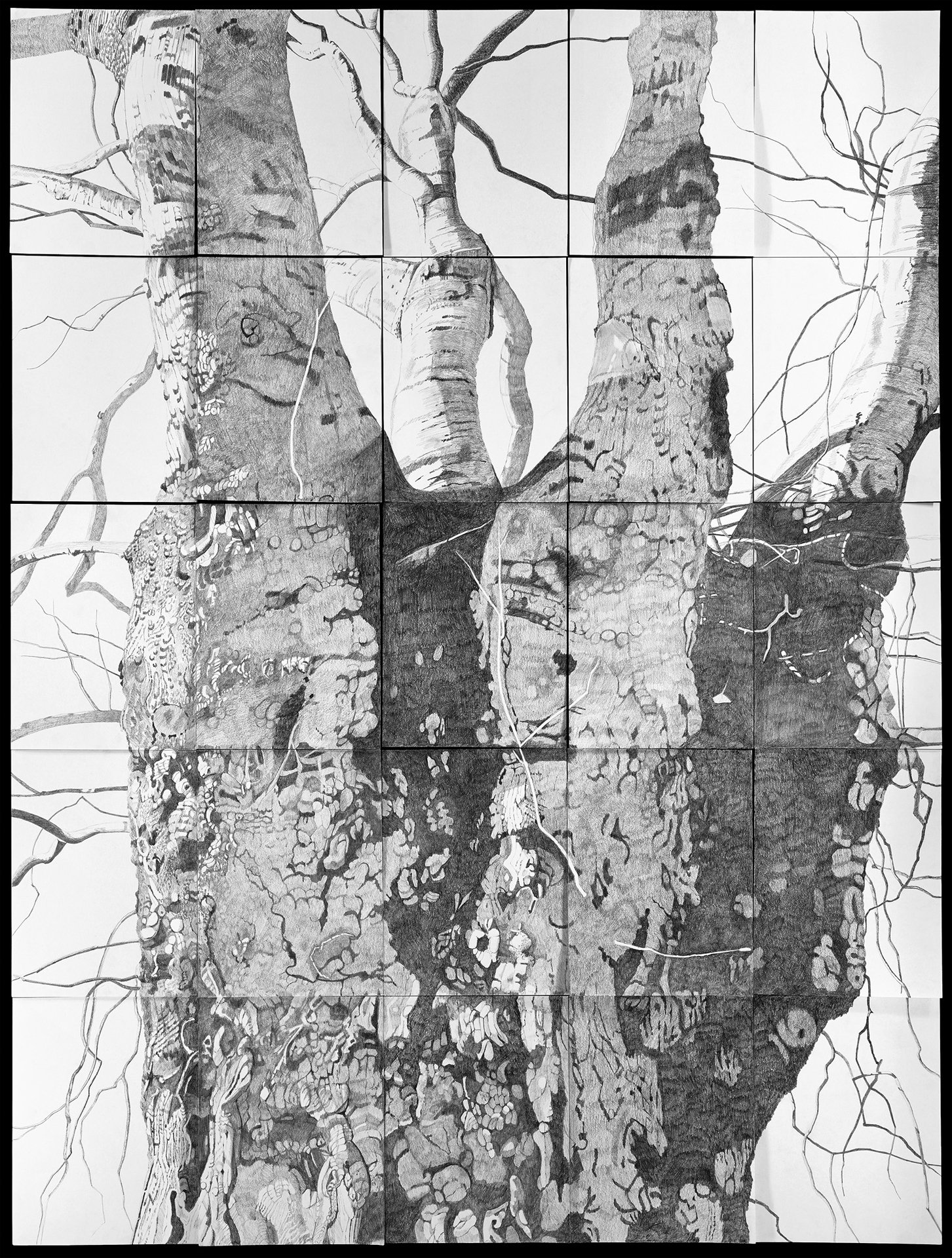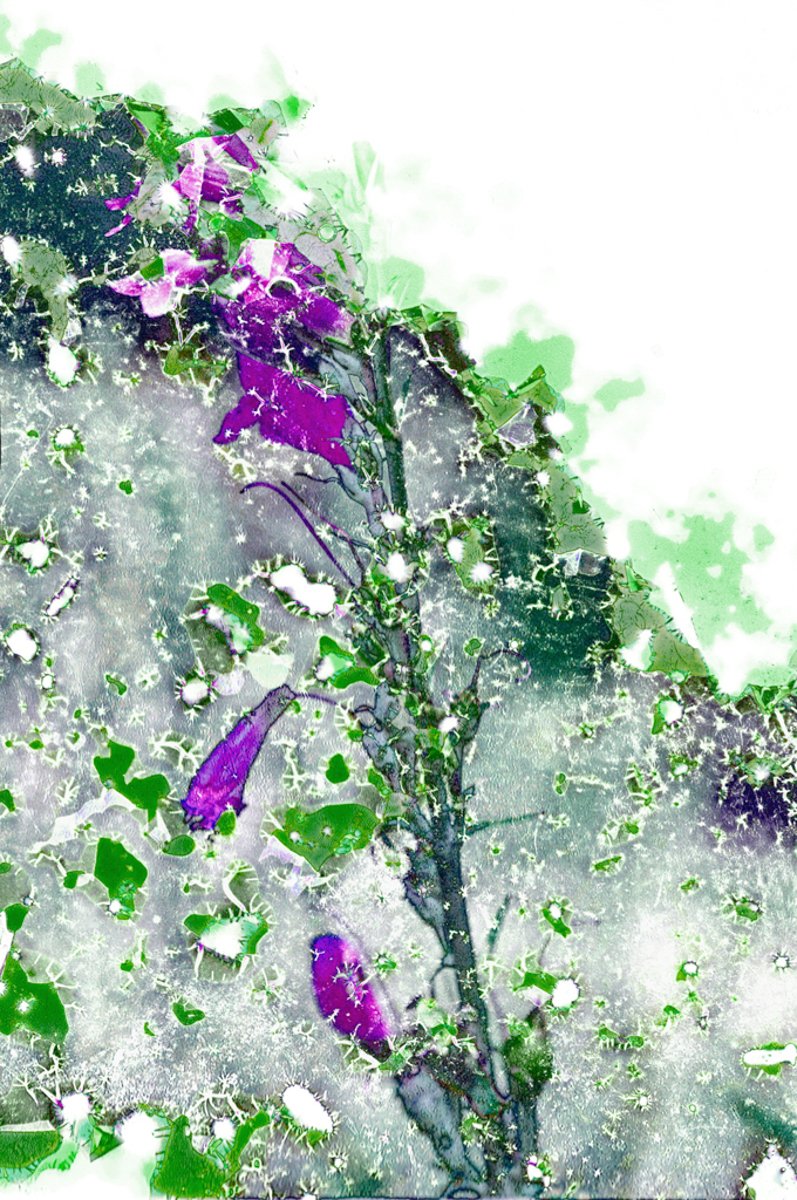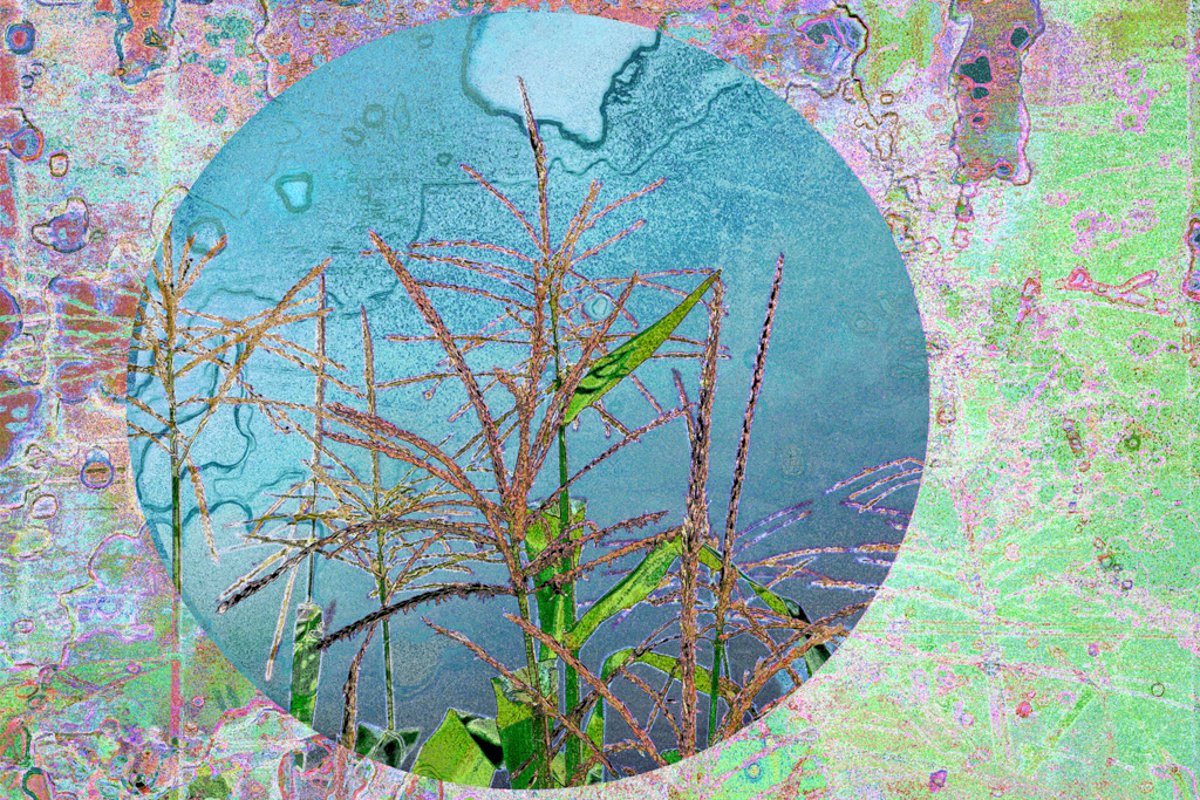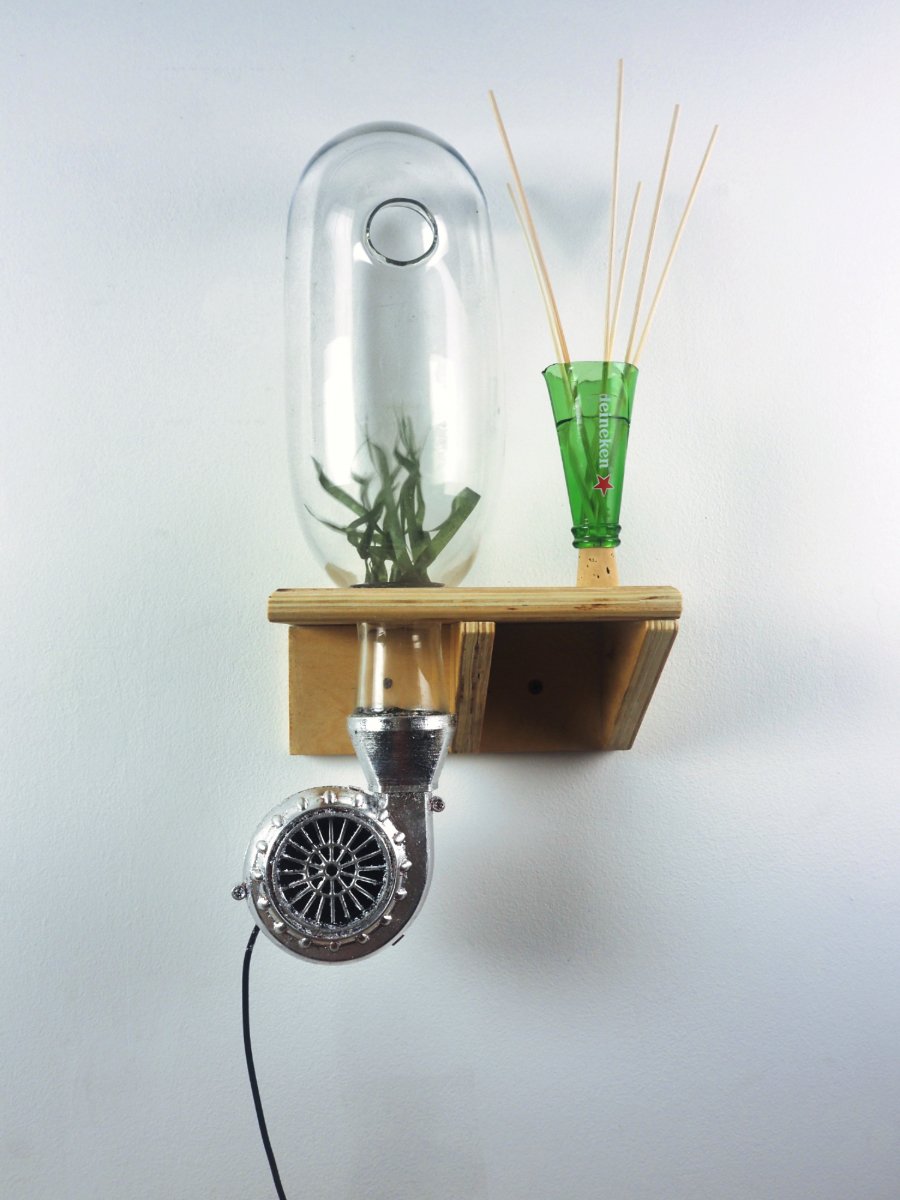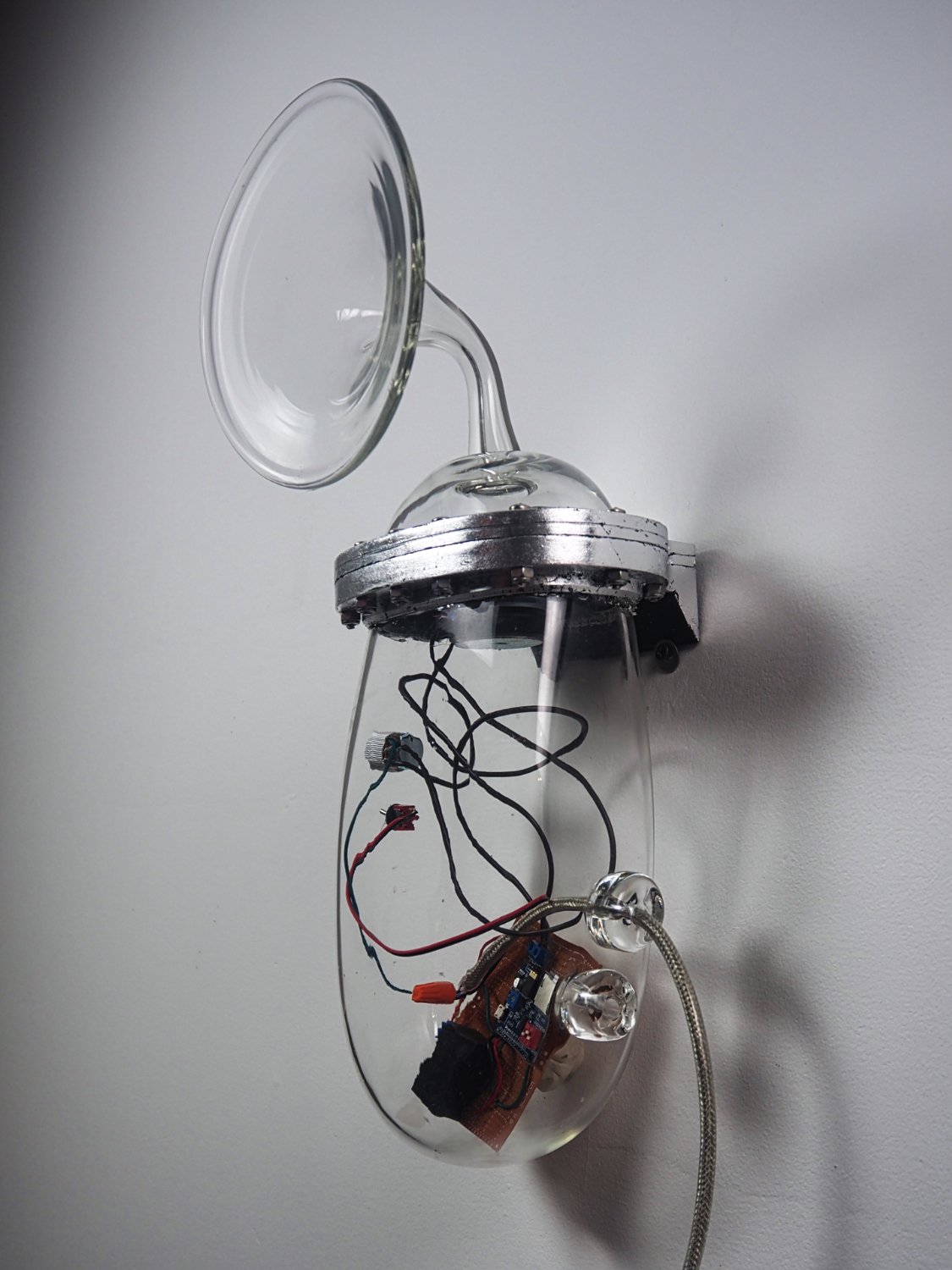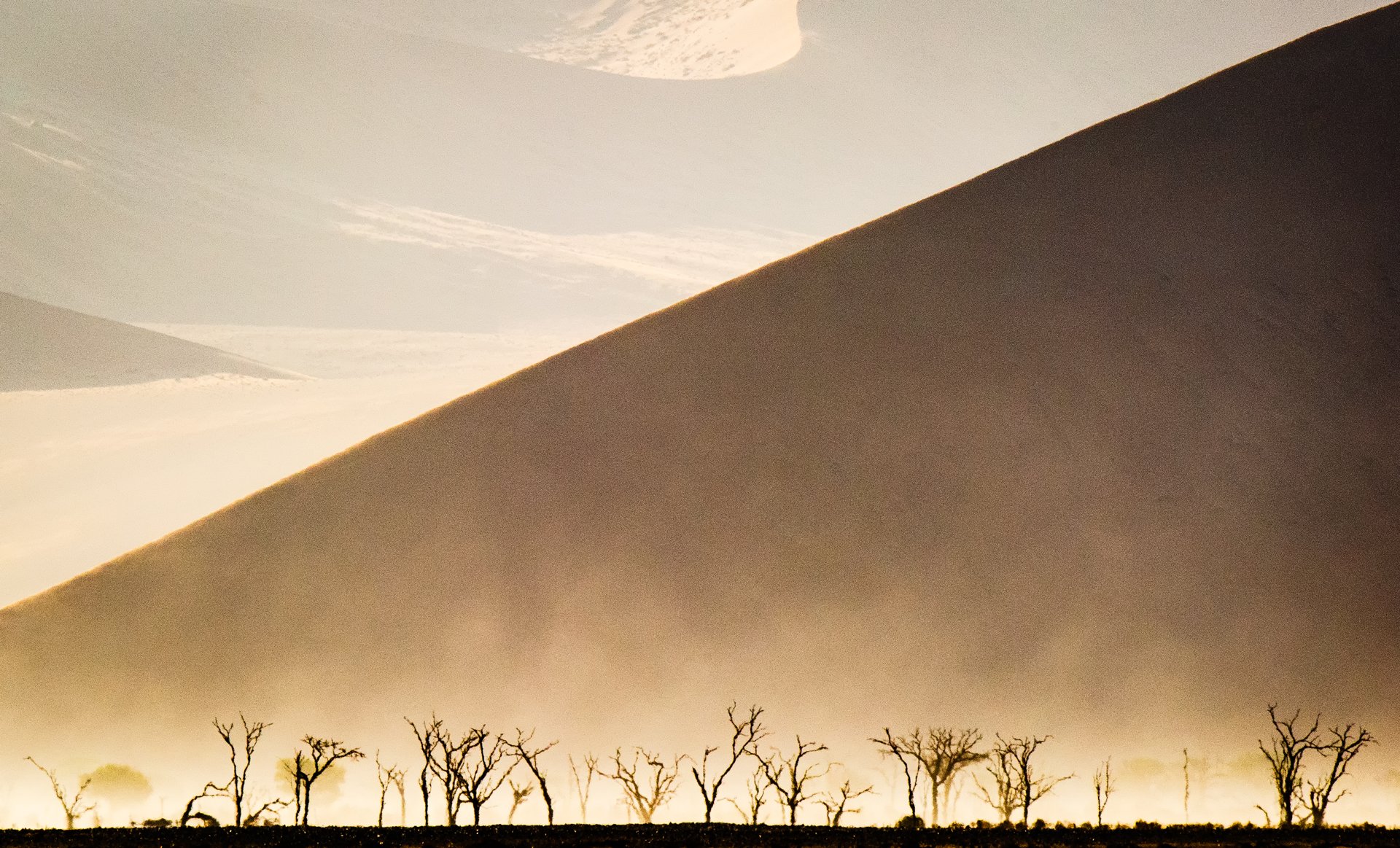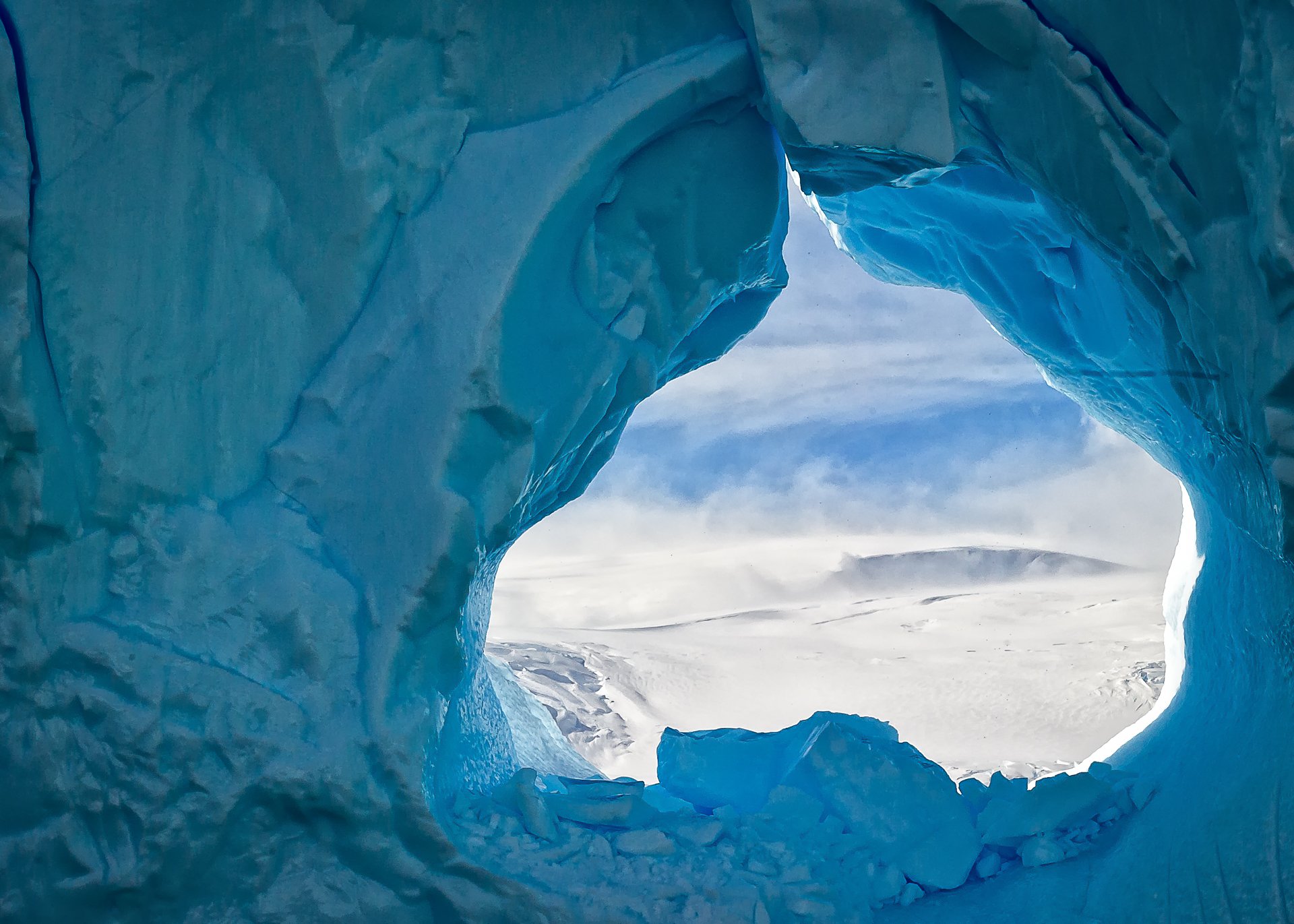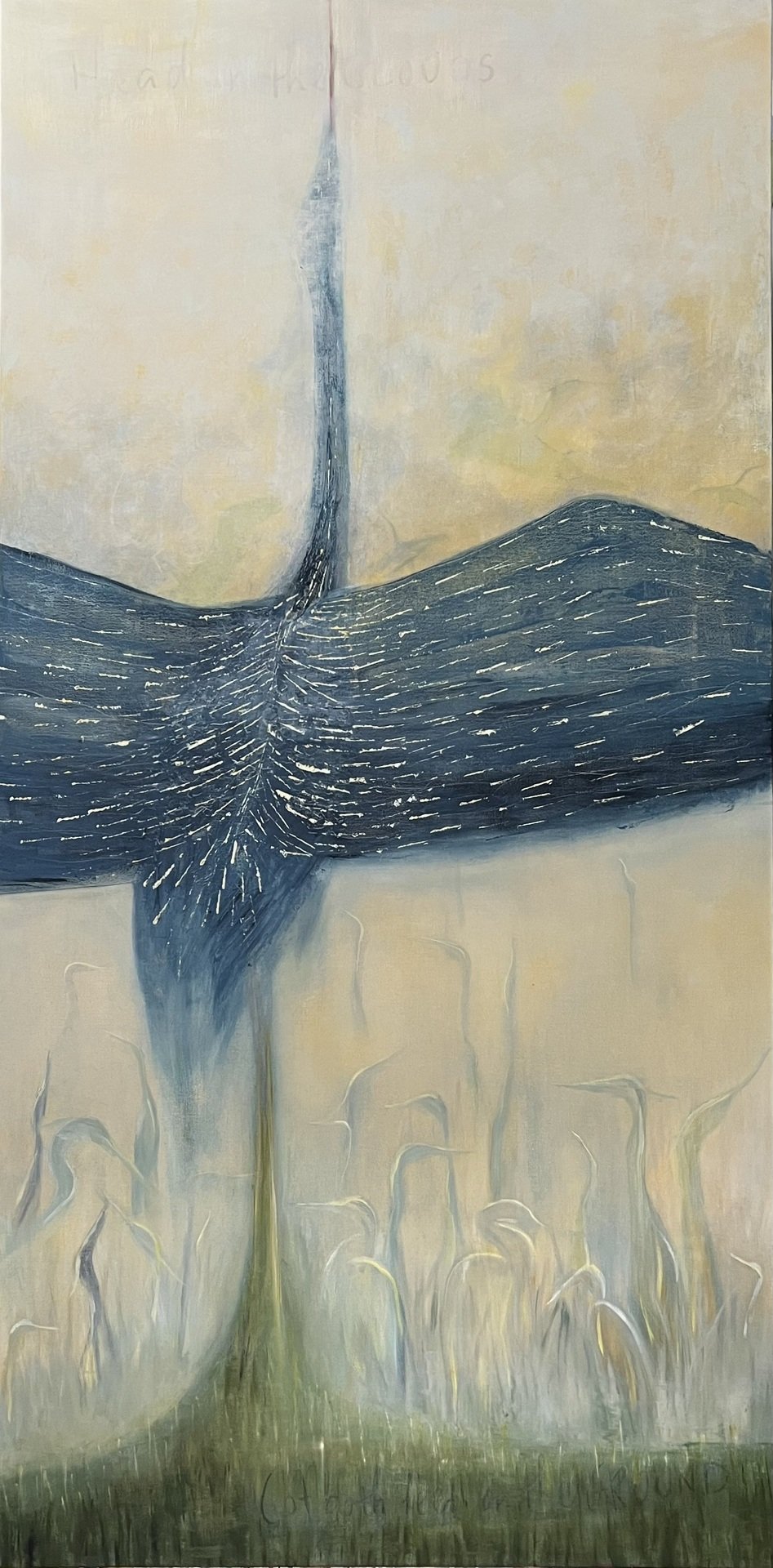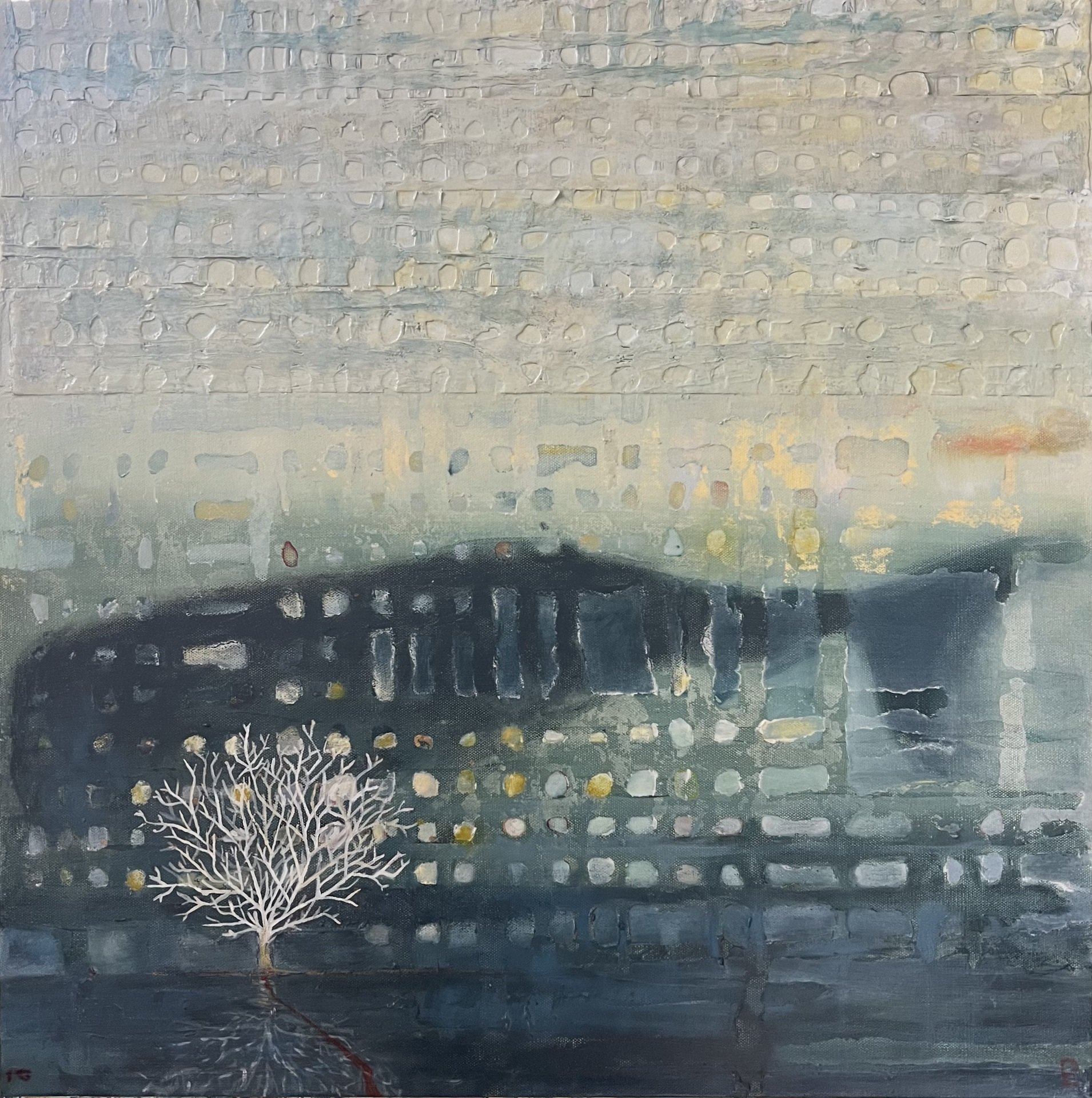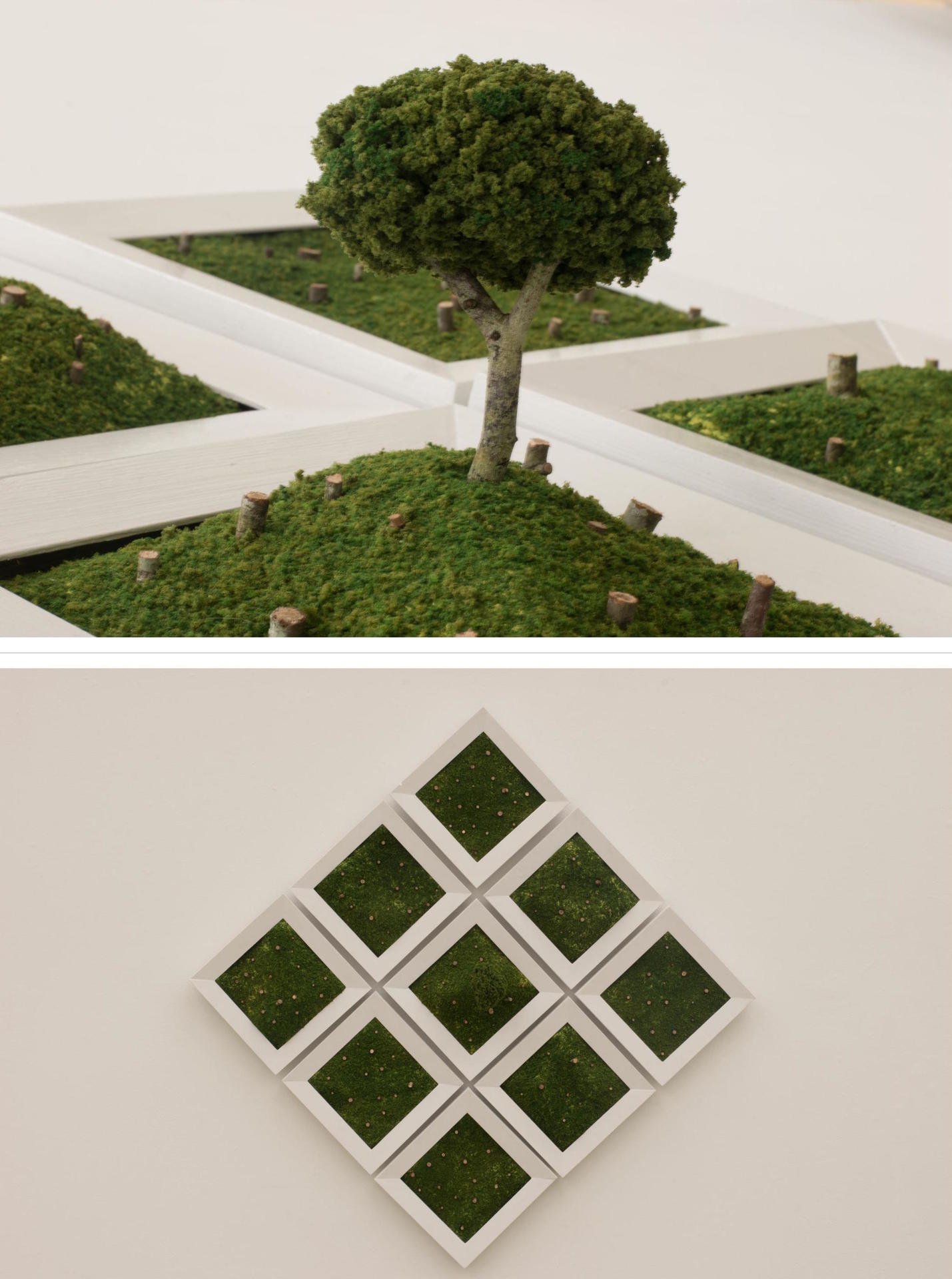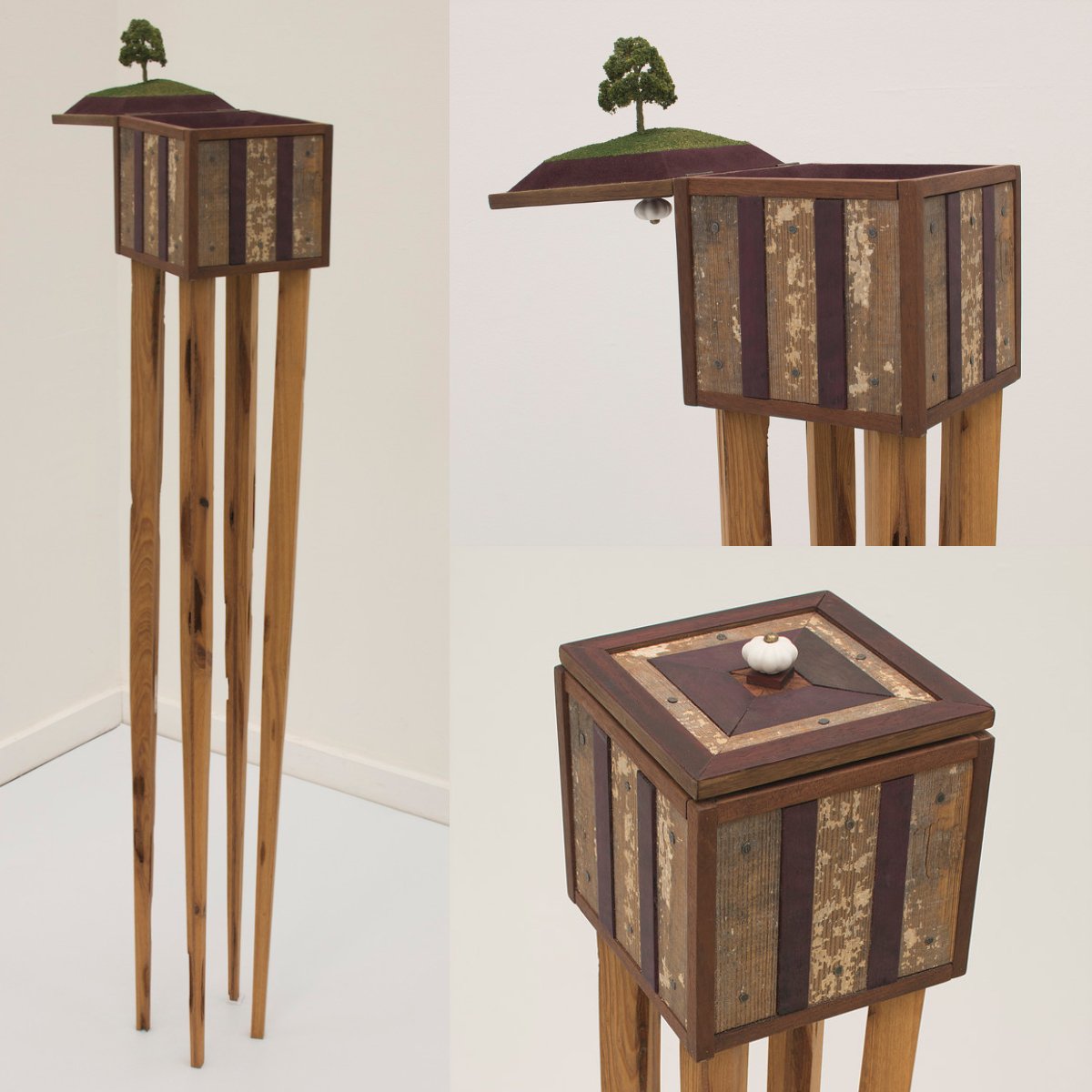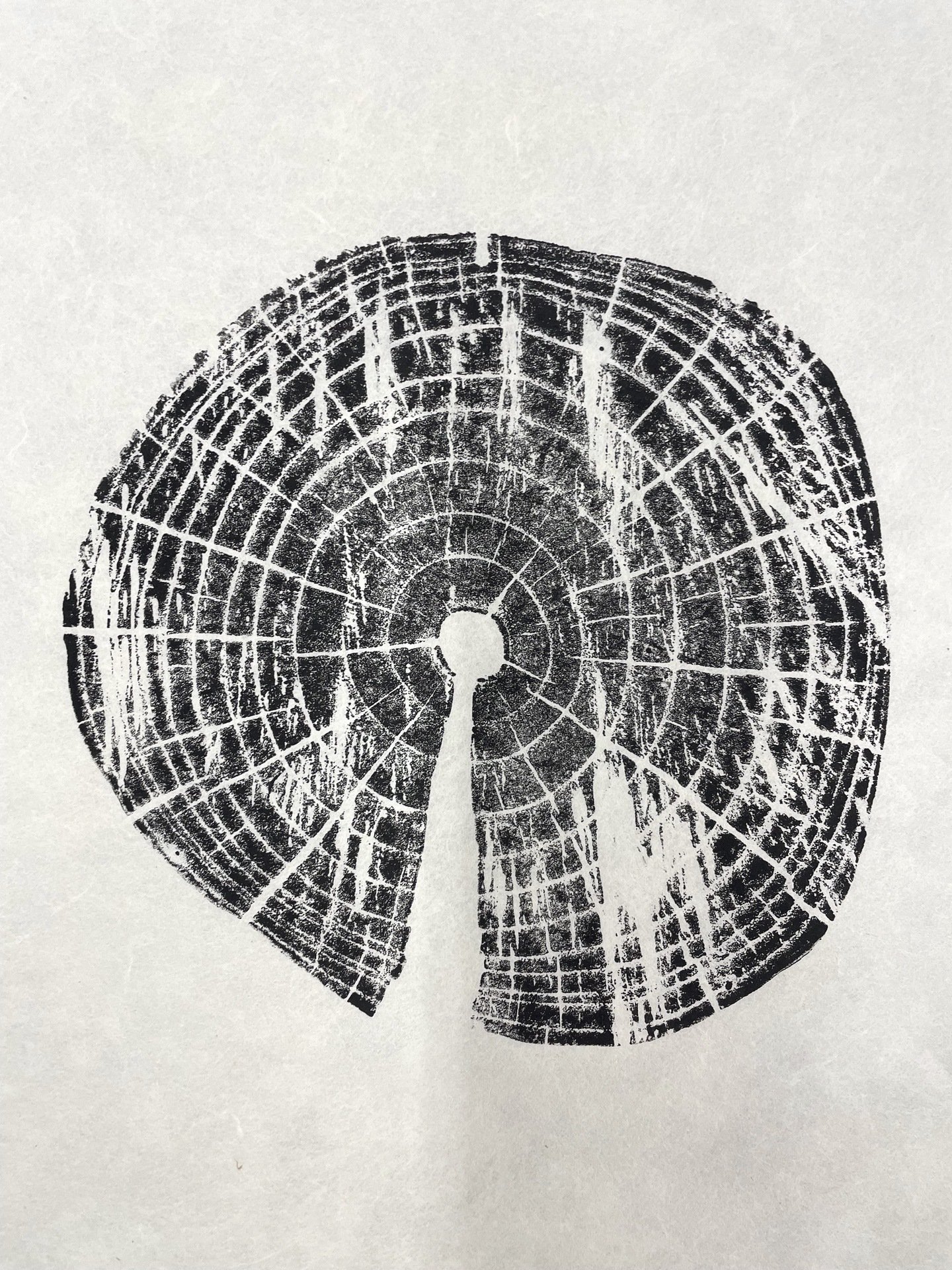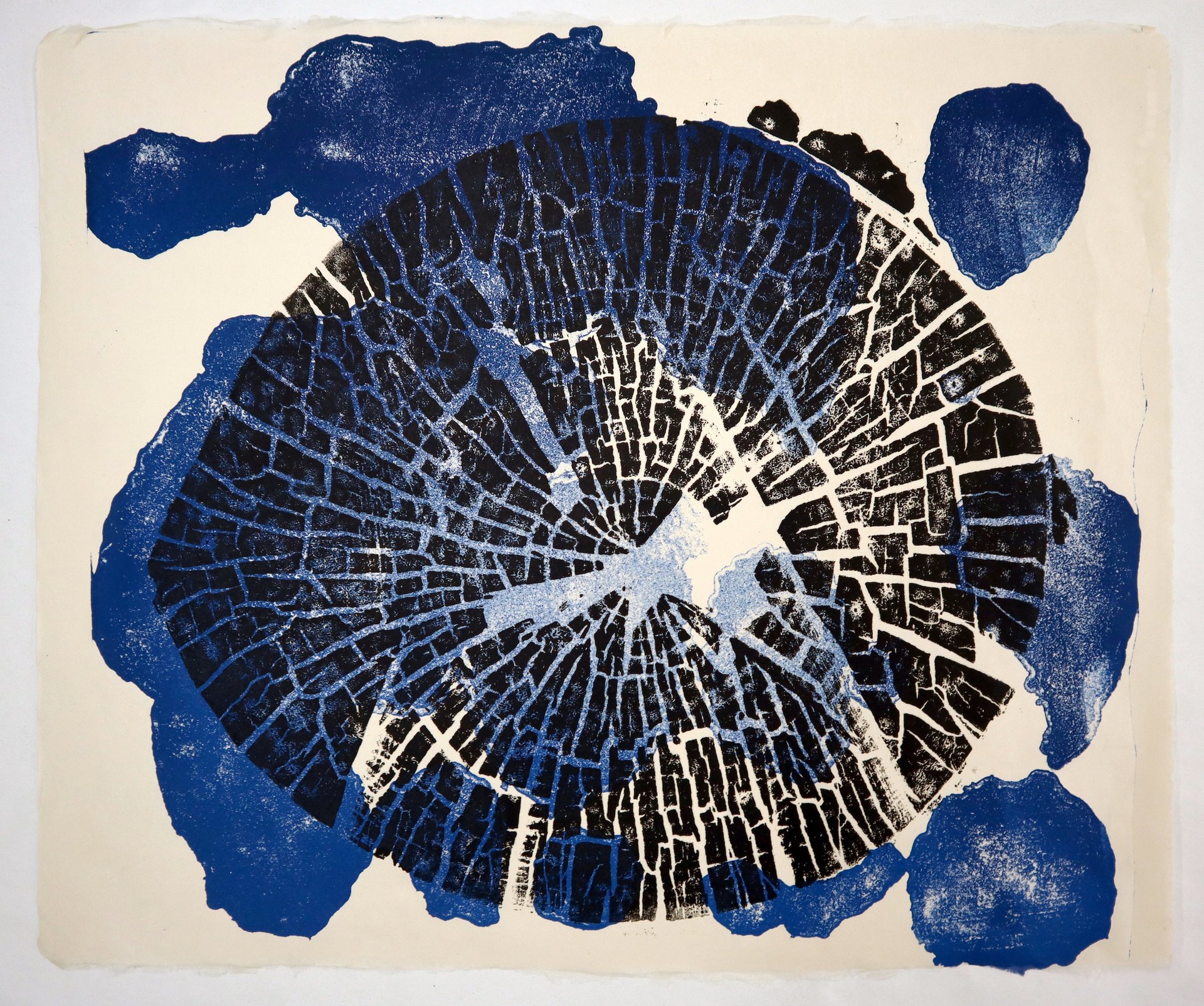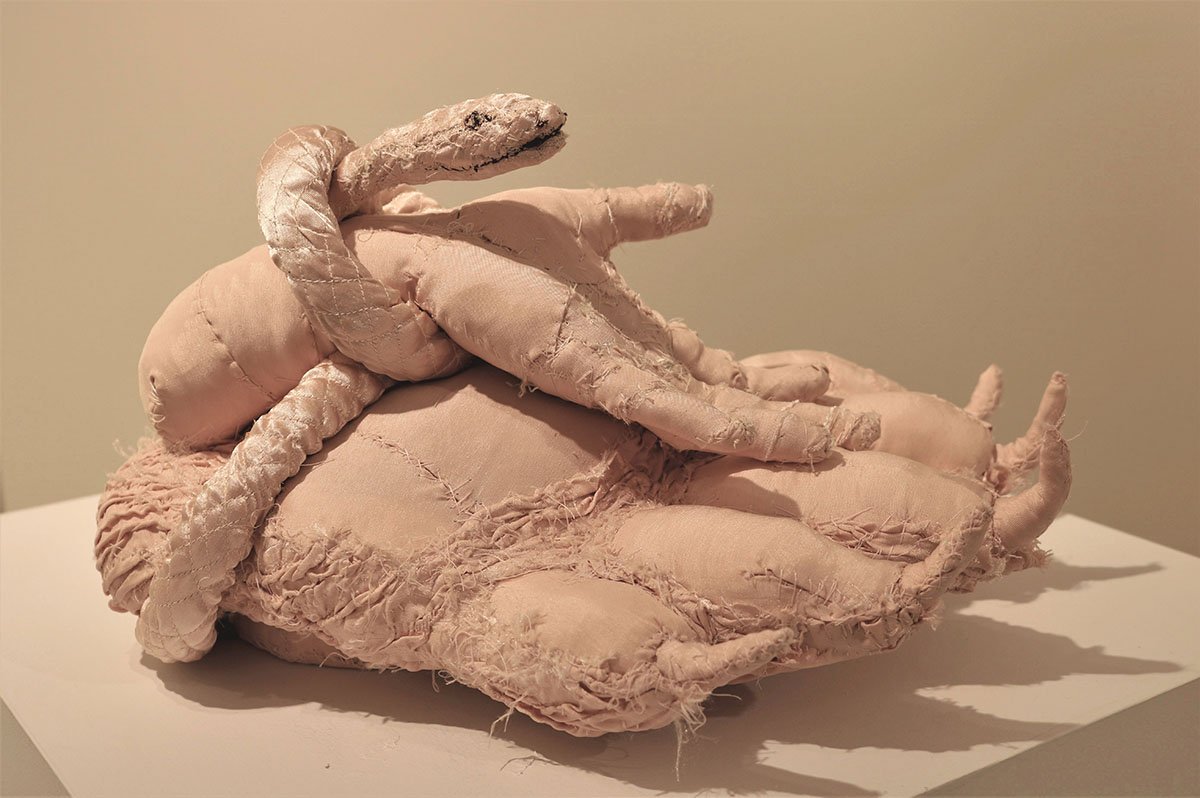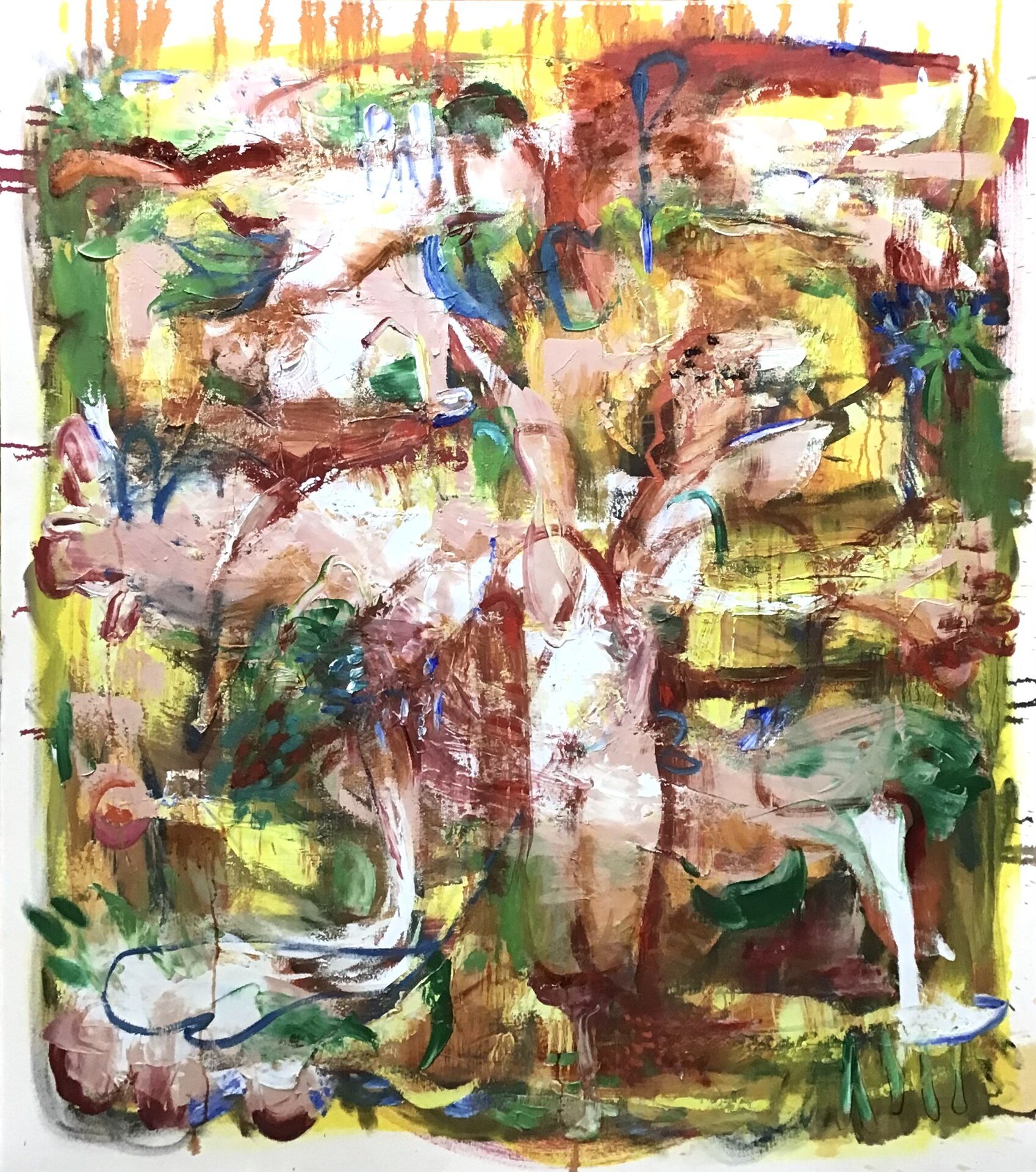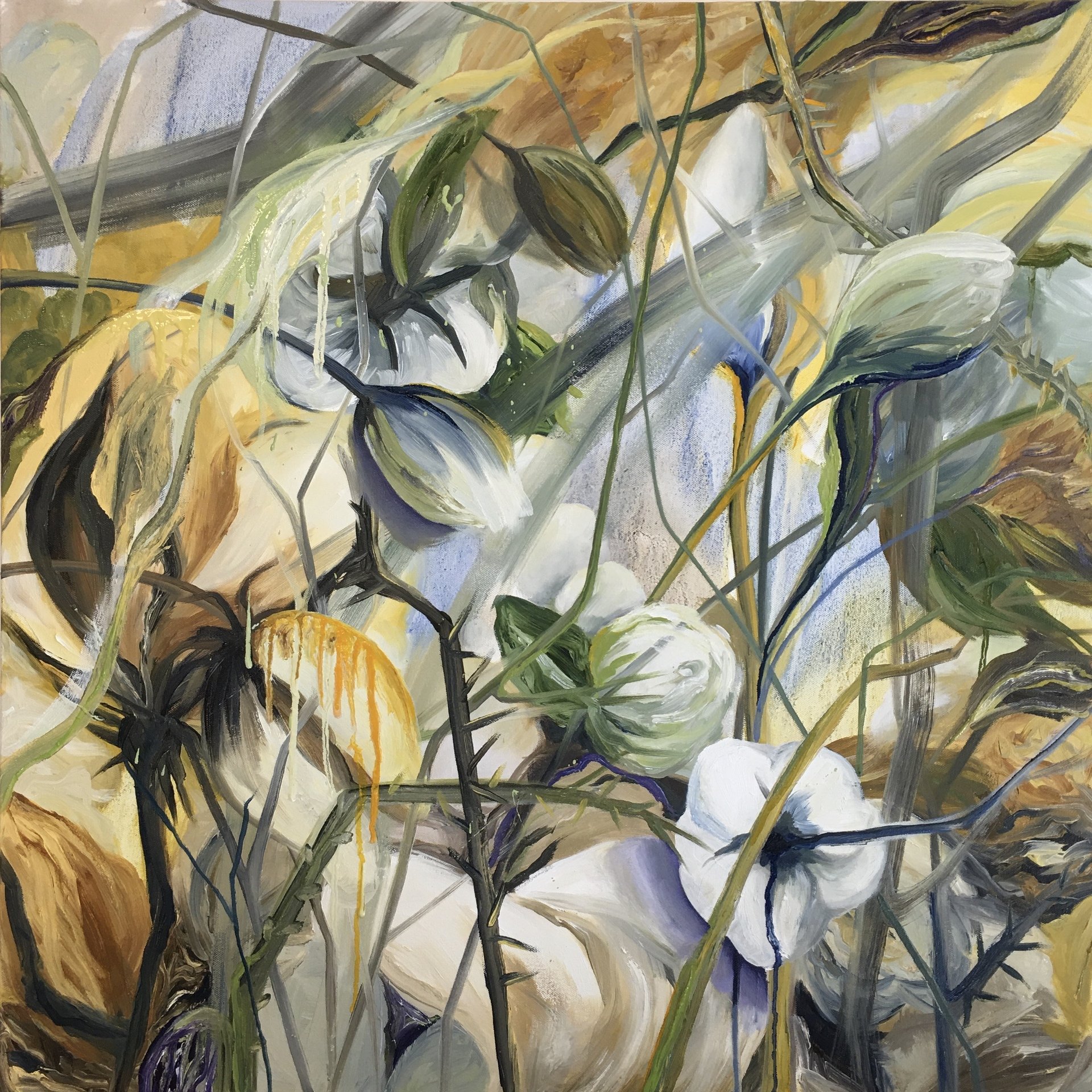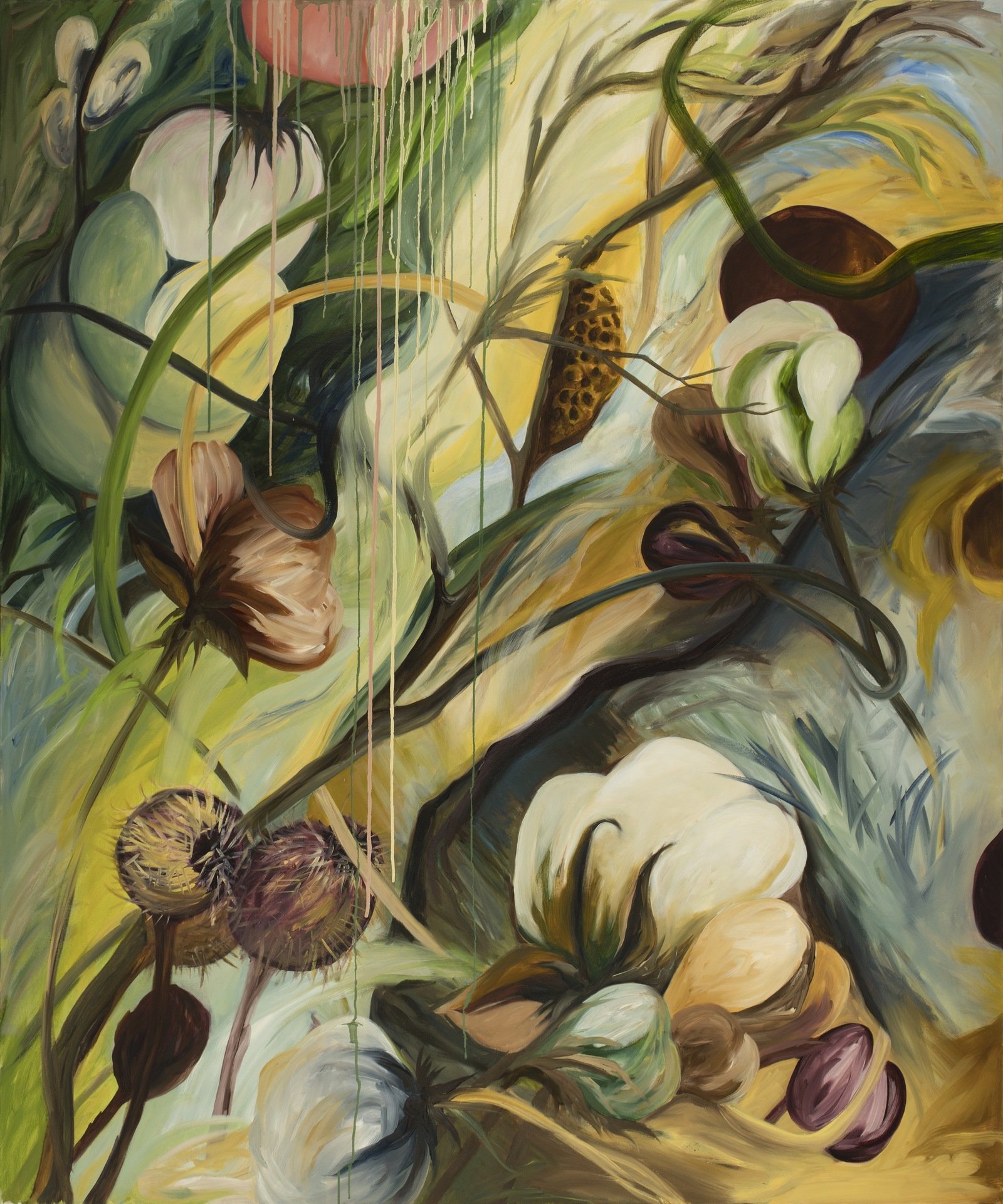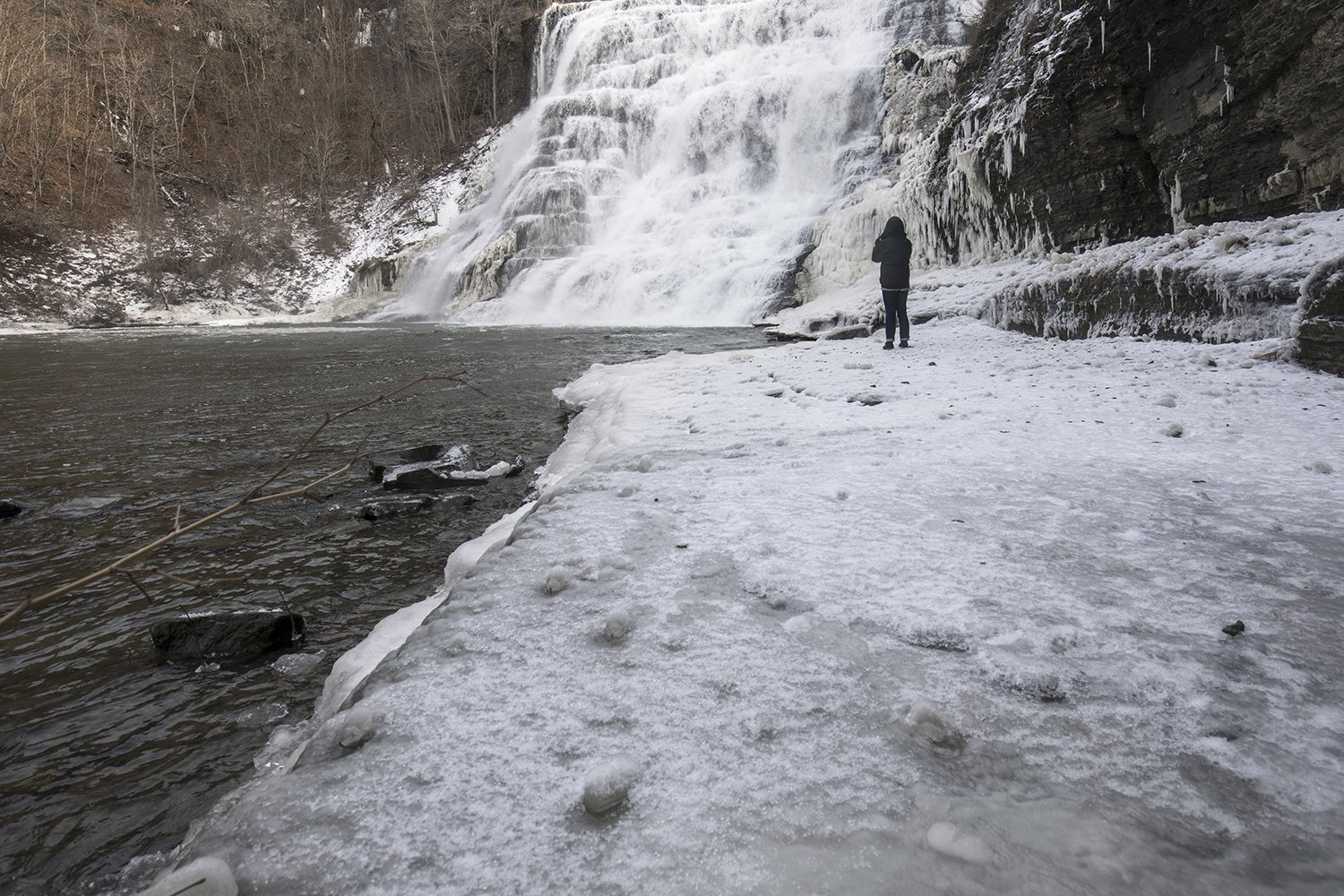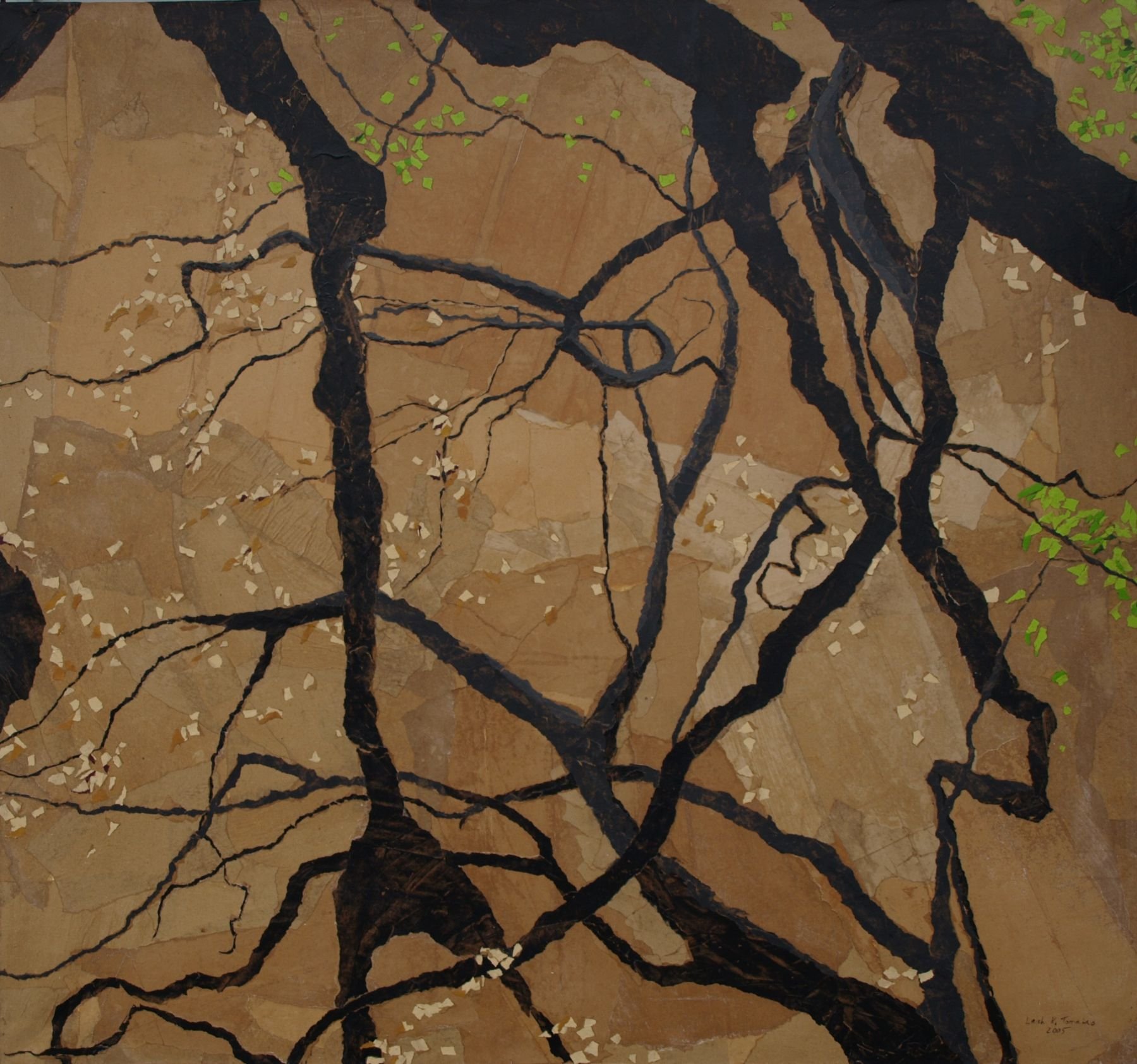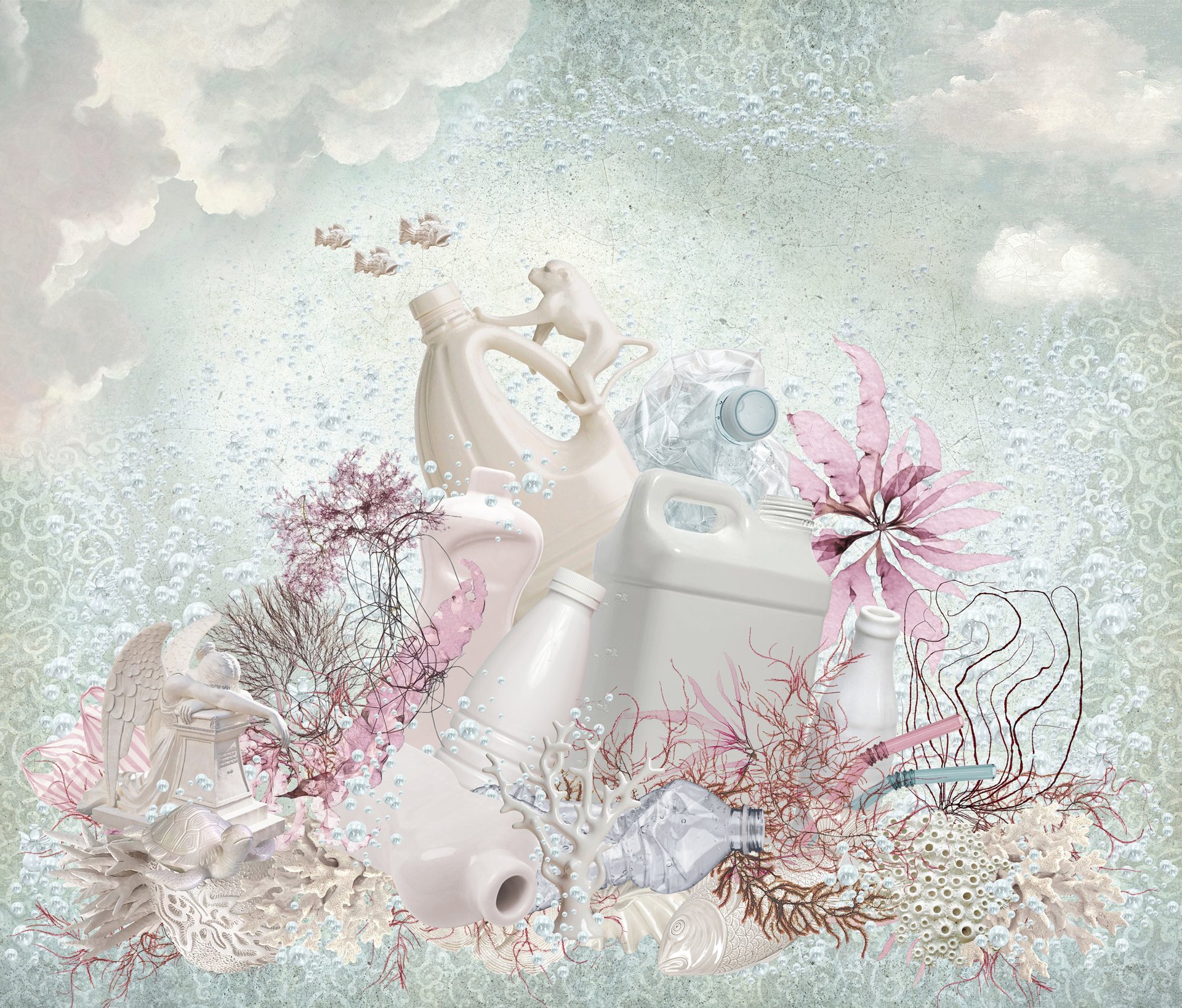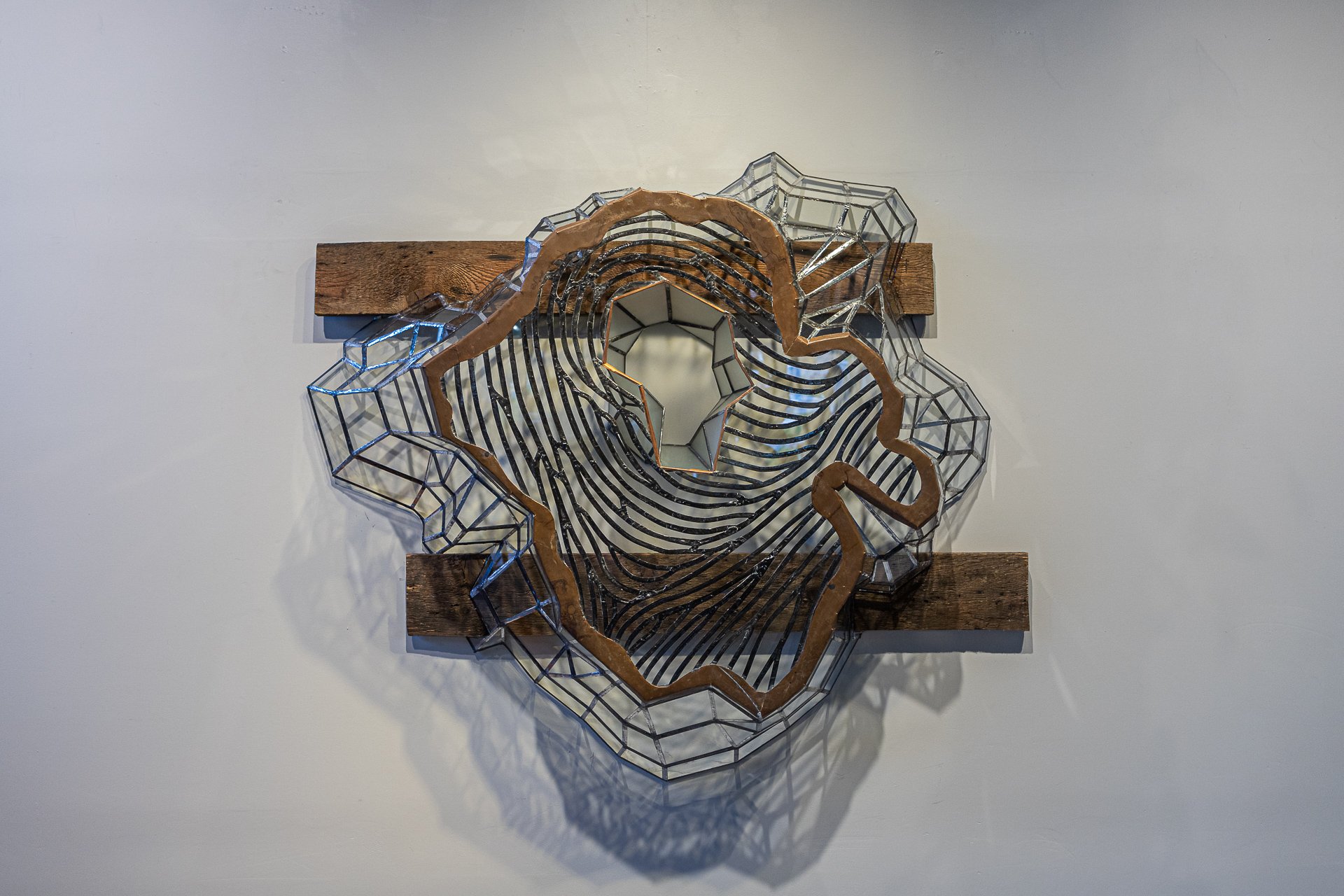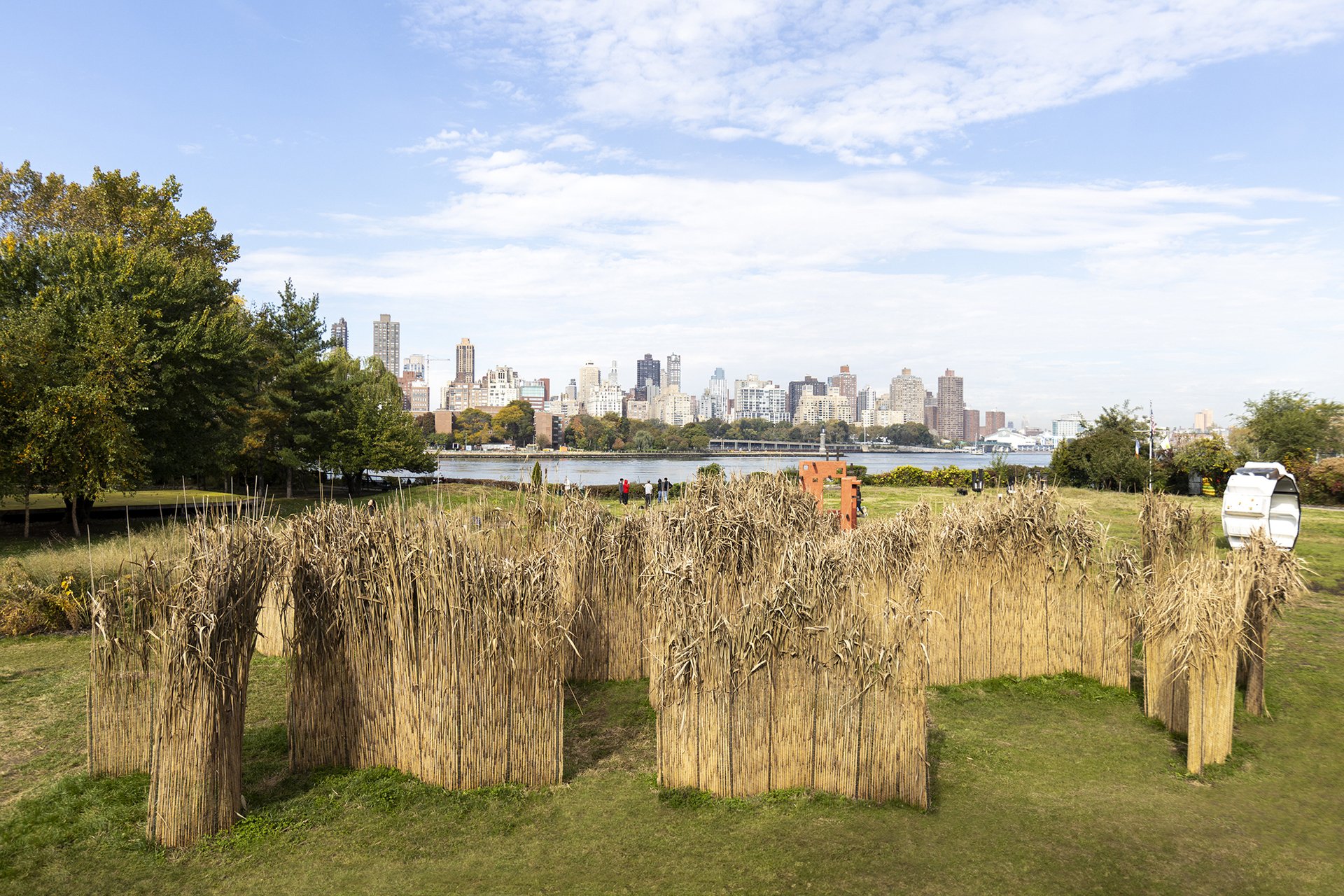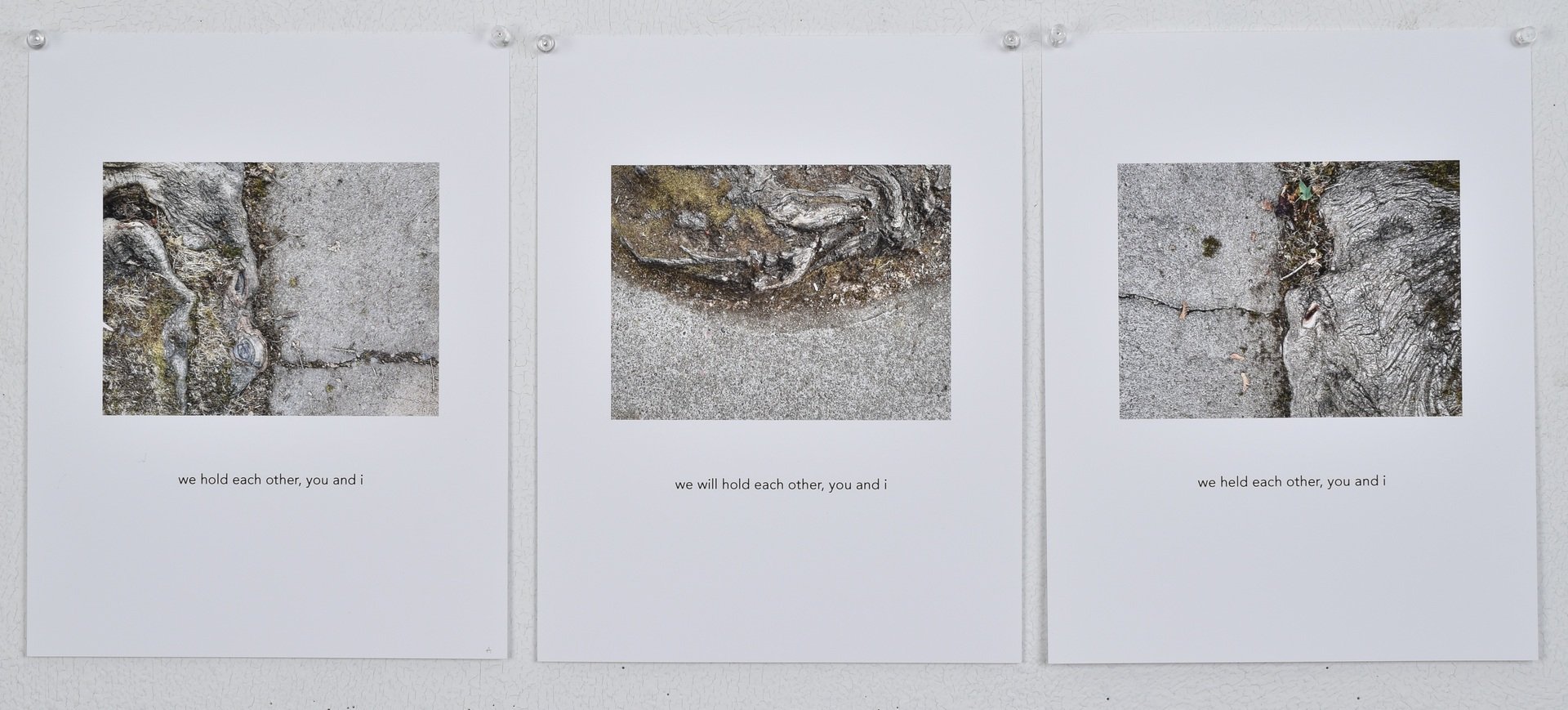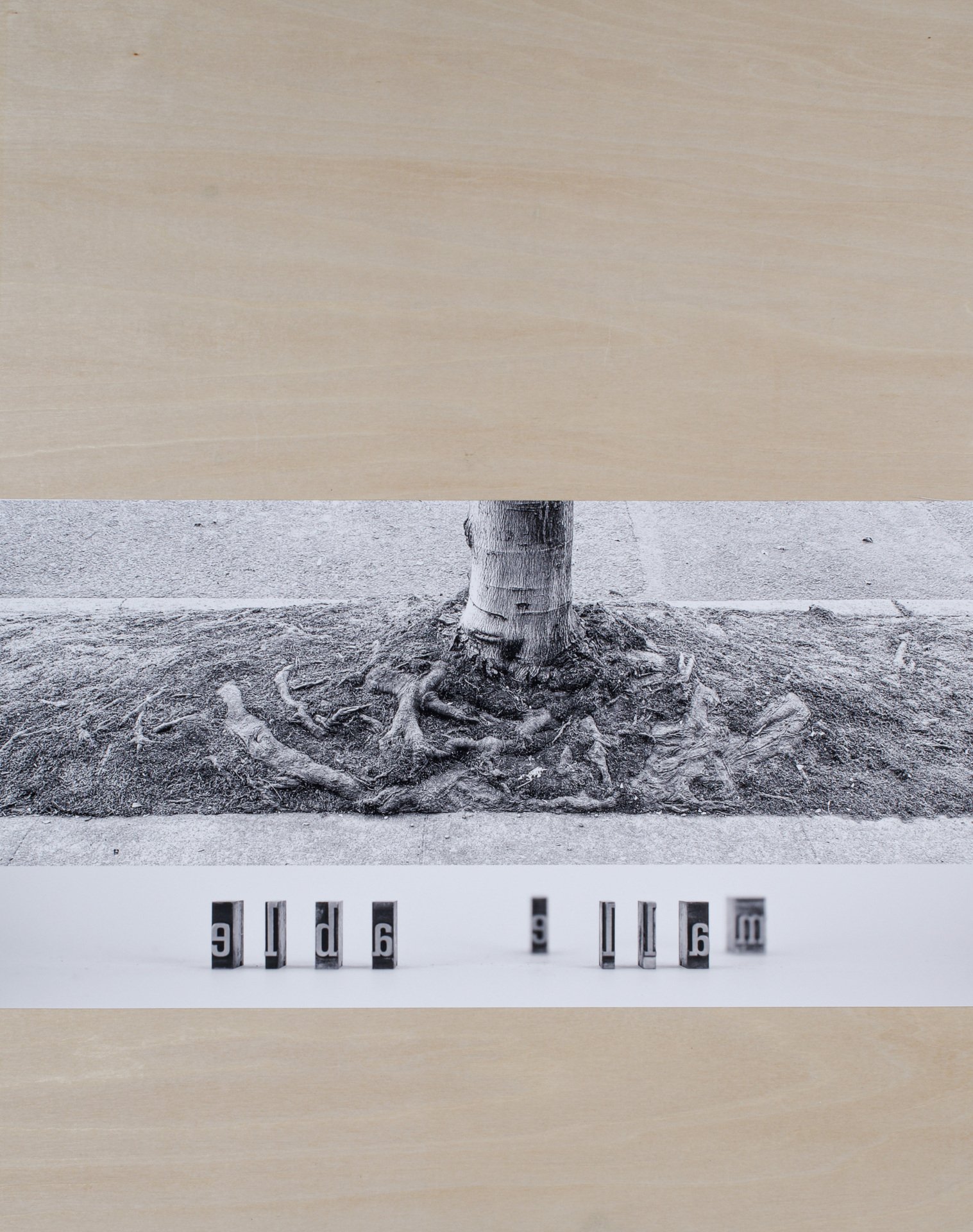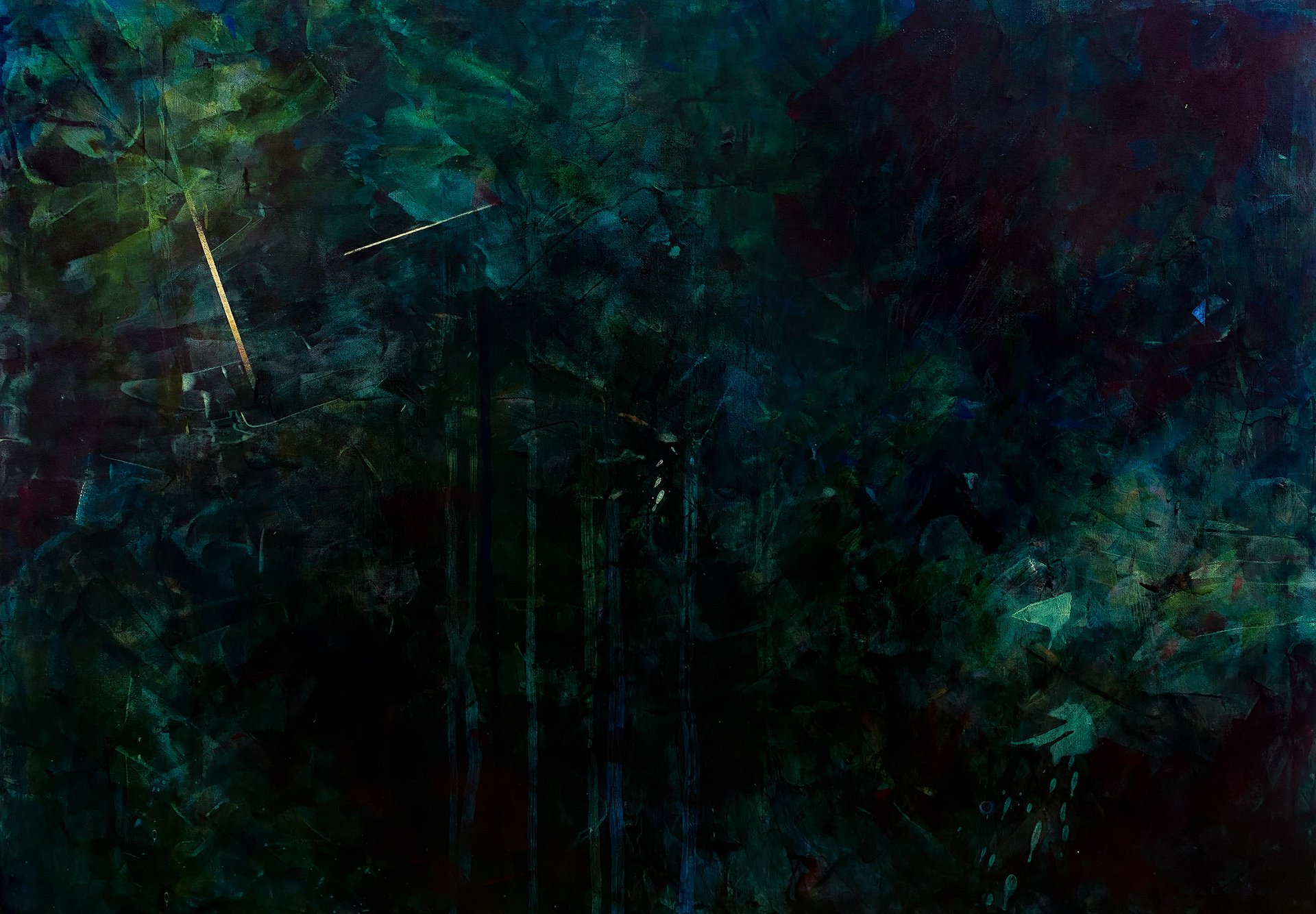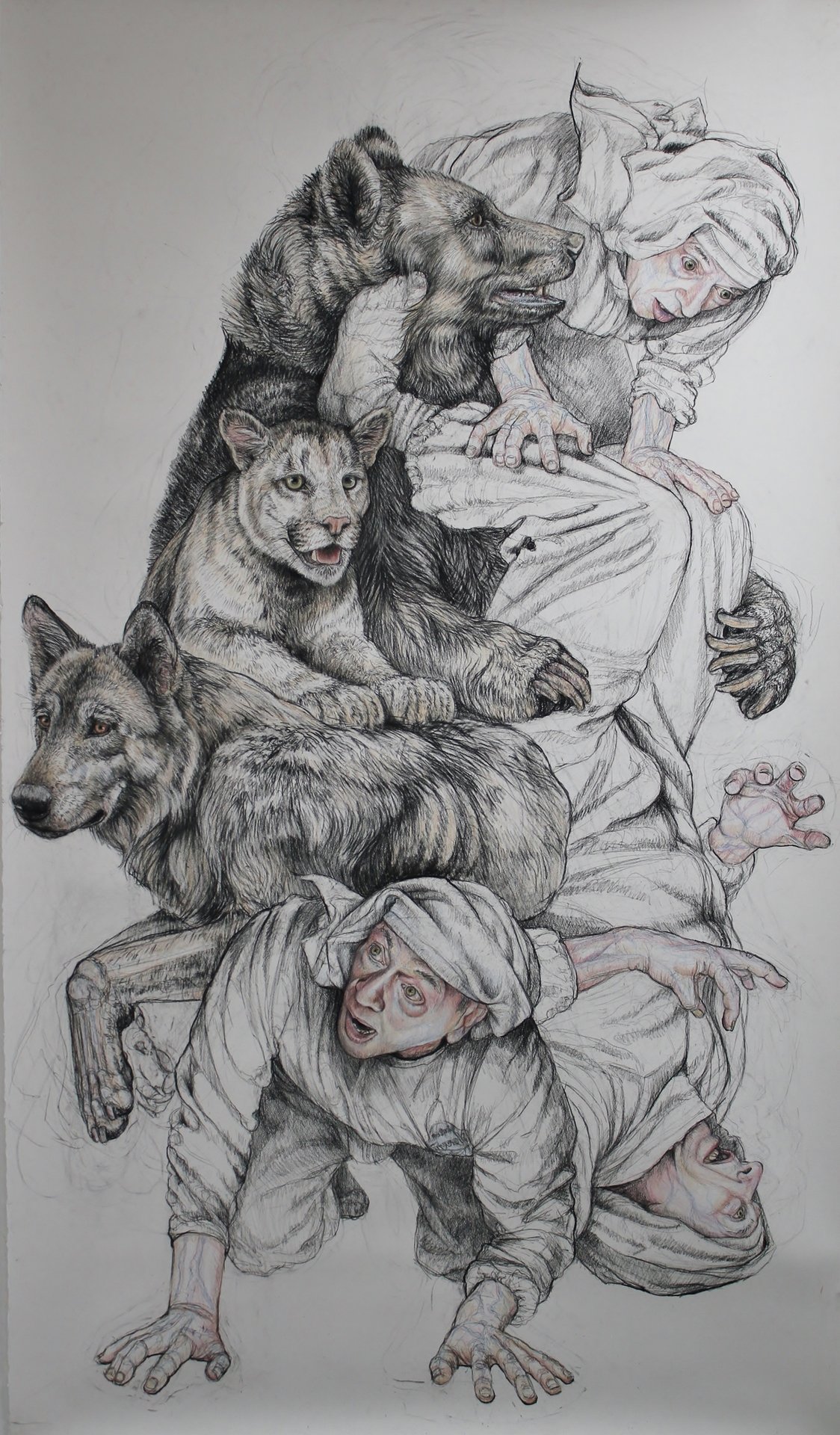Visions of Nature
Juried by Gabriel de Guzman
Curatorial Statement
Visions of Nature presents artists whose work explores how we experience and consider nature and landscape in the 21st century. In traditional landscape painting in American art history, starting with the 19th century Hudson River School, artists such as Thomas Cole and Asher B. Durand portrayed idealized, sublime vistas from mountaintop perspectives. This God’s eye view portrayed sweeping landscapes in which humans could live in tranquility with nature, while perpetuating themes of discovery, exploration, and settlement. At the same time, the Industrial Revolution was underway, and the 1820s and 30s brought the modern invention of photography. Photos could capture light impressions of the visible world and were seen as unmediated images. Many of the earliest photographs by William Fox Talbot and others were landscapes, architectural views, and also camera-less imprints of nature, including silhouettes of leaves, twigs, flowers, placed directly on photo-sensitive paper. Later in the 1960s and 70s, the New Topographics, including Bernd and Hill Becher, Robert Adams, Lewis Baltz, and others, focused on the post-Industrial era, showing an unromantic view of the landscape. Their photographic views revealed how humans were encroaching on the land, intervening on nature, and building industrial structures that marred the American landscape. These images showed the aftermath of the human conquest of land for development and resource extraction. Land art and earthworks by Robert Smithson, Walter de Maria and others, perpetuated the colonial mentality of man’s right to make their mark on territorial land.
Working in various media, artists today are taking cues from earlier art movements but are recognizing the consequences of an incessant human-centered occupation of the land. The artists in the exhibition Visions of Nature are addressing our current relationship to nature but are learning from the past. Several artists are looking back, longing for an undisturbed experience of nature; however, this new work is not merely nostalgic. Artists are looking beyond how we “see” nature, and also considering how we experience it with multiple senses. They are asking how we can embody nature so that we might better respect the earth. These artists understand that centuries of continued development and extraction has created a detrimental impact on our environment. Many are addressing the disastrous effects of climate change—global warming, devastating storms, melting glaciers, destruction of habitats and ecosystem collapse. The environmental issues are daunting and overwhelming, yet artists are taking on the challenge of grappling with the ecological crisis. They are asking how we can live more responsibly on this planet. Flora and fauna have had to adapt in order to survive through treacherous conditions, and artists are imagining a future in which humans are no longer the dominant species, non-human creatures have evolved, and nature will eventually reclaim what was taken by people. – Gabriel de Guzman
Wall 1
David Blow / Pamela Casper / Mallory Kimmel / Lukas Milanak / Katherine Patterson / Kathleen Shaver / Melissa Wang
The artists in this group contemplate how we experience nature with more than our sight, rather with all our senses simultaneously. Mallory Kimmel’s work investigates how we desire a closeness with outdoor elements. A performance that involves laying on a boulder or a sculpture that mimics the feeling of sunshine on the face captures and repackages the experience of nature when we don’t have access to it. Lukas Milanak also fabricates devices that deliver a near-experience of nature, such as his “Lawnmaster” that emits the scent of grass-infused essential oils to engage our sense of smell or a sound machine that plays radio waves emitted by a black hole. David Blow’s work takes on the challenge of depicting meditative sounds of our natural surroundings, such as birdsong, through visual art. Katherine Patterson paints one landscape from multiple viewpoints and at different times and seasons to reflect on the simultaneity of capturing atmospheric conditions in painting, making time and space more elastic. Pamela Casper shows us the role of fungi in maintaining ecosystems to reveal the importance of unseen organisms underground for sustaining the nature we witness above ground. Kathleen Shaver’s abstract paintings ruminate on the embodied experience of overgrown forests. Abstraction is also Melissa Wang’s mode of depicting the quietude one encounters while surrounded by a lush green landscape. The silence could also be a foreboding sign of disappearing wildlife.
Wall 2
Colleen Blackard / Patricia E. Capaldi / Linda Kuehne / Trent Pechon / Johnny Plastini / Anna Sidana / Libby Wadsworth / Donalee Wesley / Sang Woo Yoo
In this largest section of the exhibition, artists are acknowledging the loss and sounding an alarm to address environmental issues. The commodification of nature and resources, exploiting the land and people through extraction has caused dire consequences. Disturbed ecosystems are creating more disease and infestation in our forests. Colleen Blackard’s “Ghost Forest” memorializes our depleting woodlands, and “Die Wolke” shows an impending storm, which are becoming more intense and frequent. Patricia E. Capaldi commemorates blighted trees, depicting dead leaves against patterned backgrounds to create a tension between beauty and sorrow. Johnny Plastini’s prints are impressions made from charred tree stumps from Colorado wildfires using ash-infused inks. Sang Woo Yoo has made a portrait of loss with paper made of discarded plants collected in public gardens. The images depict disappearing places that are gradually fading from memory, such as a heritage site, a Christmas tree, geological strata, and the home of the artist’s grandfather. Linda Kuehne and Trent Pechon tackle the commodification of nature. Kuehne’s photographs depict development encroaching on the natural landscape, revealing the ongoing colonist-settler mentality in which land is property to be bought and sold. One of Pechon’s sculptures shows a single remaining tree in a grid of lawns, while another depicts the last arbor specimen kept in a wooden display box (made from the material of its demise). For Anna Sidana, cotton plants evoke memories of her family’s farm in India, but also recalls the rise and fall of agriculture during oppressive colonialism in India, as well as the brutality of African slavery in the United States, the artist’s adopted country. Libby Wadsworth’s photo-based work depicting tree roots bulging in the sidewalk show our desire for green space while we try to confine nature in our urban environments. Donalee Wesley’s drawing depicts intertwined humans and animals piled on top of each other, addressing the problems that arise when people encroach upon animal territory.
Wall 3
Lee Anne Dollison / Vicky Hoffman / Paul Murray / Stefania Urist
Climate change and its detrimental effects is an important subject of numerous artists’ works. Lee Anne Dollison’s “Disaster Series” depict apocalyptic scenarios, such as a tornado, debris flow, and sea life trapped in asphalt. The subject of Vicky Hoffman’s mixed media works on paper is the aftermath of atmospheric storms in California and the impact on the Salinas River and its surroundings. Paul Murray photographs the evidence of climate change on our planet, such as the desertification of landscapes and melting glaciers in the arctic. Stefania Urist’s glass sculpture is molded from old growth tree stumps in which the rings are replaced with a human fingerprint, belying the fraught relationship between humans and nature. In her public art work, fences are made of invasive European reed grass that now thrives in North American wetlands, addressing complex issues of global change, humanmade borders and the migration of species.
Wall 4
Chad Colby / Wendy DesChene / Harley Ngai Grieco / Melissa Lynn / Linda Pasca / Leah Tomaino
Artists in this section of the exhibition suggest a course correction. Their work contends with mistakes and failures of the past, attempting to find a way of improving our relationship to nature, moving away from extractive practices and instead being more attuned to the natural world. Melissa Lynn’s photographs were taken at urban farms and gardens that attempt to combat climate change and repair the earth through restorative farming practices. Leah Tomaino uses sustainable artmaking practices by creating depictions of nature on recycled materials. Artists are also learning from Indigenous conceptions of the land. Wendy DesChene’s works merge colonial plein air paintings of North American landscapes with narrative paintings of native peoples. Indigenous motifs, such as buffalos take over the landscape and reclaim lost habitat. Linda Pasca’s works on paper depict magnificent creatures, such as a great blue heron and a sperm whale. The organic and textural quality of Mexican handmade paper provides a connection to nature and the craft of Indigenous artisans. Several artists are using art to attempt to make sense of the natural world rather than exploit it. Chad Colby’s work portrays structures and systems of visual interpretation that can be developed in relationship to our shifting landscape. In Harley Ngai Grieco’s photo-based works, she recreates Chinese lattice designs as sculptural fabric pieces, installs them in natural settings and photographs them through double-exposure. The geometric patterns recall webs, veins on a leaf, or biological cells. In contrast to the Cartesian grid, which imposed a manmade order on the organic landscape, and perpetuated the colonist-settler mentality of parceling the land, this web feels as though it were woven into the fabric of the natural order.
Wall 5
Diane Arrieta / Kimberly Callas / Jessica Duby / Marlowe Emerson / Annette Goodfriend / Donna Leavitt / Pink Milk Drink / Leslie Schomp
This section groups artists who are finding ways to embody nature, showing the importance of connecting with the natural world on a deeper level in order to ensure our collective future. These artists advocate for identifying with non-human creatures and considering the perspectives of other species in order to respect and care for those with whom we share the planet. Diane Arrieta depicts human/animal hybrids, empathizing with elephants, narwhals, and wildebeests whose habitats are threatened. In Leslie Schomp’s soft sculpture combining a bear claw, human hand and snake, prey and predator are intertwined to the point where the distinction between the two becomes blurred. Annette Goodfriend addresses the health of oceans with hybrid, intertwined species in which human limbs merge with coral or intestines become octopus tentacles. According to the artist, ecosystems are a balancing act that humans are failing miserably to maintain. In Kimberly Callas’s sculptures, nature is embedded on the skin of a person’s legs and arms. Marlowe Emerson’s mixed media paintings show the ways in which the structures of our bodies are reflected in the structures in nature and how they are interdependent. Donna Leavitt’s largescale drawings are almost portraits of trees, appreciating the uniqueness of non-human life. Branches, limbs, the texture of bark, scars, and the interplay of light and shadow give the trees an anthropomorphic quality to help us relate to these living things we take for granted. The artist Pink Milk Drink’s painting gives respect to the lowly raccoon, a scavenger that is important for the ecosystem. The animal is living the life, lounging on a lawn chair eating cheese puffs. Jessica Duby’s photographic series takes on the art historical subject of female bathers in a more expansive, feminist way. Created during the pandemic, the artist advocates for the importance of connecting with nature through immersion—from living with plants at home, to swimming in the ocean and forest bathing.
Wall 6
Maggy Aston / Scott Groeniger / Clint Sleeper / Leslie Tucker
This final group of works speaks to a speculative future. Artists are asking how we might endure, imagining fantastical landscapes, envisioning what nature could look like or perhaps what it will become if we don’t heed the warning signs. Clint Sleeper’s sound sculpture, “A Computer for Climate Crisis Coping” is an AI-generated machine that makes jokes about the ecological crisis, creating comedic levity in order to deal with a bleak future. And Sleeper’s series “Teaching Capitalism to Nature” presents the next, futile step in climate change denial. Maggy Aston depicts a “New World” in which wildlife (here birds and seals) are winning the battle against humans, taking back their habitats both on land and in the sea. In one of Scott Groeniger’s works, a now-extinct elk attempts to adapt by repurposing its antlers for surveillance technology. In another, the artist’s child-self imagines another planet they can inhabit when our current one becomes uninhabitable, but the adult-self realizes there is no Plan B. Leslie Tucker imagines how the natural world will evolve, seeing the rise of future kingdoms and asking whether humans will still hold power or be subservient to other creatures who have learned better adaptive skills.
Clint Sleeper
A Computer for Climate Crisis Coping
